Toombs County
a picture of

a picture of
Hard work, determination and a strong sense of vision led Jesslyn Johnson to discover a gift that she built a successful business around.

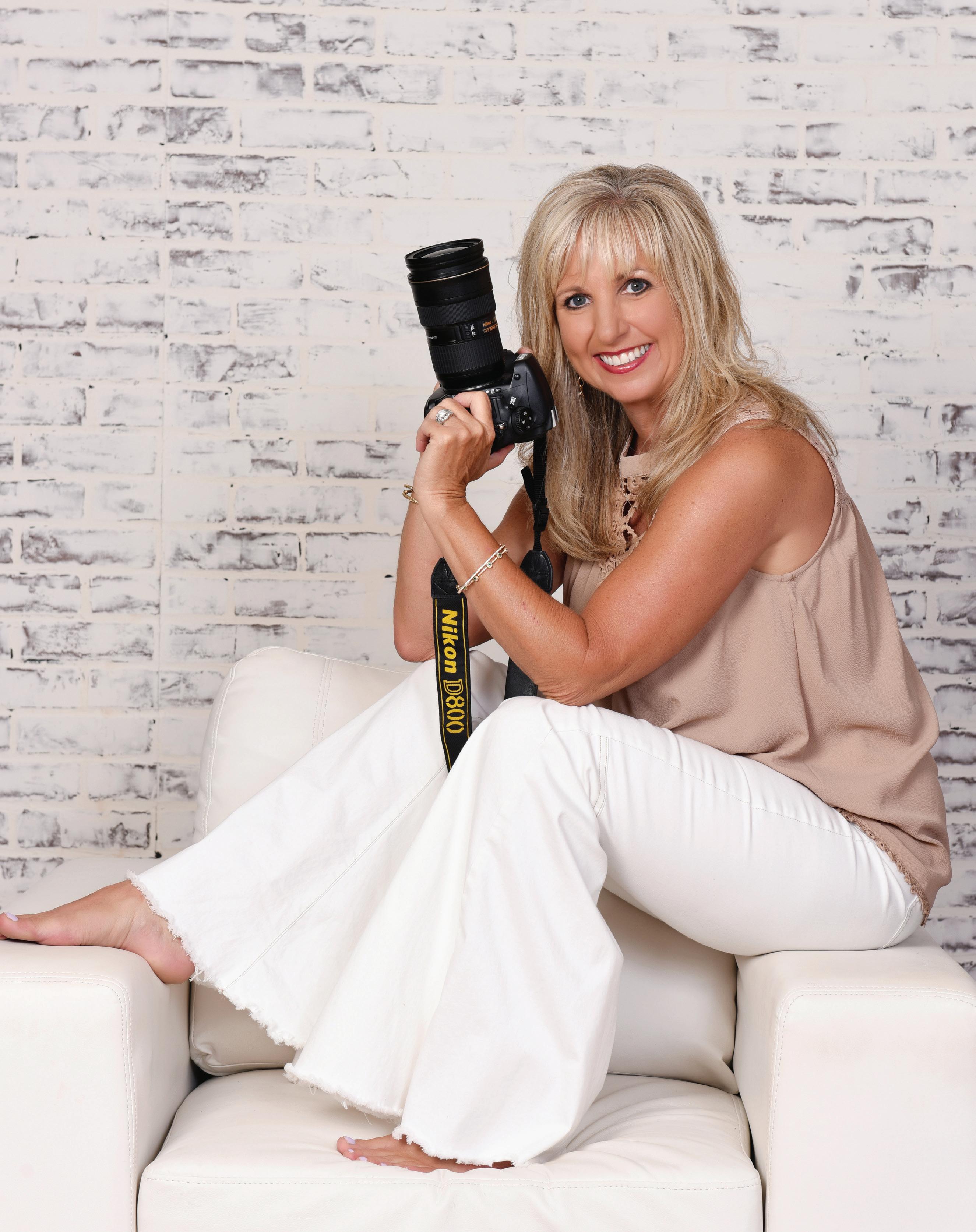
He’s a martial arts master, but Dewitt Davis’s greatest talent is teaching youth the value of selfdiscipline and respect.
Art and worship are one for Meredith Raiford who has traveled the world inspiring others with her murals.
Celester Bacon has many talents, but writing and directing local plays that encourage others is one of her greatest accomplishments.
“It’s an honor to serve you and your families. Stop by and visit with us today!”



In1951, Efton and Uldine Moseley started a family in Lyons, Georgia, with the addition of three daughters–Angelene, Karen, and Melba. Just across town another family was beginning when Dr. Joe Palmer opened the Dental Center of Vidalia in 1960. Over the past 58 years both of these families have grown and prospered. Today, Dr. Kacy Morris helps Mrs. Uldine’s family, which now spans over four generations, stay healthy with excellent oral care. The doctors and staff at Dental Center of Vidalia love to watch as children grow to adults, have their own kids, and bring them to our practice. Dental Center of Vidalia would love to help your family smile bright as well. Let our family help take care of yours.

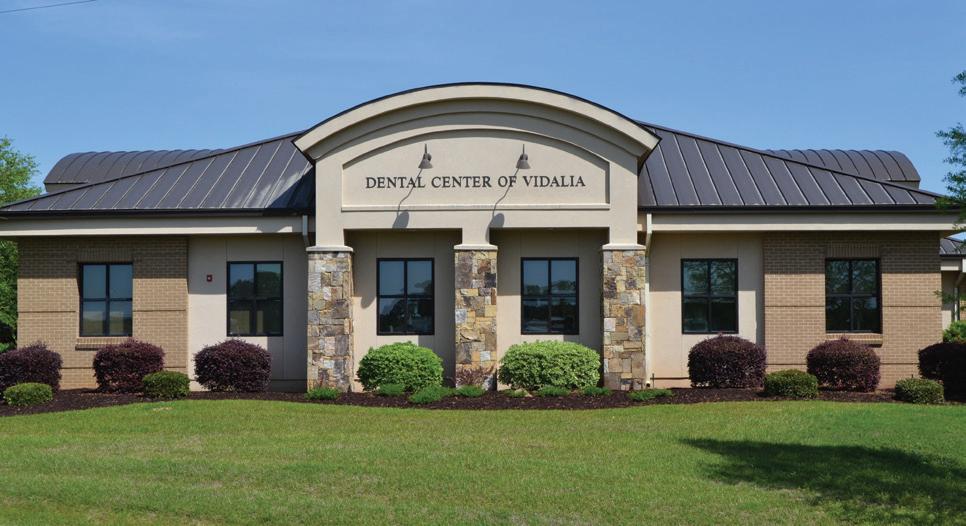

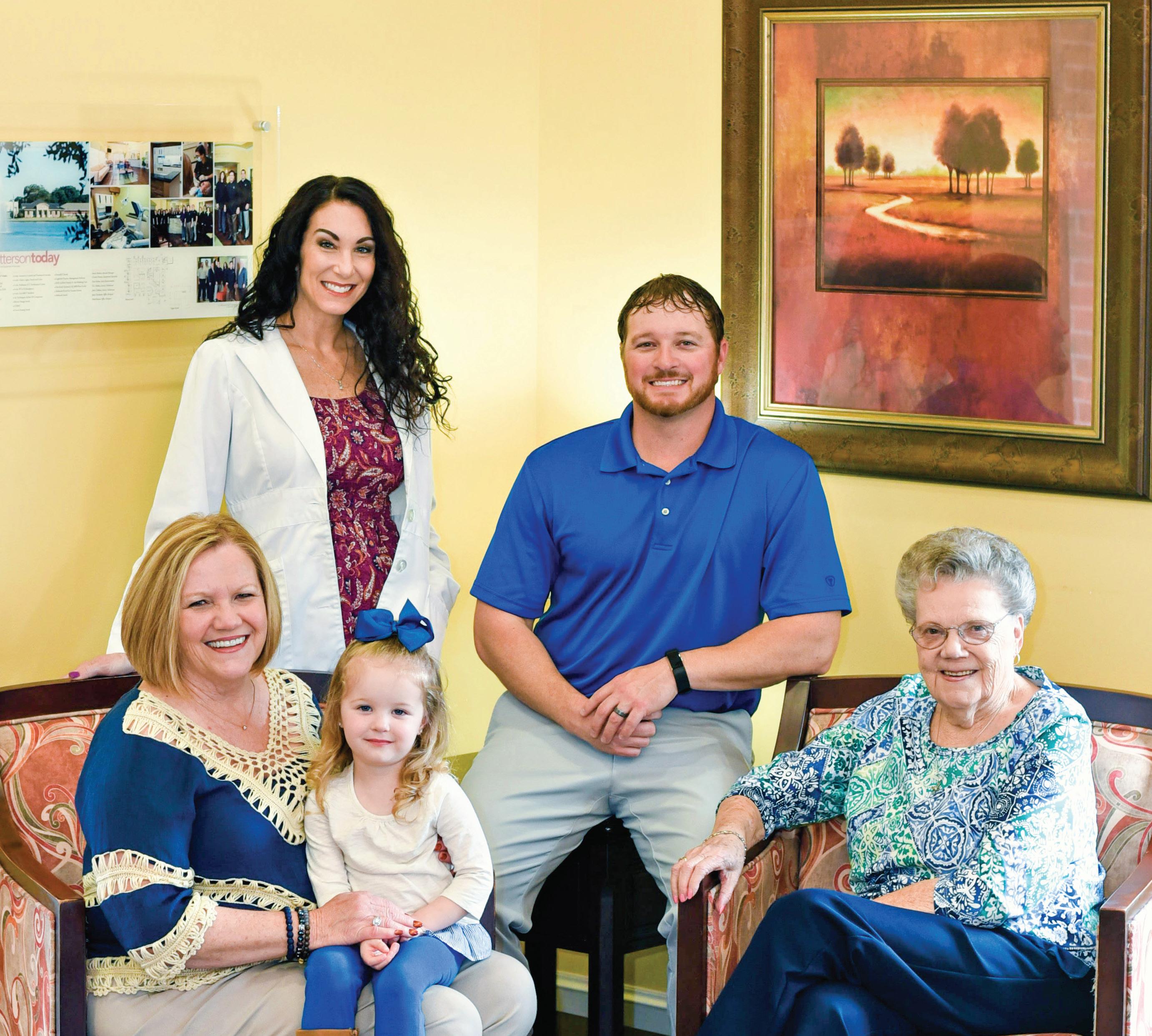




As a Filipino born artist and photographer, Dominique James has traveled America documenting some of our greatest icons.
Known for her encouraging words, “Ms. Ella” shines her light on the community.


Empowered by prayer, Landon Harvill’s family learns the value of friendship, supportive doctors and miracles.
48
Although she is the first Filipino-American judge in Georgia and the youngest Asian American to serve on the bench, Judge Rizza O’Connor’s greatest role is inspiring young leaders in our community.

60
Dewitt Davis is a master in martial arts but teaching self-discipline and respect to youth is his greatest talent.
70 | A Picture of Success
Hard work, determination and vision helped Jesslyn Johnson cement one of Toombs County’s most successful businesses.
This Summer
Try these 8 professional tips for protecting your pets from summer challenges.
Meredith Raiford has discovered art’s true purpose–to inspire and uplift others.
100 | Down on the Farm
A collection of stories as told by Mose Coleman, Jr.
106
Celester Bacon is a school nurse, hair braiding genius, and writer/director of a series of plays that inspire people.
114
An accomplished lapidarist, Emory Davis makes treasure from the objects that lie at our feet.

48
128 | Last Words
Social media has its advantages, but take time to unplug.
8 | Flipping the Script on Cancer
Local specialists and a new cancer center are working together to improve cancer outcomes in Toombs County.
114 | Spirit of Creativity
Celebrate art in Toombs County
84
96 | Local Marketplace
94 | Main Street Lyons
98-99 | Downtown Vidalia Association
128 | Chamber of Commerce
130 | Hometown Happenings
136 | Scenes of Toombs
A picture is worth a thousand words and 999 of those could be used to describe what it takes to get the perfect shot. Wind, rain, heat, clouds or lack of, unhappy children and more can all hinder a photographer’s work. At TCM, we know this well. Some shots are easy, some are hard work, and sometimes you just have to improvise. The original cover idea for this issue was completely different on paper, but when the rain interfered, it took a little creative thinking and the collective talent of Jesslyn Johnson’s team to come up with a solution that turned out beautifully. Sometimes the best things are born out of chaos.



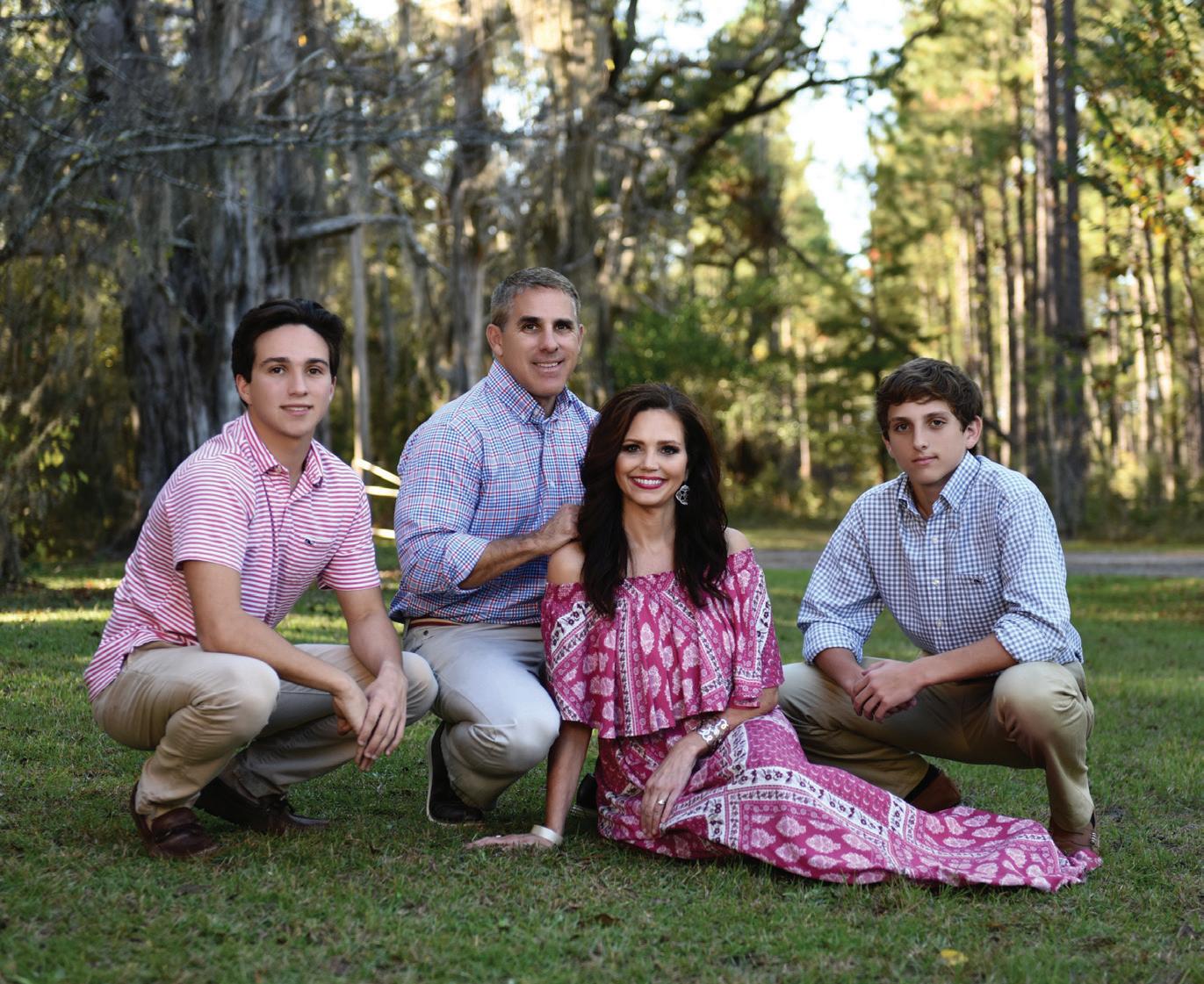

That was the response I gave my dear husband when he quite seriously asked me if I wanted to move to Italy for a couple of years. Don’t get me wrong, I do love Italy and the carefree spirit it embodies...and the food...and the wine...and the art. It is an amazing country that we’ve spent many vacations enjoying. But always after a week or two, I am perfectly content to crawl into my own bed right here in Toombs County. This moving thing was a stretch for me.
Marrying a “renaissance” man comes with a price, and that price means you may never know what adventure you will end up on. When the opportunity arose for us to spend a couple of years working with the USDA to help feed the world...we just had to take it. After God continually opened doors in that direction, it became quite clear this was meant to be. So, yes, I ate my words and started packing.
Many of you have asked what will happen to the magazine. I guess you could say we are expanding internationally. I will continue to work on TCM from our “Rome office” while TCM’s new Director of Marketing and Media Relations Ann Owens will be my connection to everything that’s happening here. (Makes us sound fancy, huh?) Each issue will continue to offer exceptional stories, pictures and advertising opportunities. We even have a new website that will be updated regularly with more fun information about life in Toombs County. We have ideas, lots of ideas, so stay tuned to see what’s next!
For this issue, we have more incredible stories about men and women making a difference in our community with their words, actions and creativity. Many of these stories highlight people who became successful at things they did not realize they were gifted to do until they were willing to take a risk and step out in faith. I am also thrilled to share stories of strong female role models that set great examples of leadership (Rizza O’Connor, p. 48); courage (Elizabeth Harvill, p. 36); business success (Jesslyn Johnson, p. 70); encouragement (Meredith Raiford, p. 84); hope (Celester Bacon, p. 106) and joy (Ella Neavins, p. 24).
It may sound cliché, but life truly is a journey. It’s one that we cannot travel standing still. My advice is this: be willing to take risks, to chase some dreams, and to write your own story even if you have to go to Italy to do it.
PUBLISHER
Red Door Design & Publishing,
EXECUTIVE EDITOR
Stephanie Williams
CREATIVE | DESIGN
Elizabeth Beasley
Stephanie Williams
ASSISTANT MANAGER
Nikki Anderson
DIRECTOR OF MARKETING AND MEDIA RELATIONS


Ann Owens
SALES
Dottie Hicks
Daphne Walker
CONTRIBUTING WRITERS
Renée Martin
Beverly McClellan
Beth O’Neal
Ann Owens
Jackson Sharpe
Paula Dees-Toole
Teri R. Williams
PHOTOGRAPHERS
Eric Love
Lillian Morse Burton
Ann Owens
Paula Toole
Daphne Walker
PROOFING
Beverly McClellan
COVER PHOTO
Stephanie Williams Executive EditorPIX Photography


like these that compelled hospital leaders to want to “do something” to improve both access to cancer care and outcomes in the greater Vidalia area.

As it turned out, that “something” was to continue the regional health center’s mission of bringing specialty services to the area by building a state-of-the-art cancer center where it was needed most –in the heart of Toombs County.

Pulling services together in one place was not only critical for the convenience it offered patients, but in other ways as well.
Did you know there is a place, right here in Vidalia, where a team of specialists is working to change cancer outcomes in our community?
In fact, that’s exactly what the cancer specialists at Meadows Health are striving to do, said Meadows Health CEO Alan Kent recently.
“When we look at the most prevalent cancers here in Georgia, or what we call the ‘Big Four,’ we are acutely aware that lung, colorectal, breast and prostate cancer impact the health of our residents the most,” he said.
As Kent went on to say, it was statistics
Named for its generous benefactors, the Tommy and Shirley Strickland Cancer Center today offers cutting-edge technology, advanced clinical care and a range of cancer services – including both radiation and chemotherapy – all under one roof.
“Introducing radiation oncology alone was a huge game changer,” Kent said. “Before we added radiation, patients were having to drive to Dublin or Statesboro, some 30 to 45 minutes away, for treatment.”
And as Kent pointed out, while many cancer patients need radiation treatment, a good many more will need both chemotherapy and radiation.
“You can see where this would be tough on patients who may need one or both treatments to have to drive from one place to another,” he said.
The 20,000-square-foot Tommy and Shirley Strickland Cancer Center features:
• An array of cancer services including both radiation and chemotherapy.
• Advanced technology such as a dedicated CT simulator and a linear accelerator for precisely targeted radiation treatment.
• A team of cancer specialists including medical oncologists, surgeons, support specialists and a nurse navigator.
• Comfortable and private chemotherapy suites large enough to accommodate patients and their families.
Meadows Health is a regional health system featuring:
• The only nationally accredited hospital in Montgomery, Toombs, Treutlen and Tattnall counties. Includes six surgical suites, which are among the most advanced in the state.
• A large emergency department with 22 trauma, diagnostic and treatment rooms.
• A Women’s Pavilion with large, spacious labor and delivery suites and state-of-theart nursery.
• An ultra-modern cardiovascular lab where physicians provide diagnostic and interventional cardiology services such as angioplasty and heart catheterizations.
• A network of physician practices that serve Vidalia and the surrounding communities.
“Having all our specialists in one place increases collaboration,” Kent said. “So again, the benefit is to patients who have access not only to advanced medicine and state-of-the-art equipment, but to that continuity of care that comes from having all of these specialists and services under one roof.”
When it came to the actual layout of the cancer center every aspect was designed with the patient in mind – from large, private chemotherapy suites, to plenty of patient parking directly in front of the center’s main entrance.
This “patient first” approach also extends to the type of care patients receive when they come to the center for treatment.
“As our cancer specialists will tell you, cancer can affect every aspect of a patient’s health and well-being,” Kent said. “That’s why our center has embraced this patientfocused, holistic model of care.”
When a patient is first referred to the center, for example, that person meets with his or her physician who then develops a customized care plan.

He or she may then meet with a nurse navigator, or someone who helps patients navigate the healthcare system. She also helps to identify any barriers to care the patient may have, such as a lack of transportation.
The center’s Tumor Board may also discuss the patient’s case. Comprised of cancer center specialists and other staff or physicians from the hospital, the Tumor Board meets once a month for the sole purpose of discussing the most appropriate course of treatment for individual patients.
“This is what we call the ‘Gold Standard of Care,’” Kent said. “So whether it’s the Tumor Board taking up your case, or a radiologist walking down the hall to have a consult with an oncologist, we believe all of these things working together are going to change the story of cancer here in our community.”
How specialists and a new cancer center at Meadows Health are working to improve cancer outcomes in Toombs County
.
The new Meadows Health Cancer Center eliminates the need for travel with one comprehensive and convenient cancer center that features:


Radiation Therapy
The area’s only CT simulator and a state-of-the-art Linear Accelerator for precisely targeted radiation treatment.
Chemotherapy
Comfortable and private chemotherapy treatment rooms for patients and their families.
Patient Comfort and Convenience
Large, light-filled public and patient areas along with a garden, outdoor seating and snack station provide a comfortable and healing environment.
Every patient at Meadows Health is paired with a team of specialists. Based on the patient’s unique needs the team can include:
Nurse Navigator - to offer guidance and support throughout treatment.
Medical Specialists - including the area’s top oncologists, surgeons and support specialists to create personalized treatment plans.
Nutritionist - to provide dietary guidance as needed.
Vidalia, GA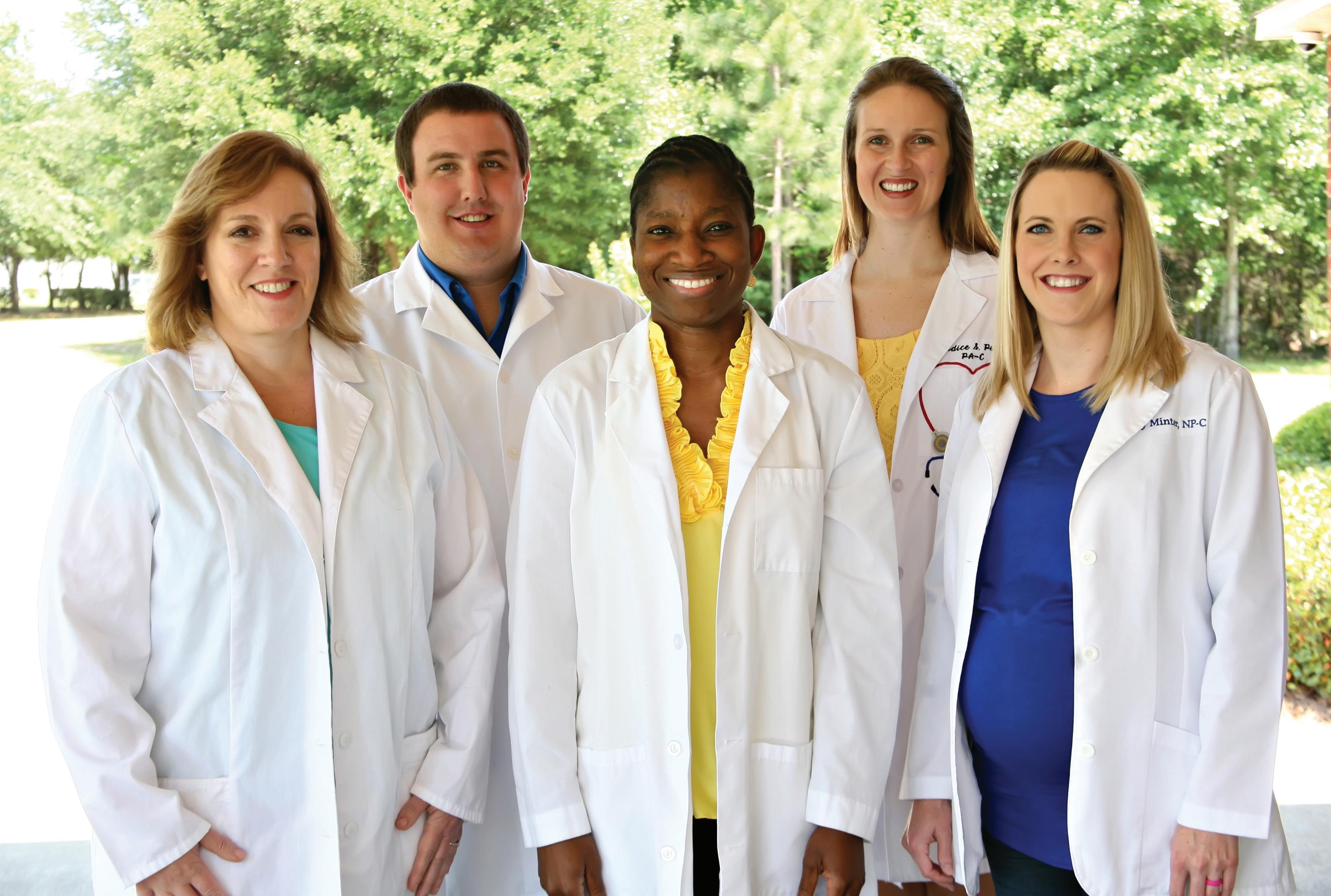


WITH A DEGREE IN ECONOMICS UNDER HIS WING, DOMINIQUE JAMES SET OUT TO ESTABLISH A CAREER ONLY TO REALIZE THAT HIS TRUE PATH AND PASSION LED STRAIGHT TO THE ART OF PHOTOGRAPHY–AND TO AMERICA.
The decision to come to America was not an easy one. “When people migrate,” said Dominique James, “most of them are trying to figure out what they’ll gain. In my case, however, it was somewhat the opposite. I was thinking more in terms of what I will give up and lose. I had been so fortunate and so blessed with a good life in the Philippines. I had a good career and circles of great and beautiful friends. That was what I had to give up to come to America.”
As an international commercial and fine art photographer, Dominque counted Avon, Apple, Epson, Fuji, and Nikon among his clients. Pictures he had taken of top fashion models and famous celebrities appeared on the covers of magazines and other advertising mediums across Asia.
When the opportunity to migrate to America finally came, he decided to go ahead with one important reason in mind—to be reunited with his family. “I couldn’t think of any other more compelling reason. In any case, I thought if uprooting and moving to a different country doesn’t work out, I can always go back.”
Dominique’s aunt (his mother’s sister), Dr. Melania Domingo, came to America in the 1960s working as a medical doctor. As an American citizen, she thereafter filed for a family reunification petition. First to rejoin were Dominique’s grandparents, and a few years later, his parents. “Each country is allotted a quota for approved visa petitions,” said Dominique. “The wait time depends on the country’s status and relationship with the United States. My grandparents waited ten years. My parents waited another ten years, and by then, only my youngest sister among the five of us was under eighteen and, therefore, eligible to migrate with them.”

A few years after Dominique’s mother, Linda Guevarra, became an American citizen herself, she also filed a family reunification petition for her children still living in the Philippines. “I knew it would be at least another very long ten-year wait,” said Dominique. “And at the time, ten years felt like forever, and I wasn’t really thinking seriously about it.”

Dominique graduated from the then all-male San Beda College in the Philippines with an Economics degree. “I was lucky to be raised in a family that valued education. The thinking is that education is a solid investment that will open doors for us. I could study to become a doctor, a lawyer, an engineer, or any other degree. Those were the usual career options my family was thinking as most suitable for me.”
There was only one problem with this well thought out plan. Dominique found no enjoyment in the path laid out for him. Instead, he said, “I began to get interested in other things such as working for newspapers and magazines.” He also had an interest in radio.
When a friend whose family was in the footwear manufacturing business in Marikina (the shoe capital of the Philippines) asked him to lead a media promotional campaign for their newly introduced high-end women's shoe brand, he saw it as his chance to move in a different
direction than his degree in Economics had provided.
Dominique worked closely with two of the top photographers in the Philippines, Jun de Leon and Wig Tysmans. “That’s how I also got introduced into the network of models, talents, creatives and industry suppliers. It was a kind of industrial complex, and I jumped head-on into that realm. We were participating in all the major fashion shows and media events, and the new brand we were promoting became the biggest hit in ladies' fashion footwear. We enjoyed great success such that anybody who’s anybody wore the shoe brand.”
In working as the brand’s promoter, Dominique
Dominique discovered his interest in photography by watching other photographers work on his jobsite.
"The photographers, Wig [Tysmans] in particular, noticed my extraordinary interest. He said, 'You should get a camera.'"



From the West Coast to East Coast and eventually to Toombs County, Dominique has created a collection of photographs that range from architectural and fashion to landscape and documentary. By traveling and photographing his "new" environment, he gained an appreciation for life in America. Many of his photographs contain glimpses of American icons like Washington D.C.'s Union Station (ABOVE).


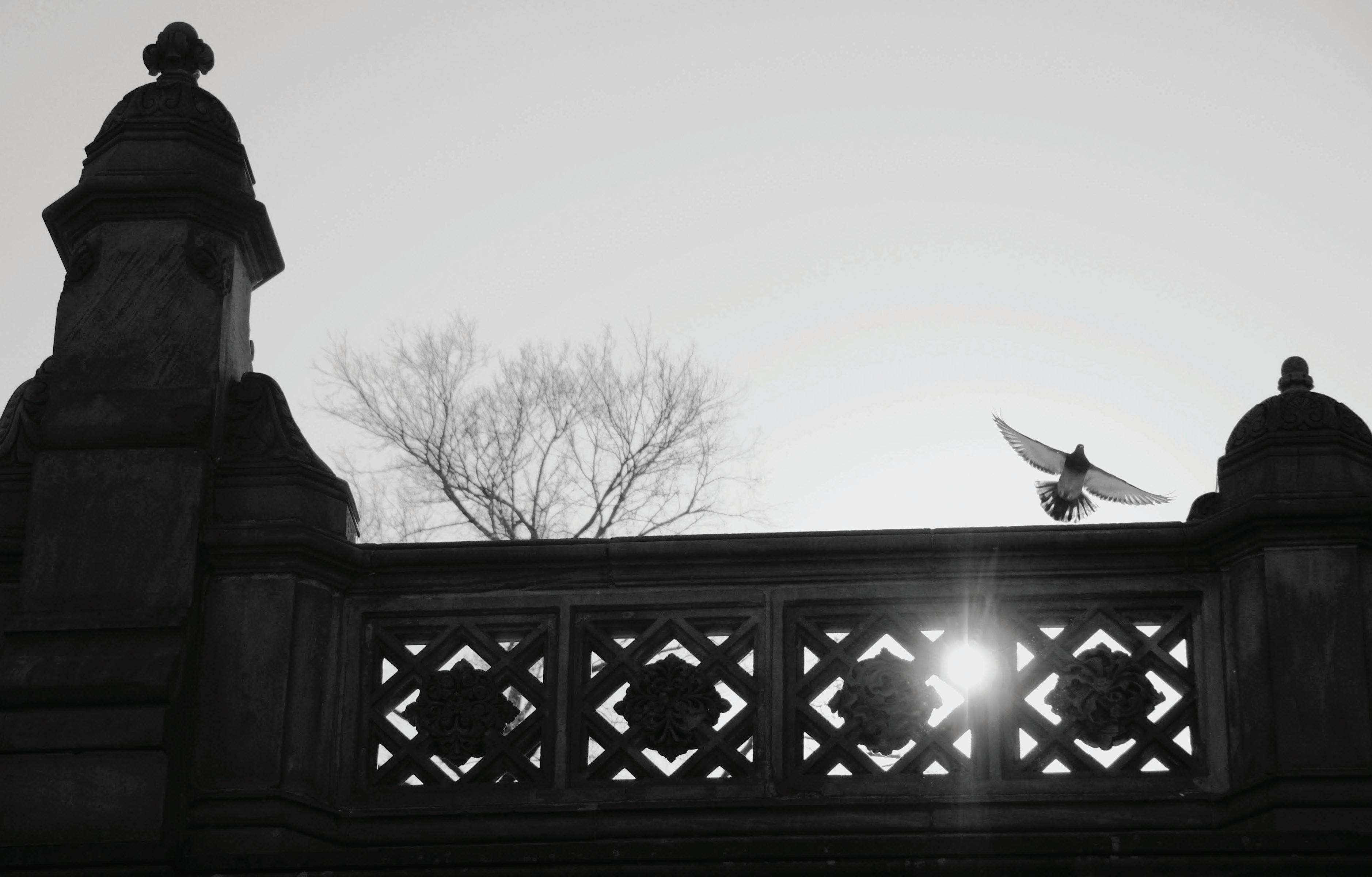
began to notice and appreciate the unusually high level of passion and commitment from the many people he got to know and with whom he worked. “It was incredible to have met people who absolutely loved what they were doing,” said Dominique. “I understood it was quite natural for people to always complain about how much they hate their jobs, but these photographers, these makeup artists, these stylists, and everyone in our circle seemed to genuinely love their work. They would work long hours and never complained. They wanted to do their best.
“I learned the ins-and-outs of the industry from being with them and observing them do their work. They generally didn’t have time to answer questions, so instead of being told, I actually saw for myself, first-hand, how they do things. During photo sessions, for example, I learned how they showcase the best features of the products, how they used lighting, and how they worked with the models to bring out the best expressions.”
As he watched the photographers work, Dominique realized that he was inadvertently apprenticing as a photographer himself. “The photographers, Wig in particular, noticed my extraordinary interest. He said, ‘You should get a camera.’ When I asked what kind, he went even further, telling me everything I would need to set up and get started. It was during the heyday of film photography, when the bar for entering photography was quite high, that I began to learn both the art and craft. Wig and everyone else were astoundingly generous with their sharing,” said Dominique.
It may sound strange to hear of a willingness to share knowledge, but true artists are not afraid of competition. In fact, collaboration, sharing knowledge and artistic ideas, works for the good of everyone. It’s a basic principle that when someone is willing to sow in the soil of another seeker, their own ability will multiply.
Before long, the work became too much for the existing rosters of photographers. “We had so many campaigns going on all the same time, pre-Internet and pre-social media days, such we needed more photographic images faster than the existing photographers’ output could provide. That’s when I began doing product photos that we would release in between major campaigns. Before I knew it, I was getting deeper and deeper into photography.”
This was not, however, the future for which Dominique’s
family had planned. “My family didn’t understand what I was doing at first. Being a photographer was not like being a doctor at all where, after taking the board exams, work generally comes to you. In photography, it’s more like— you have to find your own way, carve your own path, and create your own niche. My family was keeping an eye on me because they wanted me to pursue a more traditional path. For a time, I was somewhat of a black sheep.”
Dominique had fallen in love. “For me, photography is love,” he said. Of course, love alone won’t pay the bills, but Dominique had two things going for him. “I had a solid family upbringing and the security of completing a bankable college degree.”
Dominique knew how to work and had the tools to make his work financially viable. He began his photography career with film. “I worked with everything from negatives to transparencies to negatives, from 135mm film to large format. And then the ‘digital disruption’ came about, which I thought was an exciting and interesting time, and I went on to embrace it.”
In analog photography, the investment was in the processing materials, he explained. In digital photography, the investment has shifted to equipment as photographers keep up to date with the ever-changing landscape of new technology. “Both have their expenses. The idea of film is a romantic one. Even though I know how to do film and could do it if I wanted, digital is more efficient and generally more convenient, and the quality of digital photography today is incredible. Yes, there’s a certain texture to film photography, but if your medium is online, it’s not easily apparent. Even that so-called texture can be easily simulated nowadays through digital means.”
Among Dominique’s many accomplishments in Asia, his work has been featured in more than fifty one-man and group photography exhibits. While he is best known for his celebrity portraits, his scope of work is diverse: it includes cutting-edge fashion, product, food, travel, landscape, architectural, interior, and adventure photography for advertising, commercial, corporate, entertainment, fashion, and editorial use.
When Dominique first learned that he had been approved to come to the U.S. in the fall of 2007, which he had almost forgotten while immersed in his work as a professional photographer, he was suddenly faced with a tough decision. “Despite the fact that I knew such a day of reckoning would come, I was still shocked when I heard the news. At that time, I was starting to gain recognition for my work in the Philippines and in Southeast Asia. I’d been formally in the business for a little over ten years by then, and everyone knew me. I was booked for months out. And I had a growing circle of personal and industry friends. Packing up and moving to America meant leaving it all behind.”
But there was something in the U.S. that was even more valuable to Dominique than his photography business: Family. “Filipinos are generally family-oriented,” he said. Ironically, he received his first camera from his uncle, Nestor Domingo, the husband of his aunt in America, when
“The first thing I decided I would need to do was to get to know America. I spent some time traveling to as many major states as I could. I traveled from the East Coast, West Coast, Midwest, and down south to Florida.”
he was in grade school. “He gave me my first camera when he came to visit us in the Philippines.” Even though his uncle had passed away some time ago, Dominique had the feeling that everything had come full circle.
He packed up and boarded a plane for a place he had only seen on American TV shows and movies. After a sixteen-hour flight, Dominique landed in Atlanta and went three hours south to Vidalia. Leaving his home in Manila, a metropolitan city of high rises, and arriving in the rural South was a bit of a culture shock. “My idea of America was L.A. or New York City,” said Dominique.
Not only was the landscape in contrast to the homeland he left behind, he was certain he would freeze in the unfamiliar fall weather. “There are two seasons in the
Philippines: warm and hot, with a whole lot of rain in between.”

Upon arriving in America as a new permanent resident, he could not leave the U.S. for a successive period of five years if he wanted to apply for American citizenship. He wasn’t completely sure he wanted to stay but figured he had time to decide. “The first thing I decided I would need to do was to get to know America. I spent some time traveling to as many major states as I could. I traveled from the East Coast, West Coast, Midwest, and down south to Florida.” And everywhere he went, Dominique had his camera with him to capture the sights of his new environment.
“I settled in Manhattan and began looking for work. B&H, the biggest photography store in the world, is based in New York, and the PhotoPlus Expo, the biggest annual professional photography event, is held there each year at the Javits Convention Center. To a photographer in the United States therefore, there’s no better place to be than in New York City.”
Before long, Dominique’s clients came from the theatre, artists, models, and some talent agencies. “I did some commercial work and got the chance to work on fashion shoots for the famed New York Fashion Week.”
Dominique also became a certified Apple Trainer and became eligible to teach some of their photography classes, making him eligible to teach at any Apple store in the world. “I don’t know if it’s exciting to anyone else, but I’ve actually been to more than fifty Apple stores in the U.S. and elsewhere, including Cupertino.” He smiled.
Perhaps even more important than connecting with new clients, Dominique connected with the Filipino community in New York. “The largest communities of Filipinos are in three places: first, Hawaii, because of the proximity to the Philippines and the weather,” he said and laughed. “Secondly, Los Angeles and San Francisco. And thirdly, in the tristate area of New York, New Jersey, and Pennsylvania.”
Another important transition for Dominique was with something as common and simple as currency and transportation. “The currency in the Philippines is pesos. I didn’t know if a cup of coffee was expensive or not. I had to learn how much I could spend and how much I needed to earn in dollars to make a living.” Anyone who has ever traveled outside of the U.S. and tried to convert foreign currency in your head while trying to simply pay for a drink can sympathize.
Two years after coming to the U.S., Dominique had to formally close his photography business interests in the Philippines. “I learned that it was
not about the equipment or the studio or the setup and the staff. It was my work that people wanted when they came to my business. I had to be physically there, doing the shoots.”
Closing the business caused Dominique to come to a definitive decision to stay in the U.S. At the end of five years, he was approved for citizenship. America was now officially his new home. The oldest of his five siblings, he said, “Except for one married sister who visits with her children at least once a year, all members of my immediate family are here in the U.S.”
After five years in New York apart from his family, Dominique decided to return to Georgia and anchored a base for his professional photography work in Atlanta. “My immediate family in America lived in Georgia, and it just made sense to me to come back to be close to them. Even though I had built a budding network in New York, I didn’t really want to be that far from my family.”
When his father had passed away, Dominique immediately returned to Vidalia to care for his mother. “The longer I stayed in Vidalia,” he said, “I looked around and started picking up some great work. However, I thought Vidalia needed something more. I was restless. I felt there was something I could do to contribute to the area.”
It sounded so simple, but it was a profound statement from a true artist. Many have abandoned a dream because of a comparison mentality rather than honoring the contribution of others. With his camera in hand again, Dominique was reminded of the love that had first captured his heart. He began with pictures of historic places in downtown Vidalia, which he posted online for all to enjoy.
After his return, Dominique also discovered an active Filipino community in Toombs and the surrounding counties. “In the Philippines, people get together twice

a year. Once in the summer and at Christmas time. There are several islands and everyone gathers from the different regions and brings special dishes. Filipinos in the U.S. continue the tradition to stay connected and keep the community alive. This past Christmas, more than two hundred met in the Callaway Center at Partin Park. I always look for three or four dishes I know will be there. It’s like holiday feast food. Oh, I can almost taste the kare-kare!” He closed his eyes imagining the taste of the Filipino food.
For his next project, Dominique presented a major large-format color photography print exhibition at the historic Altama Museum of Art & History in downtown Vidalia with the supervision of its Executive Director, Jennifer Martinez. “With the help of some of the members of the Filipino community, we identified 25 Filipina women from the Magnolia Midland area whom we felt deserved to be acknowledged and given prominence for their contributions. There could have been more, but only 25 could be accommodated for the exhibit.”
The exhibit was called “Filipina: Beacon of Light” and was on display from February 17 through March 31, 2018. The formal portrait photography exhibition featured Filipina women from all walks of life. Two were doctors in our area: Dr. Frances Acosta and Dominique’s aunt, Dr. Melania Domingo. Magistrate Judge Rizza O’Connor, and Dominique’s mother, Linda Guevarra, were also among those photographed. Other Filipina women featured in the exhibition included Beth Bridges, Carmela Lopez,
Dominique's most recent exhibit, "Filipina: Beacon of Light," was held at the Altama Museum of Art and History in Vidalia. It contained portraits of 25 Filipina women living in our area and celebrated the different facets of their lives.

Christina Matias Johnson, Cita Alba Anderson, Daisy Lupo, Demie Aseron, Emely Lumayno Smith, Evelyn Dacalos Gay, Felicitas F. Rimando, Haydee Moxley, Jessie Nail, Jocylin JoAnn Mariano Jett, Liberty Saburnido Lumayno, Michelle Matias Phillips, Minerva Cabrera Poblete, Nerry Fernando, Nilda Murillo Colson, Paola Rimando Domingo, Rosita Matias Johnson, Ruth Marron Rimando, and Yollie Cabaysa.
“In this exhibition, I wanted to show the many fascinating facets of the Filipina women,” said Dominique. “A common thread they shared was that each had faced personal challenges in the pursuit of better life, not only for themselves but also for their families and others through their formal work and community work.”
Dominique collaborated with sisters Maddie and Riley Adams of J. Leigh Salon and Maddie X Hair, and also with sisters Taylor and Serena Hayden to do hair and make up of studio pictorials of the Filipina women. “I was very lucky to find these incredibly young and talented hair and make up professionals. I’ve worked with so many hair and make up artists from all over the world, and they were every bit as good as anyone I’ve ever worked with. They delivered!”
Although Dominique cannot say for certain what his future may hold, there is no doubt it will involve two things: family and photography and in that order. He is available for personal or commercial photography work, and his portfolio of work can be viewed online at www. dominiquejames.com. UTCM
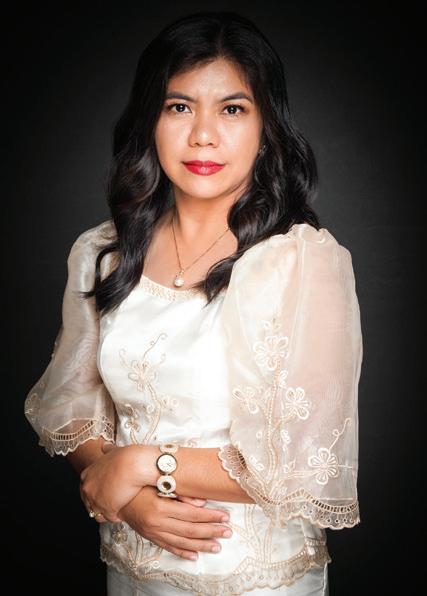

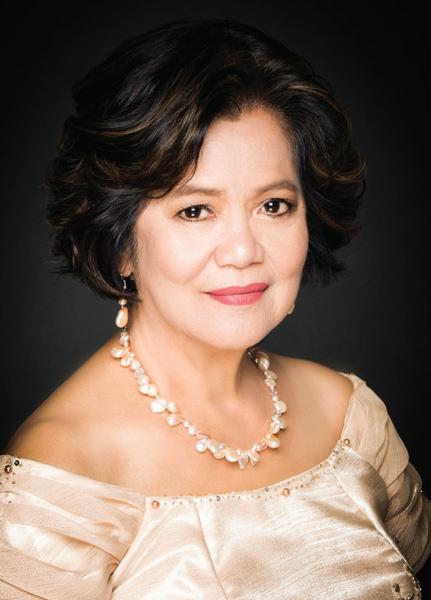




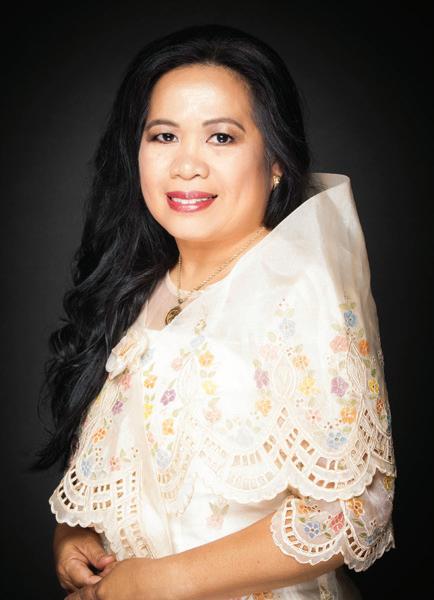











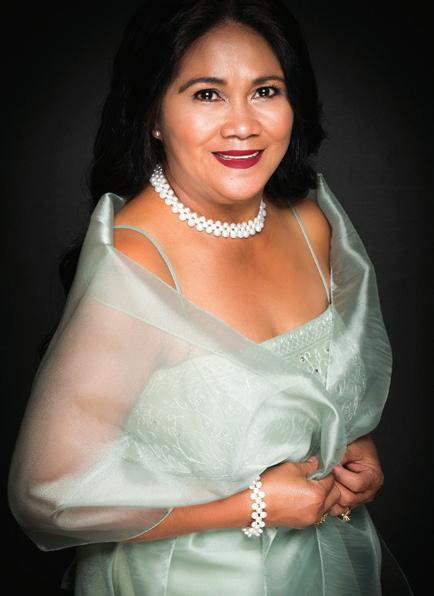

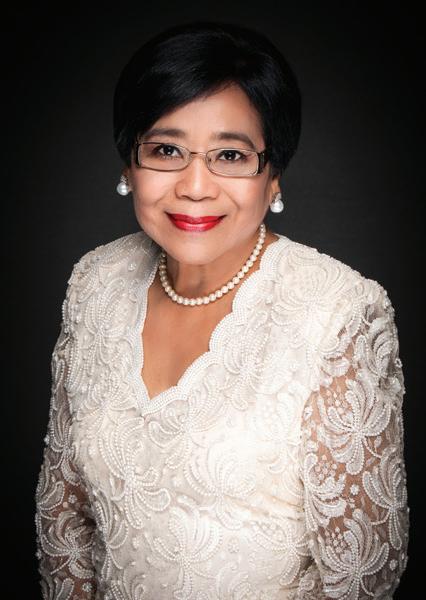


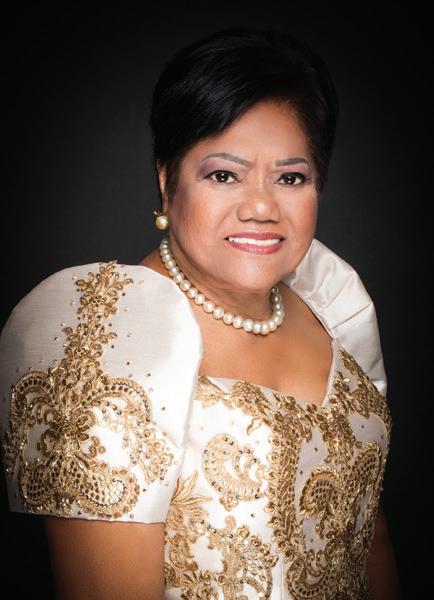

Acute Care - Same Day Appointments, Physicals, Healthchecks & Vaccines

Most Insurance Accepted United Healthcare & Blue Cross/Blue Shield PPO & HMO Providers
Monday - Friday, 8:00 AM - 5:00 PM
Established patients may be seen at our sister clinic Vidalia Pediatrics after hours

Monday -Thursday, 5 PM - 6:30 PM and Saturday, 9 AM - 12 PM
Etta Boss-Cole, M.D., Candice Purvis, PA-C, RD, LD, Archie Kirkley, PA-C, Laura White, FNP-C, Molly Minter, FNP-C
303 Harris Industrial Blvd., Suite 1, Vidalia, GA 30474 | (912) 537-9991


Owners, The Temples Company
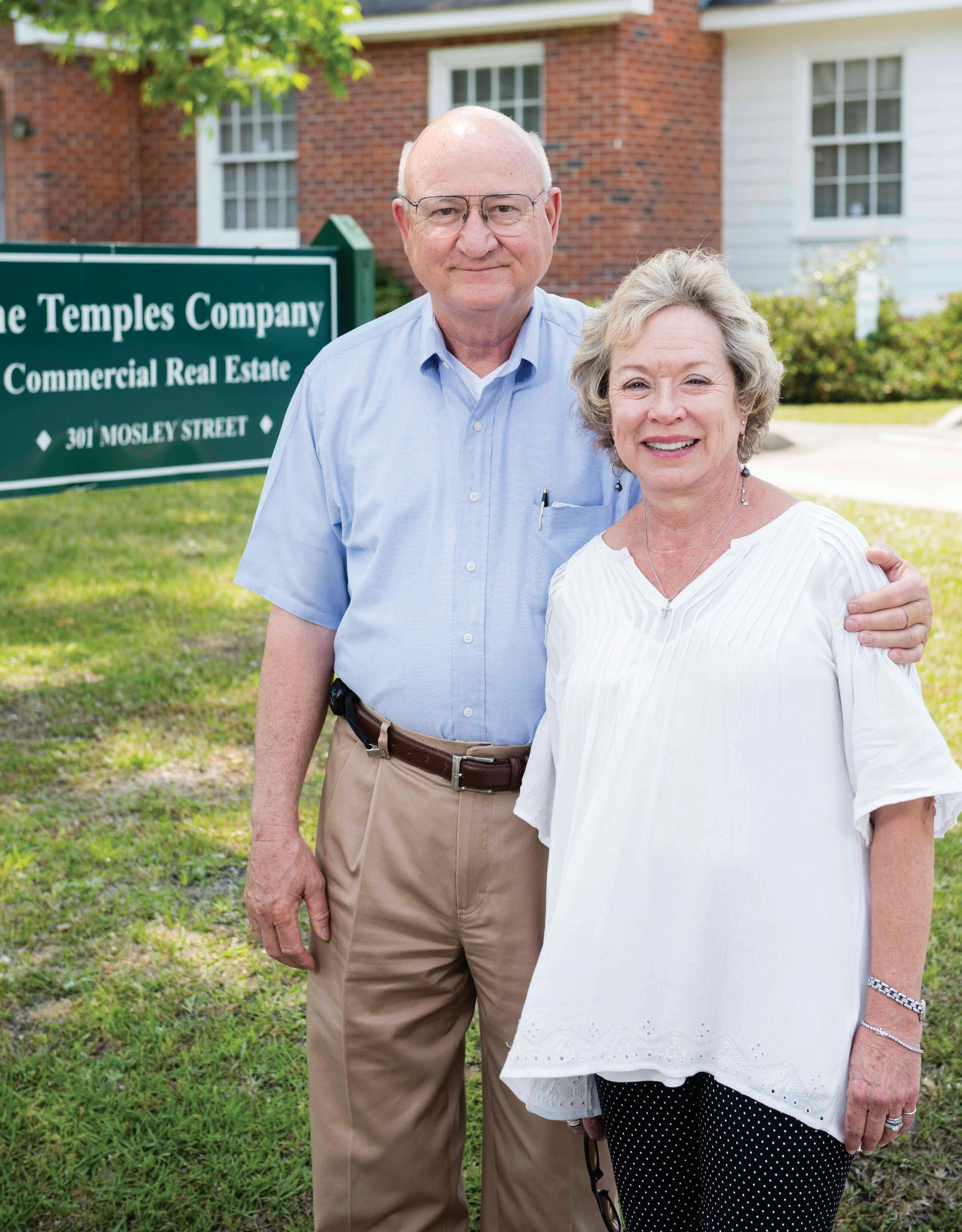
B.B.A. in Accounting, ’67
“Being married while still in college prepared us for life itself. An education is the beginning of a lifetime of opportunities and discoveries. We are fortunate to have Georgia Southern as a neighbor.”
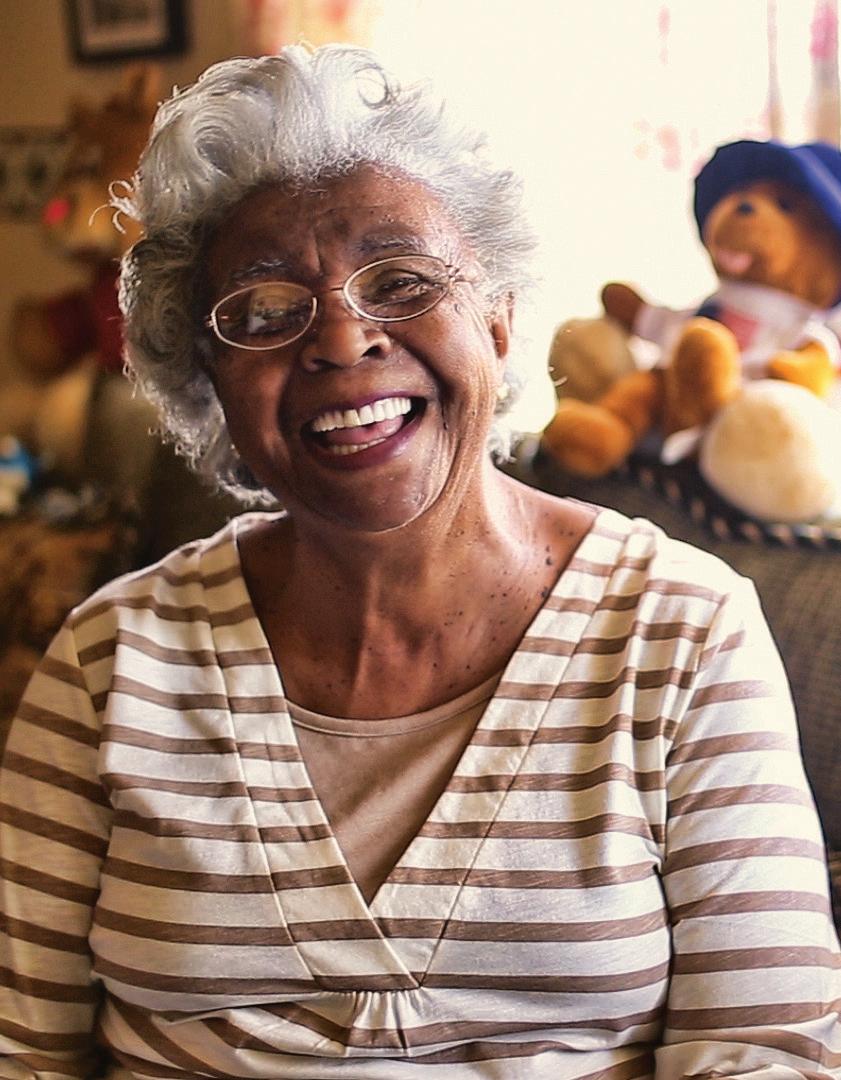
she said with a voice as warm as dark brown velvet. “You have a nice day now. I love you.”

I had no intentions of speaking to anyone. In fact, I’d purposely avoided eye contact as I passed other shoppers in between the aisles in Walmart. Like everyone else, I was in a hurry. Startled, I turned to the woman I had assumed was there to deter shoplifters by checking receipts. “Thank you,” I said.
From that moment on, my outlook on the day was different. I slowed down and thought about simple ways we affect others for good. It wasn’t only her words, but the heart with which they were spoken. It was like having an encounter with the African American woman in The Shack. Regardless of what you may have thought about William P. Young’s fictional book or the movie, the beautiful way in which the woman characterized God’s unconditional love was pretty amazing. Just like Ms. Ella.
Since I knew Walmart didn’t have God on their payroll, I briefly considered if the woman might have been an Angel. But after seeing her several times in the same place, I tossed out the Angel theory and decided to ask if she would meet me one weekend for a chat.


As much as I appreciate Walmart, (which should be obvious from all the money I spend there), I carefully explained that I didn’t want to meet with her to talk about her job. I wanted to talk about her. Who was this woman? And where did she come from?
Ms. Ella agreed to meet me on one of her days off. When I realized she had to come from McRae, I insisted we meet halfway. It was hard to believe that this 78-eight-yearold woman drove from McRae, Georgia, to Vidalia to work and had been doing so for the past nine years. Of course, she could have found work closer to home, but she insisted that the drive was worth it.
“I love my people.” And by “my people,” Ms. Ella meant every single shopper who comes through the doors at Walmart. It was a humbling realization to see the difference in the way I thought of my fellow shoppers in contrast to Ms. Ella’s perception of them.
A beacon of love, “Ms. Ella” better known as the door greeter that changes your day with a warm smile and words of encouragement.
The youngest of five, Ella Neavins was one-year-old the day they buried her mother. Her father had abandoned them months earlier when he left her mother for another woman. Her widowed Aunt Mary Bell took in her sister’s children and raised them as her own. “She never mentioned what my father didn’t do for us. She taught me to work, to be independent, and to take care of myself.”
As a child, young Ella picked cotton and threshed peanuts alongside her aunt whom she called Mama. Her aunt also took Ella with her to deliver babies. By the time Ella was nine-years-old, she could deliver a baby on her own and knew how to turn a breech baby during labor. For payment, she said, “They would give us pieces of hogs or
deer meat. My mama taught me how to love and care for people, and I had everything a poor child could ever want. I didn’t have the best things, but I was appreciative of what I had. Nowadays, kids want all this expensive stuff. But I wasn’t raised like that. There was no such thing as Santa Claus. Mama said, ‘I’m your Santa Claus.’” It was important to Ella’s aunt that she understood that Christmas gifts were the result of her labor of love.
Ella met her father, Lloyd Neavins, for the first time when she was 17. Remarkably, she forgave him for the past and opened her heart to a new relationship as his daughter.
A year after graduating from high school, Ella gave birth to a daughter, Nancy Denise. She moved to Jacksonville,

Florida, soon after to live with her cousin, leaving Nancy in her aunt’s care in so she could work. Ella came home as often as possible to spend time with her daughter.
After a time, she grew tired of cleaning houses and decided to call her father who was living in New York City at the time. “He was working for Bryant’s Theatres as supervisor over maintenance of about eleven theatres. I asked if I could come, and he said, ‘Yes.’”
Ella moved in with her father and his wife Doris and went to work at a plant



on 43rd Street scraping burnt buckram, a stiff material used for sequins, she explained. “I worked at the factory awhile and then went to work for my father cleaning theatres where he was the supervisor.”
Ella met many famous actors at the theatre who came to promote their movies, including James Brown, Bruce Lee, Jim Kelly, Pam Greer, Al Pacino, and Richard Roundtree. But the experience she enjoyed most was the opportunity to work as a backup dancer at the Apollo where she met people like James Brown, B. B. King, and Bobby “Blue” Bland.
In 1962, Ella married and had a son, Bernard Winn. In the years that followed, she
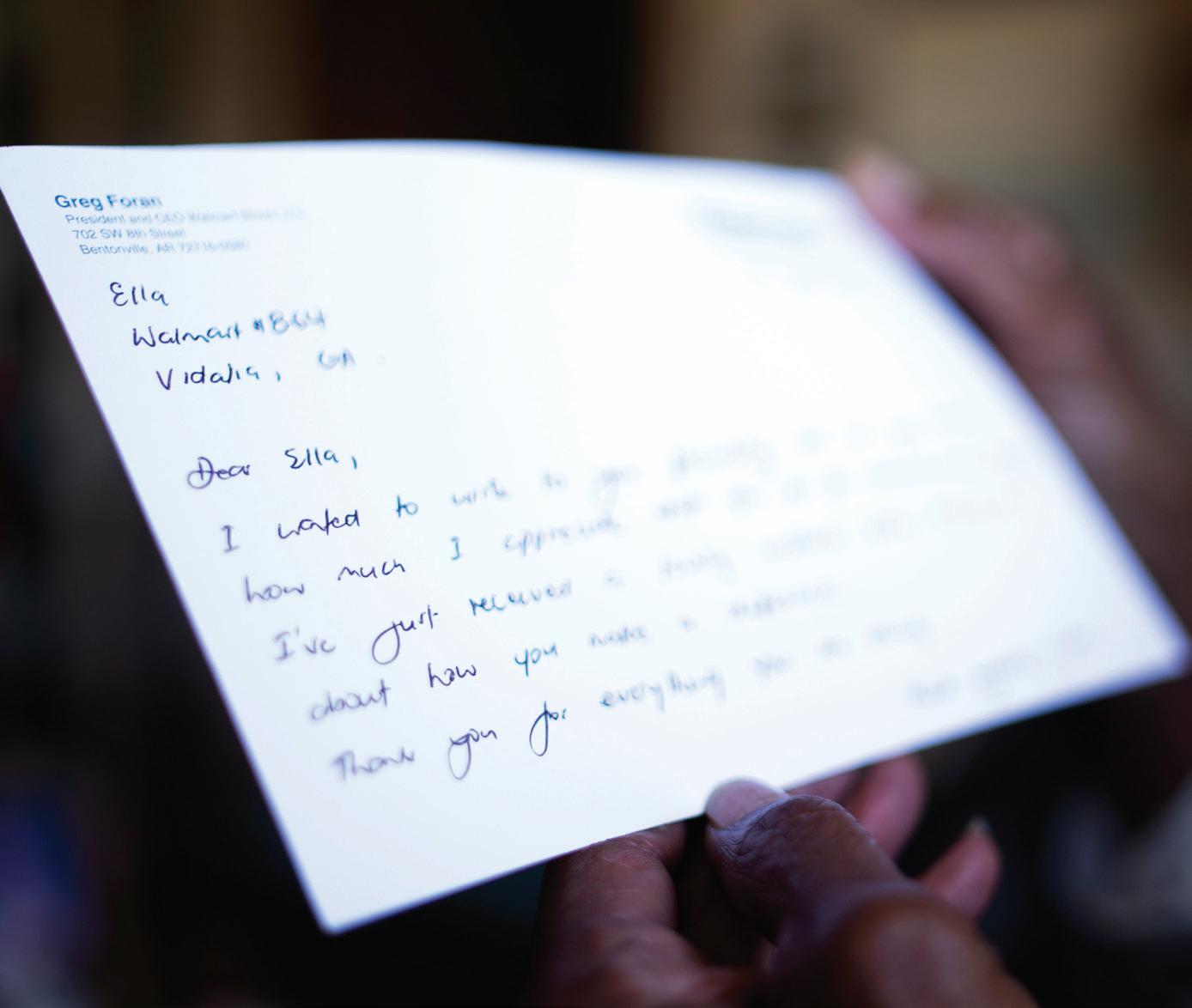
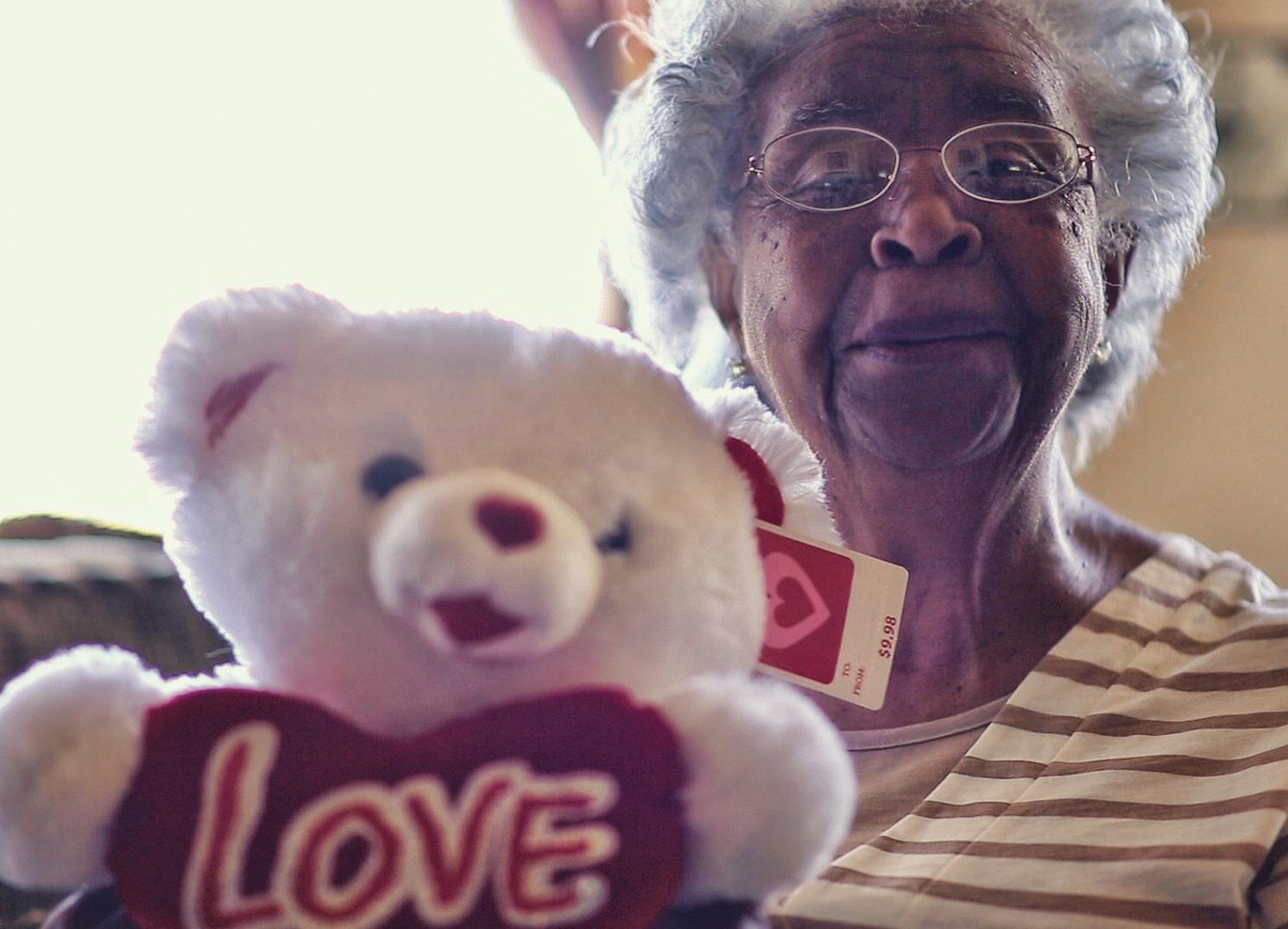
worked with the Board of Education as a security guard. She would go through three failed marriages before her marriage to James Wheeler, a merchant seaman, in 1975. In 1988, Ella and James moved to Atlanta. Tragically, James died suddenly of a heart attack in 1992, and Ella was once again on her own.

In 1995, she rented a room to a young man named Lonnie Brown who had come to Atlanta hoping to fulfill his dream to become a stand-up comedian. As he got to know his landlady, he asked if she would try out some of
his scripts. “Ms. Ella was a natural. So witty and funny,” said Lonnie. “I asked, ‘Have you ever thought about doing stand-up comedy?’”
“Yes,” she said, “but I never knew how to get started.”
On her first night of performance in a comedy club, “She got a standing ovation,” said Lonnie.
In the months and years that followed, he became her writer, promoter, and producer. Ms. Ella traveled the comedy circuit performing throughout Atlanta, Tennessee, Virginia, and Florida. She also performed


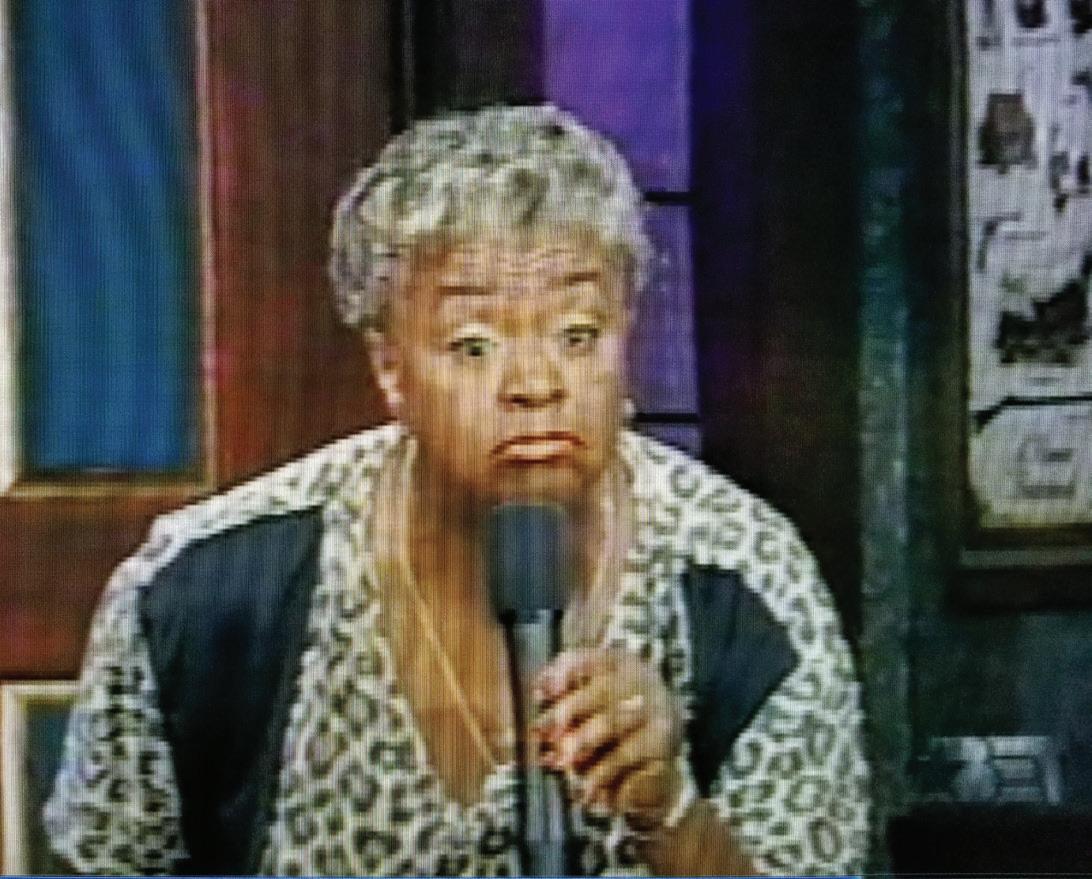
on BET’s ComicView as well as on The Mo’Nique Show and opened for many famous comedians including Bruce Bruce, Earthquake, and Sheryl Underwood. “Ms. Ella was actually performing in Aruba in 2005 when Natalie Holloway went missing,” said Lonnie.
In 2002, Ms. Ella began having severe headaches. From an MRI, doctors discovered an aneurysm. “I went into surgery, and they put three rolls of titanium in my head. I was in there for twelve hours,” she said. “That’s when I started slowing down.”

After the surgery, she moved back home to McRae. Ms. Ella worked for a time at Husqvarna Outdoor Products and at Jacks Mart. In 2007, she put in her application at Walmart in Vidalia and was hired that same day. “I started out working in apparel,” said Ms. Ella. “From there, I worked the fitting rooms.”

After a time, she could no longer work the floor. “My head started getting rough. My equilibrium is off.” Ms. Ella also had an injury to one of her eardrums. “I had surgery, but it didn’t fix it. I can only hear in one ear now.” At around the same time, she said, “Walmart decided to bring back the ‘People Greeters.’ I’ve been doing that for about a year and a half now.” (At the time of this publication, Ms. Ella had resumed her place working in the fitting room area).
As she greeted us day after day, customers and visitors to the area began posting remarks on Facebook about her thoughtfulness. But the real surprise came when she received a personal handwritten letter from Greg Foran, President and CEO of Walmart Stores in the U.S. He wrote: “I’ve just received a lovely customer letter telling me about how you make a difference. Thank you for everything you are doing.”
Every day we hear of another violent act or injustice. Much of the news seems driven by arguments and negativity. The atmosphere needs a shift. Words of kindness, encouragement, reassurance, and praise are in desperate need in our homes, schools, and workplaces. Ms. Ella’s hope is that “everyone can learn to love.” It’s a big hope. But it couldn’t be anything less for the woman who is unafraid to love us all. UTCM




Altamaha Bank is pleased to have John Tyson serve as our new Chief Financial Officer. As a Vidalia native, John brings years of banking experience, and most importantly, a connection to the people our bank proudly serves. We value the relationships that we have built over the last 40 years, and we are looking forward to a bright future.





 CFO John Tyson and CEO Brent Sammons
CFO John Tyson and CEO Brent Sammons

November 19, 2017, was a beautiful fall day. The sun was shining, and all was right with the Harvill world. Jason and Elizabeth Harvill and their three children – Aiden (11), Jocelyn (7), and Landon (5) –had just returned from a camping trip with extended family members. “We had had such a great time. Everyone was having a great time. We talked and laughed, and the kids were fishing. It was just fun,” Elizabeth said. The kids were out of school for Thanksgiving break, and their biggest worry was who was going to bake the turkey.
Then life changed in an instant. Forever. Landon had gone to a friend’s house that afternoon to play. He jumped on a fourwheeler, not realizing how powerful it was. He thought the machine was like his own Power Wheels, so he had no worries. But the fourwheeler took off with Landon hanging on for dear life. An adult saw that the little boy was in trouble and began to run after him. But in an instant, Landon lost control of the vehicle and was flung off into a tree, hitting both his head and chest.
When the Harvills received the phone call, they wasted no time in getting to their son, who was en route to Meadows Regional Medical Center. “I literally jumped up and ran out of the house without shoes,” Elizabeth revealed. “I kept thinking,’It’s going to be okay. Kids have little accidents all the time.’ I was not prepared for what I was about to see. It was something no parent could ever prepare for.”
The frantic parents rushed to meet their young son at the hospital. As doctors assessed his condition, the Harvills stood by. “We heard words like ‘fractured skull’ and ‘collapsed lung,’” Elizabeth shared.
At that point he had had so much trauma to his chest, along with air from the collapsed lung, that his heart had too much pressure to beat. As the Harvills watched in shock, Landon flat-lined. For five long, agonizing minutes, the parents stood helpless as doctors tried to revive him. “They inserted a chest tube and pounded on his little chest and pushed air into his body until life was breathed back into him,” Elizabeth remembered. At that point, the decision was made to air lift the seriouslyinjured child to the trauma unit at Memorial Hospital in Savannah.
As doctors worked to stabilize Landon so he would survive the trip, Elizabeth rushed home where she met her uncle, Jones Hart, and her brother, Bee Hart, who would be taking care of Aiden and Jocelyn for the duration of Landon’s hospital stay.
Elizabeth and Jason were not allowed to ride in the helicopter with Landon and had to make the 90 minute trip by themselves. “That is the longest drive when your child has been put into a helicopter, and there is no communication,” Elizabeth said. In their haste to get to Savannah, they left just as they were: Elizabeth was still barefooted while Jason had on his bedroom slippers.
Elizabeth’s first text to friends was very brief: “Pray,” she wrote. “Unspoken. God
This Vidalia family asked the community to “Pray Big” after an accident almost took the life of their child, and the results were miraculous.

TOP Landon’s parents, Jason and Elizabeth Harvill, stayed by his side during the ordeal, even sleeping on the floor beside his bed just to be near him.

RIGHT Passing out Thumb’s Up trophies to Landon’s care team. Elizabeth said, “They became family to us.” OPPOSITE PAGE Landon was in a hospital bed for so long, he had to slowly reaquaint himself with simple activities like walking down the hall.


knows the need. Pray now, hard, and get other prayer warriors on it. Urgent. Pray right this second, please.” Within a few minutes, a friend posted a few details about the accident on Facebook. Immediately, the message was shared with her friends, then with friends of her friends until hundreds were called to prayer. “God’s people began to pray!” exclaimed Drew Bolin, Family Pastor of the Harvills’ home church, Tabernacle Baptist Church, Vidalia, Georgia.
When Elizabeth and Jason arrived at Memorial, they parked, unsure of where to go. An off-duty trauma nurse – on his way home after working his shift – saw them and asked if they were the parents of the young boy who had just been flown in. At their nods, he instructed, “Follow me, and I will take you to him.” The distraught parents followed him to the pediatric intensive care unit where doctors worked on Landon. At that point, they gave the Harvills very little hope that their son would live. But

THUMB’S UP Landon began physical therapy in the hospital, but had to continue even after he was released in order to regain strength in his body.
Other aftercare included follow-up visits with each of the doctors who had treated him. One by one, the doctors released him to resume his normal routine. After his final release, Landon and Elizabeth visited his hospital caregivers, presenting them with a “thumb’s up” trophy. When Landon was in the hospital and unable to talk, he communicated with a “thumbs up or down” to let his caregivers know how he was feeling.
One of the trophies was was given to Dr. Brian Burnham (RIGHT), pediatric resident at Memorial. When Landon was hospitalized, Elizabeth asked Dr. Burnham several times if he was “out of the woods” yet. When she never received the answer she longed to hear, she finally told him, “Just twirl that stethoscope around your head when we are ‘out of the woods’” She never saw that – until that final visit in mid-March. On that day, the doctor surprised her when after examining Landon, he took off his stethoscope and twirled it around his head. Finally, the ordeal was over.

If you were to see Landon today, you would never believe that he had been through such a trauma. The family that learned to PRAY big is now learning to PLAY big. BELOW Landon’s schoolmates gave him a big “Welcome Home” when he was finally released from the hospital.



a deep peace had settled over Elizabeth. She was worried, but her worry was not borne out of desperation. When Pastor Bolin arrived, Elizabeth hugged him and whispered in his ear, “God’s got this. I’m scared, but God’s got this.”
When they saw their son, he was sedated and on a ventilator. He also had heart pads on his chest and an IV coming from his arm. “Monitors and screens were everywhere,” she said.
The first few nights the parents slept on the floor beside his bed, refusing to leave his side. As the days progressed, Elizabeth shared, “It was one of those things that felt like a nightmare.” But nightmares end, and this one did not. “We went through that for five days. Not knowing if our boy was going to live. To make things worse, the doctors couldn’t tell us and would not make eye contact with me or Jason,” Elizabeth said.
Meanwhile, back home in Vidalia, a local merchant – T98 in the Belk Shopping Plaza – hosted a fundraiser for the family to help cover the cost of some of the rising medical bills. The store also printed t-shirts that read, “Pray Big,” with a reference to the Scripture Matthew 21:22: “If you believe, you will receive whatever you ask for in prayer.” Soon, Vidalia and the surrounding area were filled with a sea of green as God’s people began to PRAY BIG. They expected big answers to their big prayers, and they were not disappointed.
One answered prayer came at Thanksgiving. Elizabeth’s father, Sam Hart, lives at Summer’s Landing, an assisted living residence in Vidalia. Every Thanksgiving Elizabeth usually takes him dinner since he is unable to join the family. She was concerned that he would have no one to see about him this year, but a “few” of her friends fulfilled the need – Mr. Hart ended up with 15 plates!
Another miracle occurred with Jason’s foot wear. He had worn his bedroom slippers for several days, and he needed a pair of shoes. He went to a shoe store in Savannah and searched for a pair of shoes, but all of them were priced higher than the $35 he had to spend. As he exited the store, he glanced over at a table where on-sale shoes were stacked. He spied a pair of tennis shoes that were just his size. And the price? 35 dollars.
Since Elizabeth had left home barefooted, she also needed shoes. But her need was also supplied. “I have no idea where my shoes came from!” Elizabeth laughed. “I had on socks in the Peds ICU waiting room, and someone gave me a pair of shoes to put on. I’m not sure if it was family or friend or who, but I wore them almost the whole time I was there. Then Cindy Reddick – from
Tabernacle Baptist Church was crowded on Dec. 17, many there to see Landon perform in the Christmas play, just as his mom had kept saying in faith. And perform he did. He may have missed a word or two, but no one cared. They were just proud he was able to be there.

When the play finished, Family Pastor Drew Bolin took over. He called Landon to the front and briefly shared his encounter with Elizabeth in the hospital and her heartfelt claim, “God’s got this!” He went on to say, “God’s people began to pray, and God listened and responded.” Gesturing to Landon, he proclaimed, “This is a miracle!”
He reflected for a moment and then continued. “God allowed this to happen to show His power and authority! To show that God still heals today!” He continued, “This isn’t about Landon and not about the Harvills. It’s about the power and authority of a living God who loves and cherishes you. And He wants a relationship with you.”
The play that day recounted the Christmas story, and Pastor Bolin encouraged those present to seek a closer walk with God. “He can lead you to a relationship with Him. Don’t leave without Him today,” he implored. “God loves you so much, He gave His Son so you could have this relationship with Him.”
WTOC News called Landon’s recovery “A Christmas Miracle.” But the message shared on Dec. 17 was about the miracle of the Savior’s birth. Both miracles have changed us. Forever.

Nurses, doctors and support staff offer us compassion, expertise and comfort during times of need.

At Meridy’s Uniforms, we show our gratitude by providing the latest uniform apparel, footwear, and medical accessories to our valued customers. We also offer unique gifts and Vera Bradley handbags.







For 34 years Meridy’s Uniforms has been serving our community and surrounding counties with quality products. Come visit our retail location in Vidalia or online at www.meridys-cherokee.com.

Seasons Design Center – sent me a bag of goodies, and there was a pair of shoes in there for me!”

Other miracles came in the form of encounters with strangers that crossed their paths as they moved about the hospital. Elizabeth spent considerable time in the hospital chapel, face down on the carpet, praying for her son and praying for strength for herself and Jason. “I don’t know how others go through this without God,” she revealed. After one such visit, Elizabeth found herself in the elevator with a hospital employee. The woman instinctively pulled Elizabeth into a hug. “She started praying,” Elizabeth stated. “Praying for my child. I asked her how she knew we were there for our child, and she said, ‘I just knew.’”
After several nights of sleeping on the floor beside Landon, a room at the Ronald McDonald house opened up, and they were able to get a few hours of needed rest.
After a few days of being on the ventilator, Landon’s condition improved, so doctors decided to remove the machine. “He seemed to be doing well at first,” Elizabeth shared. “He even asked if he could watch cartoons. We thought we were on the home stretch.”
And then the bottom of their world dropped out as Landon took a turn for the worse. His lungs collapsed again. “His punctured lungs were just too sick,” the tearful mother explained. He was put into an induced coma, and a different machine was used to breathe for him. A third chest tube was inserted to draw out the extra air and blood that remained in his chest. Doctors let the family know that if this did not work, their last option was to put him on the ECHMO. This machine would allow him to have an artificially-beating heart to accompany his artificial lung function. “At that point it would have most likely been a wait for us to decide to remove him [from the machines] and allow him to pass. At this point, he had an 11 percent chance of survival,” she stated. “Because he had to be on the ventilator so long, he developed pneumonia. He couldn’t cough because of the ventilator that was keeping his lungs inflated, so they’d have to take and literally run a tube down his throat to suction out the mucus,” the mother revealed. This had to be done 10 to 15 times a day.
While he was on the Oscillator in grave condition, Elizabeth had a panic attack. She stepped outside of the Peds ICU and leaned against the wall. “I tried to scream, but I couldn’t,” she revealed. “I tried to cry, but nothing would come out. At that moment, I realized that there was a very real likelihood that I would bury my five-year-old son. I was overwhelmed. My legs buckled, and as soon as my knees hit the ground, I heard the voice of the Lord telling me that Landon would be singing in the church Christmas play on December 17th.” Then something else happened that has never happened in her life as God pierced the veil of the future and allowed her to see Landon on that stage. “In all that chaos and grief, it scared me to see things and hear things so clearly, but I KNEW that it was a gift from my heavenly Father. I stood, completely invigorated, knowing – without a doubt – that I would not bury my son, but that he would live. We claimed that promise. That is faith. Believing when you can’t see a way, but believing what the Lord tells you, not what your reality insists, but believing HIM!” she emphasized.
She continued to share with friends and family: “December 17tth. Save the day,” she encouraged. Later she posted on Facebook, “Pray that Landon will sing LOUD and strong at the Tabernacle Baptist Church Christmas play on Dec. 17, his very first
We take care of the people who take care of others.
When Only the Best Will Do
play,” she wrote. “We will pack the house to celebrate the birth of our Savior and to give praise to our Maker who made it happen for him! I am claiming now that Landon will sing, and I am praising Him now for the healing He is bringing today and every tomorrow to get our boy to the play on time,” she finished. Writing those words took faith because even though he was steadily improving, he was still unconscious and not able to breathe on his own.
“People began to respond to me and tell me I shouldn’t be saying that [about Landon singing], but I knew what God had told me.” These words were not borne out of wishful thinking but out of a faith that was growing by leaps and bounds.
Everyday Landon’s condition continued to improve as he got better and better. “We just had to take HIS hand and agree with what the Lord said, not what the world said,” Elizabeth boldly proclaimed. “We had to have faith in Him.”
Things began to change as the parents began to surrender to God. “We reached a point that all we could do was surrender and reach for HIS hand,” she repeated. The parents put feet to their faith and began playing the music for the play while Landon remained unconscious. “We played that CD over and over again. Even his doctors and nurses knew the music; they also knew WHY we were practicing. God showed us, and we accepted His truth.”
From that point on, Landon began to steadily improve as God’s ears were filled with cries for Landon’s healing. As the days continued to unfold, doctors would tell the Harvills that they were concerned about the air bubbles in Landon’s chest or that his oxygen level needed to be at a certain level. Elizabeth sent out specific requests for prayer, and God’s people continued to pray.
“Every day there was something where the doctors would say they didn’t know what had happened overnight, but Landon’s condition was better,” Jason shared. “We knew it was the hand of the Lord.”

Tubes were removed, and he was brought out of his coma. Although he could not talk because of the ventilator, he was able to respond with a “thumbs up” that warmed his mother’s heart. He graduated from the cadillac ventilator to the training wheels ventilator to no ventilator at all. After 14 days in the pediatric ICU, he was moved to a “regular” room where his parents could stay with him through the night. The parents took turns

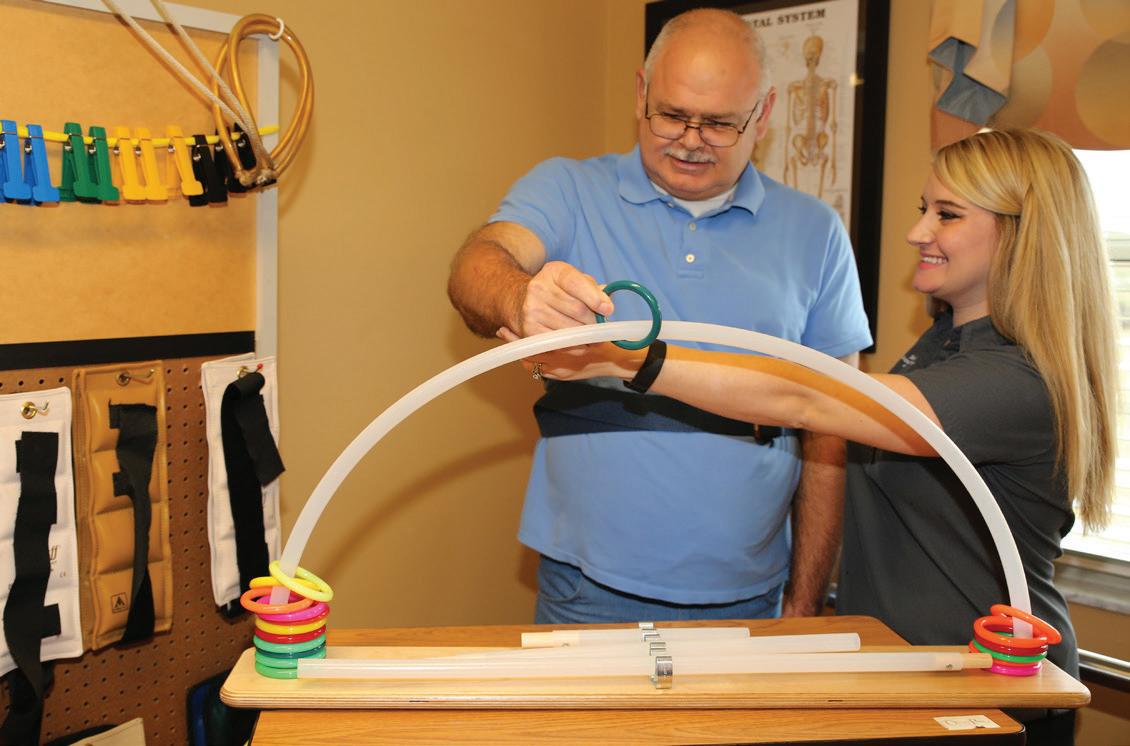

crawling into his bed, cuddling with him.
He began physical therapy, and all of his tests continued to improve. Because he had not stood for 14 days, he was unable to walk or sit up without assistance.
“There were a million ‘tiny firsts’ we had to do all over again, just like when he was a baby,” Elizabeth said.
Doctors were no longer worried about his condition as they began to see his little body improve day by day. They, too, had seen a miracle right before their eyes.
He was released from the hospital on Dec. 7 just two and a half short weeks after his accident. When the teachers at J.D. Dickerson learned he was coming home,
they organized a “welcome home” for the kindergarten student. Classmates and other students filled the sidewalk with homemade signs welcoming him home. As the Harvills drove by, the students jumped and waved, excited to see their fellow classmate.
The experience forever changed the Harvill family’s life. “We’re going to do things differently,” Jason proclaimed. “We’re going to change things.”
Elizabeth agreed, reminding herself of an incident that occurred a few days before Landon’s accident. “I was waiting to be called on a conference call and was hurrying to get supper cooked when Landon asked me to play cars with him.” She told him she couldn’t right then but would play with him later. But later never came. That incident came back to haunt her as she sat by his hospital bed, wondering if she would have the chance to play with him again or not.
From now on, “we won’t let things get in the way of family,” Jason explained.
And if that means staying up past bedtime on a school night because you’ve got a good game of “Go fish” going on, so be it. U
TCMThe Harvills are eager to share their experience with area churches and other groups that would have them. To schedule a time for them to share their testimony, contact Elizabeth at 912.245.1186 or Jason at 912.245.1187.

 One of the Harvill’s greatest “gifts” from this experience has been learning to appreciate and embrace time with family. Each moment counts.
654 NW Broad St., Lyons 526.4481
One of the Harvill’s greatest “gifts” from this experience has been learning to appreciate and embrace time with family. Each moment counts.
654 NW Broad St., Lyons 526.4481

















izza’s grandfather wanted to be an attorney his entire life,” said Evelyn Palmares. “He prayed that someday one of his grandchildren would become one. Rizza visited the Philippines at three years of age. It was the first and the last time she would see her grandfather. At the airport as he was saying goodbye, he prophesized that this child would become a lawyer in the future.” Judge Rizza O’Connor would learn of her grandfather’s words about her for the first time only this year.
Rizza’s mother, Evelyn Palmares, left the Philippines for America in 1979. “Her family was sugar cane farmers, and they were very poor,” said Rizza. “She was the one of four in a family of ten children to go to college. Becoming a nurse was her ticket to America. She had many offers from New York, Detroit, and other big cities, but chose to go to work in Statesboro.” A short time later, her mother took a position at St. Joseph’s Hospital in Savannah.
Rizza’s mother and father first met at a sugar cane plant where they worked after college. While Evelyn studied to become a nurse, Orly Palmares, her father, studied Business Administration. The two maintained a long-distance relationship until 1983 when Rizza’s mother returned to the Philippines to marry her longtime sweetheart. Finally, together in America, they determined to build a life together that would provide a better opportunity for their future family. Two years later, their first child, Rizza, was born.
As a child, Rizza remembered how her
parents adjusted to fully speaking English. Although Tagalog is the official language, there are more than 170 languages spoken in the Philippines and hundreds of different dialects. “My parents spoke Ilonggo,” said Rizza, which they spoke in her home. “I can remember my father having to adjust to speaking English in everyday activities. He worked several jobs when he first arrived in America from a gas station attendant to an employee at Byrd Cookie Company. Her father eventually ended up landing a job at St. Joseph’s Hospital in the Admission Unit where he has been for over 20 years.
As a first-generation child of Filipino immigrants, she was taught to value the many opportunities here in America. Instead of a burden, her parents’ hopes and expectations only fueled their daughter’s aspirations. Rizza was always a leader. She served as President of her junior and senior class and led the French Club and the National Honor Society. She played basketball and volleyball and served as captain of her high school soccer team.
“The program in high school that probably influenced me the most was the Chatham County Youth Commission where I served as Vice-Chairperson,” said Rizza. “The Youth Commission was composed of two high school students from each public and private school in Savannah. Through Youth Commission, I really began to understand the world beyond my small private school bubble. Youth Commission exposed me to kids who were of all races, religions, and from families of all economic levels.
As the first Filipino American judge in Georgia and soon-to-be 72nd president of the Young Lawyers Division of the State Bar of Georgia, Judge Rizza O’Connor has become a role model of leadership for young women in our community.


“At our meetings, we talked about the issues in our government or in our nation that were relevant to that time. We were encouraged to share our opinions and debate our sides. It was really interesting to hear the different perspectives on a topic because of the diverse nature of the kids who comprised the Youth Commission,” said Rizza.
Some aspects of the program put Rizza in “uncomfortable situations” when she was encouraged to speak her opinions or “give statements at public government meetings, on a radio talk show, or in front of a local news camera. I had to do this so many times that I really gained courage and found I actually enjoyed public speaking.”
It was also where she “saw the value of being a servant leader. With our diverse group, we encouraged each other to be leaders in our schools and together we served Savannah area charities almost weekly.”
After high school, Rizza’s plan was to become a doctor. “My mom was a nurse, and all her friends were nurses. All I really knew anything about was the medical field,” said Rizza. “I
thought I wanted to be a doctor. I had already been accepted into Mercer’s medical program.”
But the summer between high school and college, Rizza was summoned for jury duty. Surprisingly, Rizza was one of three jurors chosen who was 18 years old. “One was from my school class, and I was in the same youth leadership program with the other.”

and knowledgeable of the law. She was amazing. It was a two-day trial.”
When it came time to choose a foreperson, Rizza volunteered. As such, her job was to lead jury discussions. “We came back with a guilty verdict.” Even after all these years, a sense of satisfaction could be heard in her voice.
It was an aggravated assault case from a bar shooting in Savannah. “I can still feel the excitement I felt as I watched the prosecutor, Isabel Pauley, present the case on behalf of the State,” said Rizza. “She was assertive, passionate,
It took only one case to change her life forever. Instead of the premed program, Rizza attended Mercer University in Macon, Georgia, as a Tift College Scholarship Recipient where she was elected the Freshman and Sophomore Class President and chosen as the Freshman Homecoming Queen. With an undergrad degree in business, she spent a year at Oxford University through a Mercer study abroad program and studied European political systems and mass communications. “Classes were not just in a traditional classroom setting. It was one on one with your professor. You were given a topic, and you had a week to research it and write a paper to defend your findings,” said Rizza. “My professor was Sir Francis Warner, a former student of C. S. Lewis.”
During her time abroad, she
“I can still feel the excitement I felt as I watched the prosecutor, Isabel Pauley, present the case on behalf of the State,” said Rizza.
was able to travel to 19 different European countries. “You controlled your own schedule. I don’t think there’s a more wonderful feeling than having a backpack on your back and just going on adventures often by myself. When I look back, I think, ‘How in the world did I do that?’ It was challenging because I did a lot of that travel by myself. But I really grew from that experience. I’d have to figure out how to travel from place to place. I had to live cheaply, so I stayed in hostels sometimes with twelve different strangers. At the time, it was fun,” she said with a laugh. “It was an amazing experience.”
Rizza graduated Cum Laude from Mercer University in 2007 with a Bachelor of Business Administration and a minor in Communications and immediately started at the Walter F. George School of Law at Mercer University. While in law school, she interned for the In-House Counsel of Mercer University, the District Attorney in Warner Robins, Georgia, and Hunter Maclean and Savage
and Turner law firms in Savannah. By the end of her second year in law school, she became Student Bar Association President. She was the first Asian-American to hold the position. In May 2010, Rizza graduated from Mercer Law School and received the Wall Street Journal Award for Academic Excellence.
“I had all these great visions of becoming this high powered civil attorney,” said Rizza. She went to Atlanta and worked in personal injury. But it didn’t take her long to decide that the big city wasn’t for her. “I wanted to go back to my roots.” After she passed the Georgia Bar, she moved back to Savannah to work for the District Attorney prosecuting criminal misdemeanors in State Court.
Her first case in 2010 served as a big learning curve in Rizza’s career. “I was representing a former ‘American Idol’ finalist in a bench trail for battery. It ended up on the front page of the Savannah Morning News. Even though I lost, I loved what I was doing.”
Rizza thought she wanted to be a career Prosecutor. “But there weren’t opportunities in Savannah for someone so young and with such little experience,” she said. “I figured if I was going to get my feet wet, I needed to move to a smaller town for a time to gain experience and then hopefully move back to Savannah or Macon.”
Fortunately for us, that smaller town was Lyons, Georgia. Rizza took a position in the Middle Judicial Circuit as an Assistant District Attorney. At 26 years old, she became one of the youngest Assistant District Attorneys in the State of Georgia. The very first trial in which she took part was a murder trial. “A woman’s boyfriend was in charge of her baby while she was at work. He had called 911 and said the baby was unresponsive. The police arrived, and the baby was pronounced dead at the hospital. An autopsy showed blunt force trauma to the baby’s head, and the jury found him guilty.”
In November 2013, Rizza was appointed a Chief Magistrate Judge by Superior Court Judges Cathy Palmer and Robert Reeves making her the first Filipino-American Judge in Georgia as well as the youngest Asian American to serve as a Judge.
The position came with a new challenge. “When I was a prosecutor, the workload was intense,” said Rizza. “I remember going through a box load of files in the car on the way out of town while my husband drove. There’s still a lot of work to do, but this work comes with a different kind of pressure. This is a small town, and I see how the judgments I render will affect people’s lives. These are people I pass in the grocery store or see when I pick my children up from school. Sometimes those effects are not positive. That’s the toughest part. You want to help people, but as the Judge, I can’t be their advocate. That’s the hard part. If the burden is not met, I have to render the decision
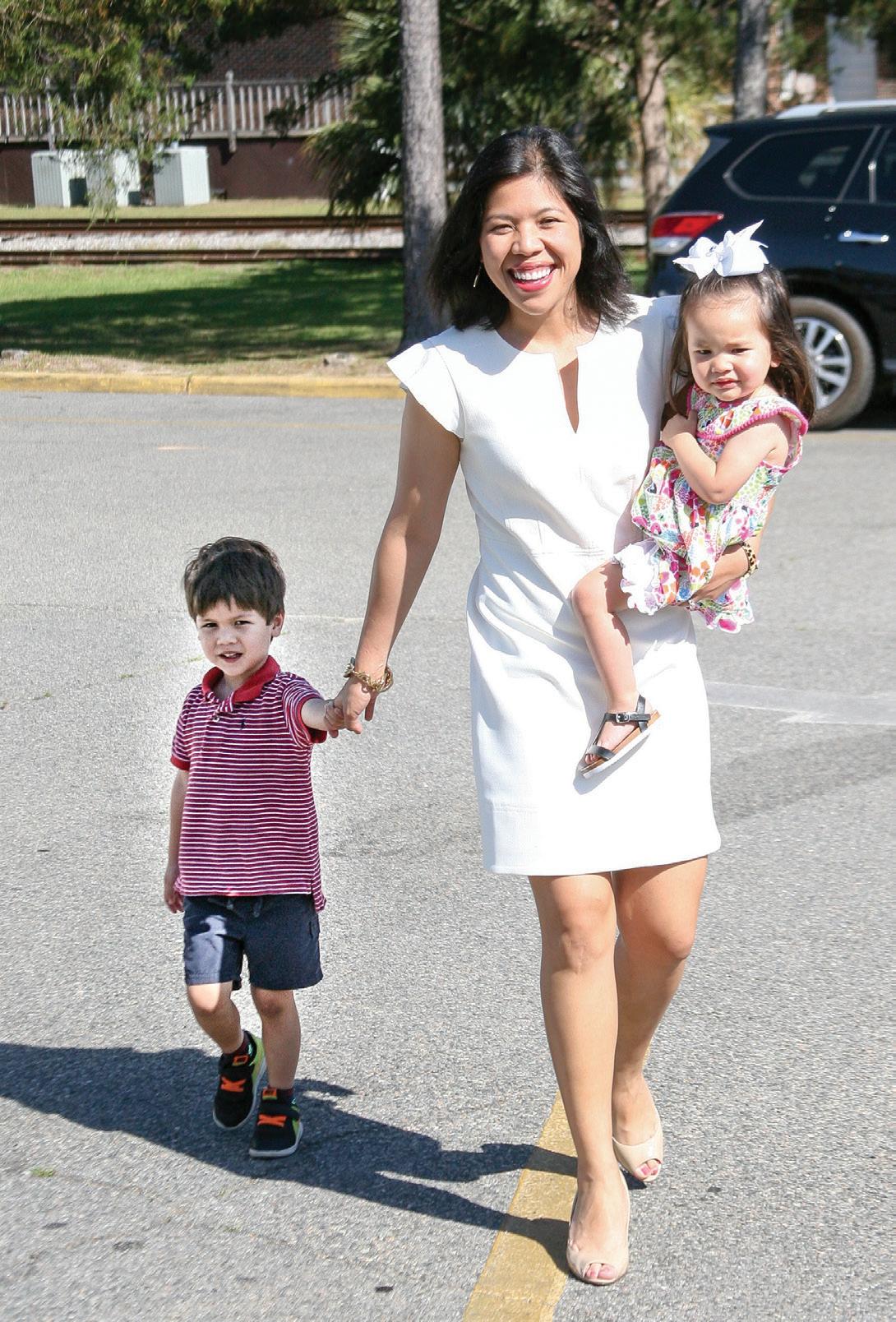
“I had all these great visions of becoming this high powered civil attorney,” said Rizza. “[But] I wanted to go back to my roots.”

according to the law. A part of me wishes they could see how I toss and turn at night and lose sleep or have to go on an extra run because of the emotional aspect that comes with making hard decisions, even though it’s the right thing to do.”
Many who enter her courtroom choose to represent themselves because of the cost for legal counsel. “We tell people that it’s best to have a lawyer, but 90% of cases that come through my court are people representing themselves. The good thing is that if someone doesn’t like the judgement made in Magistrate Court, they can still appeal to a higher court and basically start over with their case.”
While the rest of us are watching an hour-long episode of some cop and robber show on Crime TV, real justice is not quite as quick to resolve. The criminal side of Rizza’s work means that arrest warrants and search warrants for both felonies and misdemeanors must be signed regardless of the time of day or night. “And crime happens at all hours of the night,” said Rizza. “We have so many different agencies from the Georgia Bureau of Investigation, the Toombs County Sheriff’s Department, the Lyons Police Department, the Vidalia Police Department, and the Georgia State Patrol. Typically, if there is cause for somebody to be arrested, the police get called out. They do their investigation and then type out the warrant for us. The police bring the physical warrant to one of our Judges, and if there is a reasonable belief that a crime has been committed, the Judge on call signs the warrant.”
On June 8, 2018, Rizza will be sworn in as the 72nd President of the Young Lawyers Division (YLD) of the State Bar of Georgia by Justice Keith Blackwell of the Supreme Court of Georgia at the Omni Plantation at Amelia Island. She will be the first Asian-American in Georgia to hold the position and one of few to ever be elected from outside of the Atlanta area. Members are made up of any lawyer age thirty-six or younger who has passed the bar in Georgia. The organization currently has about 10,000 members.
“Each President has the liberty of picking what kinds of programs and initiatives they want to do,” said Rizza. “My signature project as YLD President is to use technology to make affordable legal representation more accessible to those in rural areas. There’s a legal incubator program in Atlanta called Lawyers for Equal Justice. It’s made up of about 25 young lawyers who have separate firms but all share office space in a building in downtown Atlanta. I have partnered with the Lawyers for Equal Justice to develop a program where these lawyers will be able to file cases electronically and then represent litigants in court remotely through video-conferencing. This program would provide a much needed service because it gives access to legal representation for less. “We’ve already got my courtroom fitted for the program,” said Rizza. “My hope is that with the program’s success in Toombs County, it will be enacted in other places across Georgia.”
Another goal is partnering with Family Connections Director Paige Williamson to bring the iCivics program started by Justice Sandra Day O’Connor to Toombs County. “Many schools have moved away from teaching civics,” said Rizza. “This is an online program with games that takes a student through almost every single level of government, from county government to state government all the way up to the Supreme Court. It’s designed for upper elementary to middle school age. It’s my goal to try to get it into the schools here and into after school programs.”
The Vidalia and Toombs County schools have recently been more aggressive about unexcused absences, which is also a result of Rizza’s efforts. “I want people to be aware that if you have a child between the ages
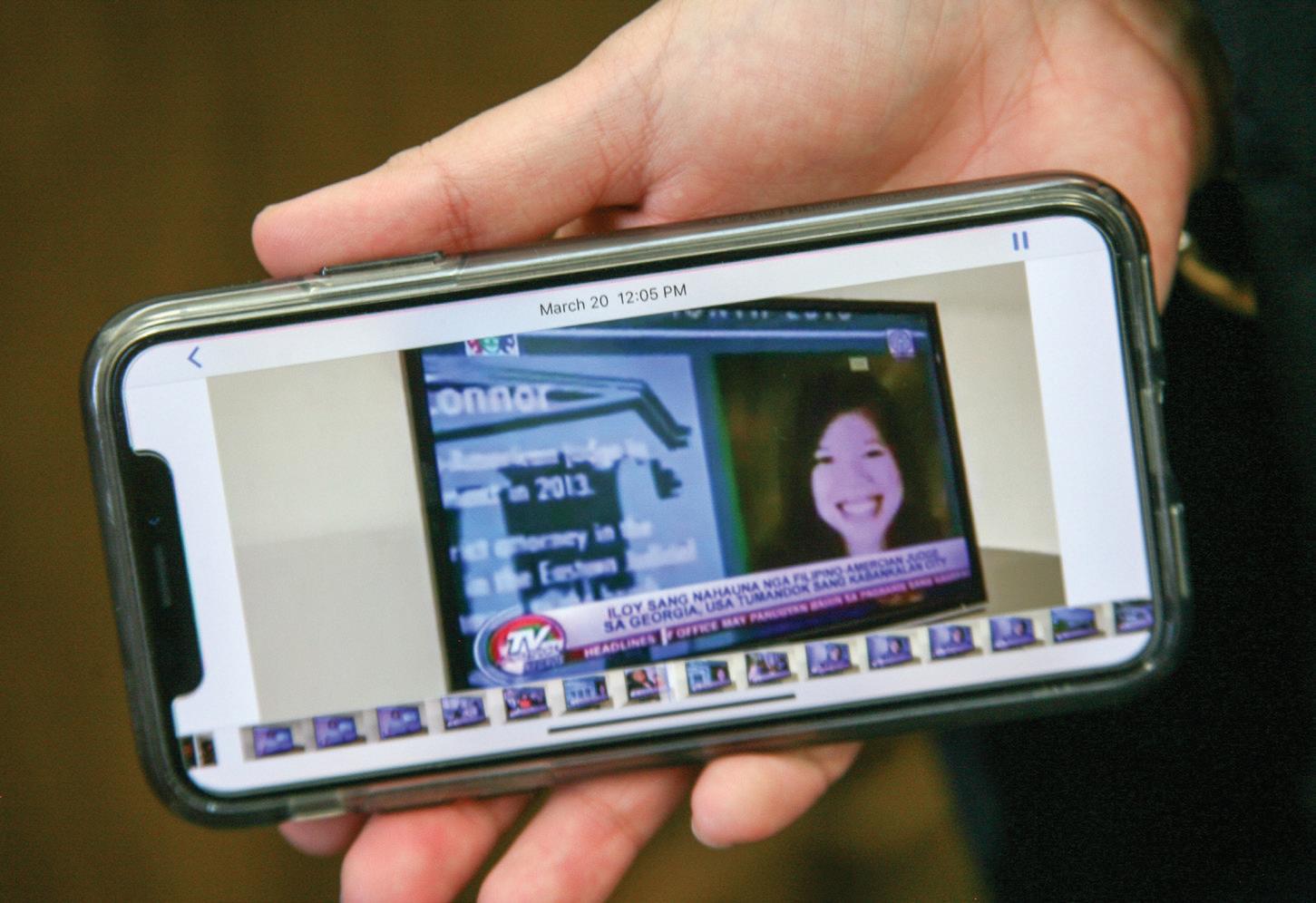
“A part of me wishes [the public] could see how I toss and turn at night and lose sleep or have to go on an extra run because of the emotional aspect that comes with making hard decisions, even though it’s the right thing to do,” said Rizza
of six and sixteen and that child has more than five unexcused absences, a parent could be criminally responsible for that child not going to school,” said Rizza. “We’ve had to take out warrants against parents, and they have been arrested. Parents need to just be in communication with the school.”






In 2008, Rizza returned to visit her family still living in the Philippines. “Most people living in the Philippines would be considered poor in comparison to how we live in the US. In rural areas like where I visited my family, I saw extreme poverty. Most homes are concrete. There is limited running water. For example, to bathe, you would have to take your cup and pour water over yourself. Despite these circumstances, the Filipino people are also some of the happiest people in the world.”

In June, Rizza’s Aunt, Suzette Odango, will travel to the United States for the first time to attend her niece’s swearing in ceremony as President of the YLD. In their excitement, a family member contacted ABS-CBN, a major network in the Philippines, and told them Rizza’s story and many accomplishments that include becoming the youngest Asian American to serve as a Judge and the first Filipino-American Judge in Georgia. A reporter came, and the story was broadcast throughout the Philippines. When Rizza watched a recording of the interview later, she was shocked to hear her aunt describe her grandfather’s prophecy, which was also confirmed by her mother.
Rizza first came to Toombs, County, for greater opportunity and experience. But the friends she’s made and the community in which she has become a part are the reasons why she has remained. Her strong leadership and heart to serve give our daughters an example to follow and first-generation children of immigrants a story to share with pride. It is our great honor to have “one of the 25 most influential Asian Americans in Georgia,” as named by the Georgia Asian Times in May 2018, serving the people of Toombs County. UTCM























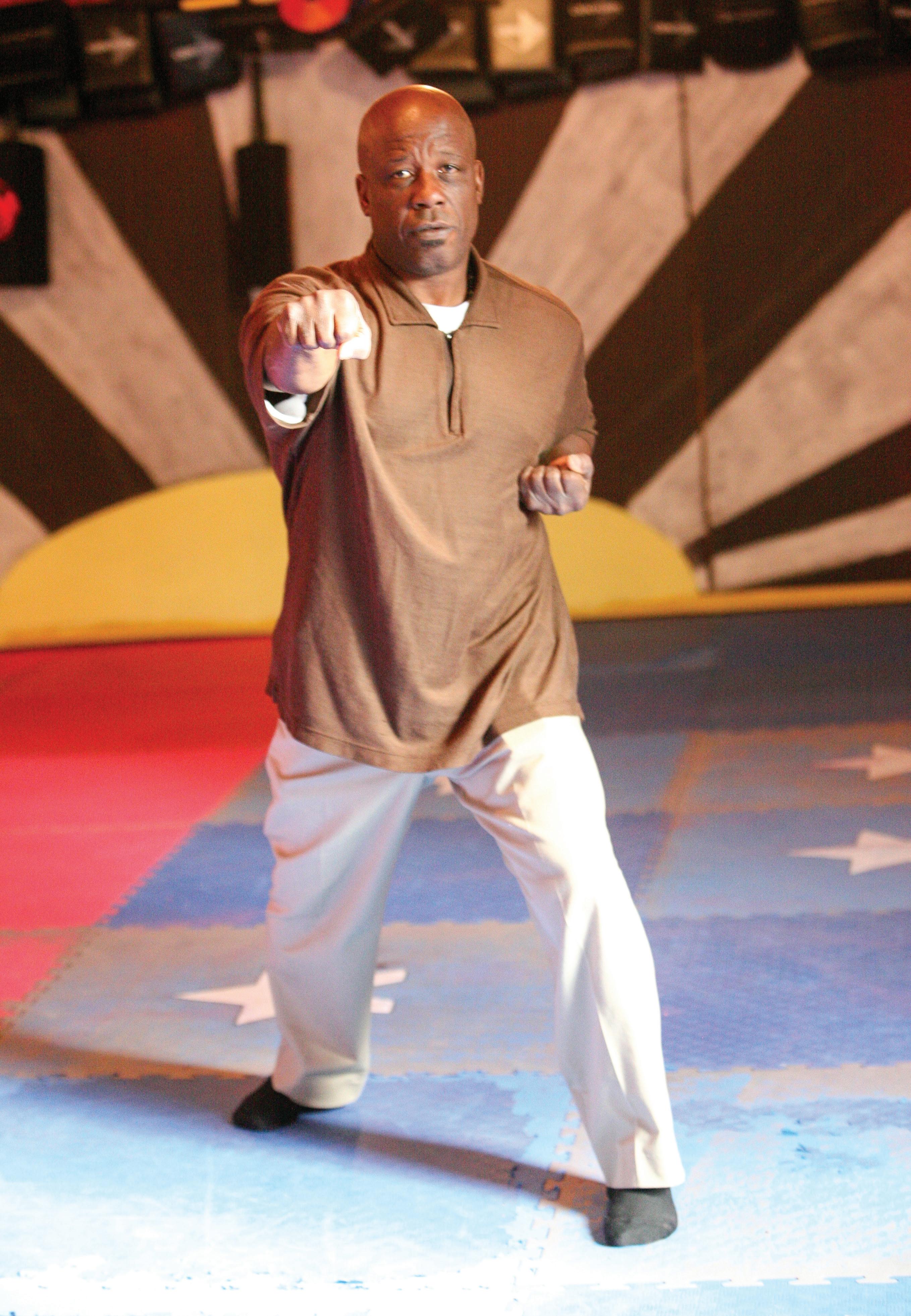

Dewitt Davis is a master in his craft, but his most important goal is teaching others to have self-discipline and respect for themselves and the world around them.
Some remember the 70s for Watergate, the end of the Vietnam War, the oil crisis, or the Great Inflation. But for the children of the 70s, it was a time when a new kind of hero emerged. Week after week, Kwai Chang Caine, played by David Carridine on the ABC tv series Kung Fu, taught us the value of discipline in mind, body, and soul. Of course, Caine also showed us the coolest moves ever as he crossed the
Wild West defending the vulnerable against the bad guys. “Grasshopper,” as blind Master Po called him, was a hero nine-year-old Dewitt Davis could follow. And he wasn’t alone.
Martial Arts studios sprung up across the country. “Everybody was Kung Fu fighting,” as Carl Douglas sang in his 1974 hit song. Two free classes were offered by a martial arts studio in Coral Springs, Florida, near Dewitt, but it was all he could take. At that time, his family did not have the extra money. When he was twelve, he was able to take lessons for three months, but again, had to stop for lack of financial resources.

Once he started high school, Dewitt started wrestling. “There wasn’t wrestling yet in the schools back in Montgomery County, where I was from,” he said. Even though he competed in wrestling and did well, martial arts had his heart. “As soon as I was old enough, I got an after-school job. Then I paid for classes myself.”
In the beginning, Dewitt’s perception of martial arts was as a tool of defense. Bullying is not a new problem, he explained. “There was bullying in school back then, just like now. I thought that if these kids I saw bullied knew martial arts, they could protect themselves. As I got older, I realized martial arts was so much more. It gave you confidence, a positive attitude, respect for yourself and others.”
After high school, Dewitt worked different jobs while he trained in various styles of martial arts. Each time a new level of expertise was achieved, he was promoted. “Back then, you had to go through individual programs. For each one, you start with a
white belt and train up to a degree of black belt.”
Dewitt didn’t just want to learn; he wanted to teach. “In order to receive your Instructor’s stripe, you have to do a major and a minor and go through all the programs.” And in addition to physical training, “you also learn people skills as well as the business side so you can open up your own school. The association or federation wants you to have people skills with kids and other adults before you are certified to represent them to the public.”
While training to become a certified instructor in Taekwondo, Dewitt also trained in a Karate style called Shotokan. He then went to Jacksonville, Florida, to train in Midori Yama Budokai with Master Leo Wilson. “He and his wife brought a Japanese style to America,” said Dewitt. “It was the chance to have a broader experience and training in martial arts. I wanted to train in many different styles before I started my own school.”
In addition to Taekwondo and Shotokan, he also trained in Karate, Tai Chi, Jiu Jitsu, Aikido and with Master Ed Parker in Kenpo. “He was one of the first to teach Kenpo in the U.S.,” said Dewitt. After years of training, he received his Instructor Certification from the ATA (American Taekwondo Association) in Atlanta. But training, he learned, was about much more than rank. It was about personal growth. As a child, he said, “I was taught to respect anyone older and those in authority. My parents provided structure, ethics, and morals. But in martial arts, I learned self-respect, and


to be in harmony and at peace with myself. When you have peace within yourself, you learn to be at peace with others.”
The discipline required for the physical aspect of martial arts gave him new understanding of self-control. “Martial art is not about reacting violently and using your skills against someone just because they called you a name,” said Dewitt. “It all boils down to self-discipline. It’s something we need in our families, schools, and society. When we don’t have self-

control, we often give someone else control.”
By focusing on our personal growth, we free ourselves and others from judgments and comparisons. “We can recognize and accept people as they are,” said Dewitt. “Even when they have different opinions or ideas. Their energy level might be different. When emotions rise up, we want to find fault. But there’s no need. We can choose to accept others. Everyone has to make their own changes. I only have the ability to make changes
within myself. When I am at peace within myself, then I find peace with others.”
Dewitt’s inward growth also resulted in a greater respect and appreciation for nature. “There is harmony and balance in nature. You can see that everything in nature has its purpose. By watching and listening to nature, you can apply the principles of respect to your own life. Nature is a great teacher to us. It is not at war against itself. So why should I, as a living being, be at war within myself?”
In 2000, he decided to move to Vidalia. “City life is okay,” said Dewitt, “but I was born in the country, and I love country life. I love the peace and harmony. And I like the openness and welcoming nature of small town life as opposed to the big city where everybody is busy doing their own thing and going their own separate ways.”
Dewitt began training in Vidalia with John Hamilton in American Taekwondo and with Rodney Williams in Shotokan. He achieved a black belt in both forms. He also trained with June Bryant who came to Vidalia as a representative of the ATA school of Atlanta. Dewitt also has a 5th degree black belt in Karate. Through the years, he has placed in countless competitions winning State Championship in Jiu Jitsu in 2001, State Championship in Mixed Martial Arts in 2002, and 2nd in State in Karate in 2007.
RIGHT Realizing that the best way to grow a community is to contribute to it, Dewitt began teaching at the Lyons Upper Elementary 21st Century after-school program. It’s a way to help promote respect and self-discipline to today’s kids.
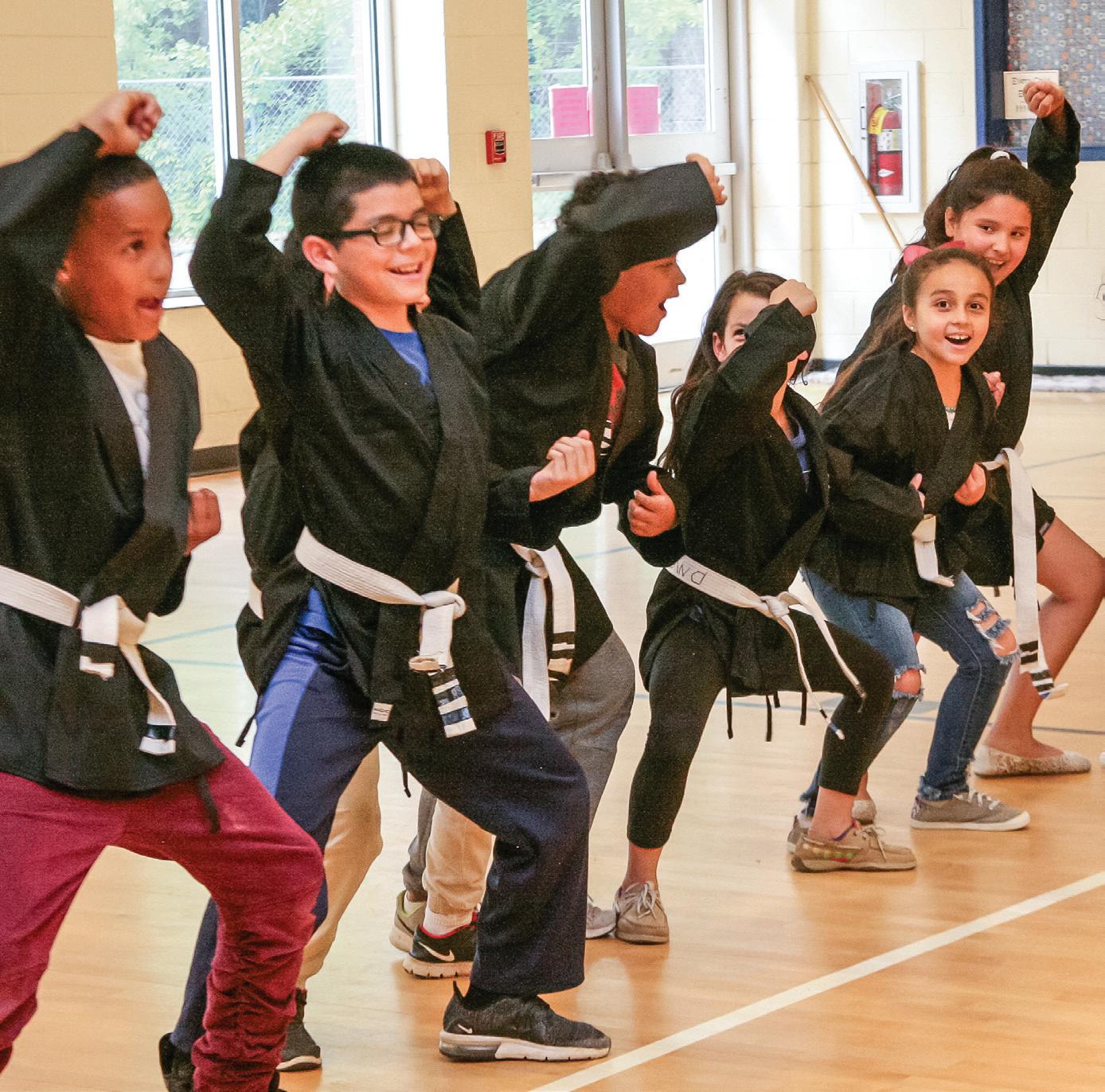

After twenty years of training and with his certification as a martial arts instructor, Dewitt opened his first school in 2003 in Vidalia. “I brought all my disciplines and training together and developed my own style,” which he named American Ju Chi Do. “It is the first school of its kind,” which makes Master Davis also the Grand Master at his martial arts school. “The term Master speaks of self-mastery and self-discipline. It’s about being able to master your emotions and not act out in response to others’ actions. That’s how we define Mastership.”
In 2015, Dewitt moved his school to the city of Lyons. “Lyons is growing, and I wanted to be a part of its growth. If I want to be part of the growth, I thought, I need to give something of myself to contribute to it.” Dewitt’s school, American Ju Chi Do Extreme Martial Arts, is located just behind Lyons City Hall.

Many of his martial arts students have done well competitively. In fact, his student, Cory Braddy, won 1st place in the North American National Grappling Association in 2013. In March 2017, he hosted his own tournament at the American Ju Chi Do X-Treme Martial Arts school and had thirty-three participants. Seven of his students placed first; six placed second; and three placed third.

In addition to group and private lessons, Dewitt teaches an hour-long Self-Defense class at 6:00 p.m. the second Thursday of every month free to the public at Partin Park. He is certified in PPCT (Pressure point Control Tactics Management System), which is “the system all law enforcement and security officers are required to take,” he explained. “Self-defense is something everyone should know. Many times, predators watch the way someone walks. They watch how a person carries themselves before they approach. I teach how to walk to your car while holding your keys or something in your hand. I teach women, ‘You don’t have to be as strong or as big as an attacker if you know what to do.’ Being aware and knowing what to do in a situation could keep you from becoming a victim and save your life.”
Dewitt also works with the Toombs County Upper Elementary school’s 21st Century afterschool program. After hearing that Program Director for the Toombs County Middle School, Ms. Gwen Banks, had asked for volunteers from the community, he contacted her and volunteered to teach a class. “He was so good with the children that when I had a position come open, I immediately thought of him,” said Ms. Banks.
Since February, Dewitt has been teaching 21st Century students about discipline, respect, self-esteem, and character. “Respect and honor for oneself and others are in desperate need in every aspect of life,” said Dewitt. “I teach kids that respect means giving your full attention. Making

eye contact. Holding your chin up and answering, ‘Yes sir and yes ma’am. No sir and no ma’am.’” Politeness and good manners are simple practices but have significant effects. “I [also] give the kids the chance to shout loudly to release energy.” He smiled. As a
martial arts instructor, he understands the need for kids to release excess energy after sitting at a desk all day.
“Both the kids and the staff love him,” said Ms. Banks. “He’s great with them.”
Whether it’s with the children

in his martial arts school or those in the 21st Century after school program, Dewitt’s contribution to the life and growth of Toombs County is far-reaching. But children aren’t the only ones who benefit from Dewitt’s influence. Adults who take the selfdefense class gain confidence and the ability to defend themselves. Those who take martial arts classes gain not only a great workout, but an understanding of self-control and balance within themselves and the world around them. Others come to improve posture, balance and flexibility with T’ai Chi or some other style of martial arts. Sooner or later, this incredible public servant will impact us all with his heart for our community. U



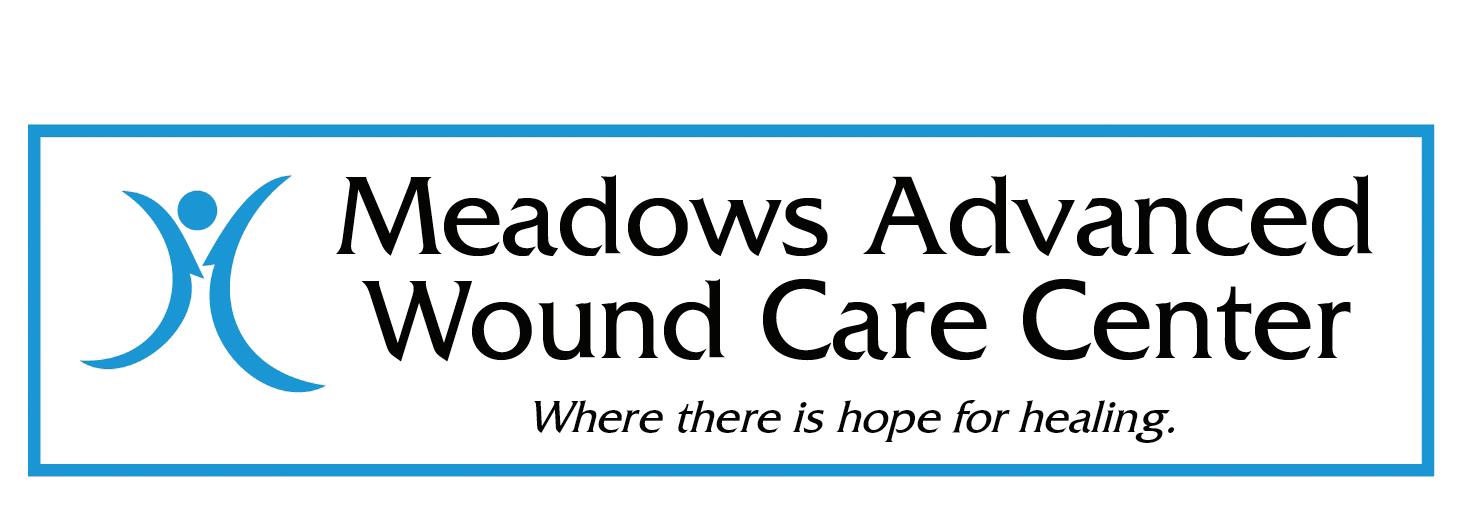




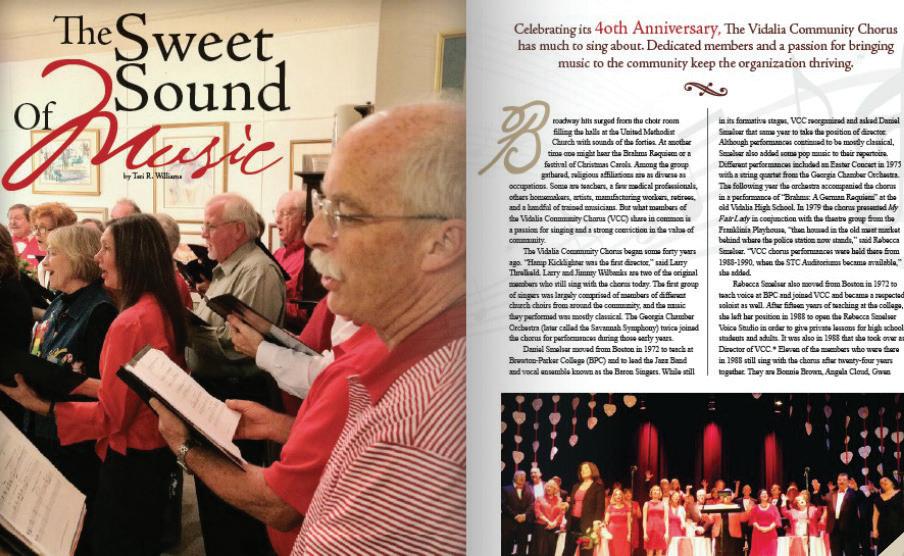












New menu • New Adventure
New menu • New Adventure



Be our guest and experience the exciting flavors of Chef Lorenzo Klink.
Be our guest and experience the exciting flavors of Chef Lorenzo Klink.

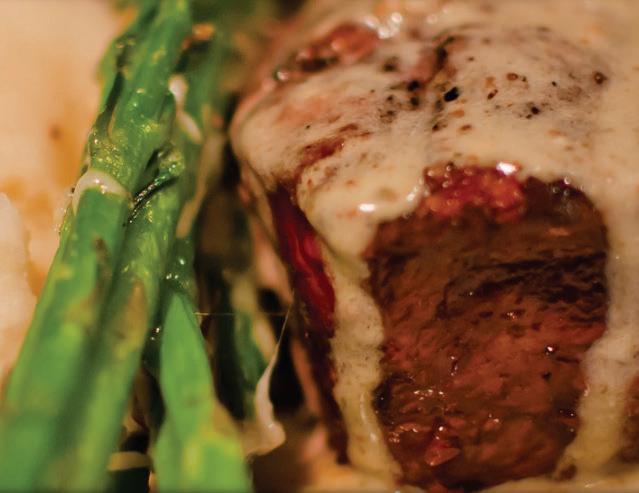


HARD WORK, DETERMINATION AND A BIG VISION HELPED
JESSLYN JOHNSON DISCOVER HER TRUE GIFT WHILE BUILDING A SUCCESSFUL, LONG-STANDING BUSINESS IN TOOMBS COUNTY.

Jesslyn stopped. For a moment, she was speechless. Sure, she knew firsthand just how much the world of photography had changed since she first followed William Ledford out on a ballfield at the Rec Department to shoot pictures of young athletes. But the idea that her then fourteen-year-old daughter Josie had never even seen a negative or loaded 35 mm film into the back of a camera was surreal. Especially when her own mama had been a professional photographer for over thirty years.
Her daughter’s question reminded Jesslyn that she was an anomaly. While photography and frame shops were closing shops all over the country in the evolution of film photography to digital, Pix Photography and Pix One-Hour Photography and Gifts was one of the oldest businesses in the county still in operation.
When twenty-one-year-old Jesslyn first approached Veterinarian Reid McArthur and Editor and Publisher of The Advance newspaper, William Ledford, about working for them, they were skeptical. Not only was she mighty young to be given charge of their new business venture, a one-hourphoto shop named Pix, the file label for pictures at the newspaper, Jesslyn knew nothing about photography.
She didn’t roam the fields as a child taking pictures of flowers and butterflies or spend hours locked away in a dark room fascinated with the magic of developing pictures. She just needed a job. After two years at ABAC, she had decided to come home until she could figure out what she wanted to do with her life. Her plan had been nursing school until the reality of listening to people describe their ailments all day really kicked in. In the meantime, Jesslyn told her then brother-in-law, William Ledford, she just needed a job. And if the guy he and Reid had hired to run it had not decided to change the oil in his car instead of come to work that day, things might have turned out quite differently.
In late December 1985, with no experience or knowledge about developing film, Jesslyn got to work learning her way into the job. What she lacked in knowledge and experience, she more than made up for with commitment and the hard work to show for it. It was just the way she was raised. Her father was a farmer. Her mother, a homemaker. Surely, two of the most challenging and demanding jobs on earth. When Jesslyn was older, her mother started taking in sewing. “She could make anything with a sewing machine. She even made wedding dresses.”
With a strong work ethic and commitment that perhaps only farmers and mothers fully understand, Jesslyn worked Monday through Saturday from 8:00 in the morning until 8:00 at night. “I think I was making about $125 a week,” she laughed.
The first task was to learn how to operate
the processing machinery. “Film had to go through eight or nine tanks of chemicals before it came out dry and you could print from it. It wasn’t just a push of a button. We had to learn how to adjust density and color. Those first few weeks, we just let people bring in their film and printed their pictures for free. If we messed up, we were like, ‘Sorry.’ We weren’t really officially open for business until the next year,” said Jesslyn.
“Reid was in and out, but he couldn’t just leave his business. William would come Mondays and stay all day because we were so busy. Everybody dropped off their film on Mondays, so we never got out of there until about 10:00 at night trying to catch up.”
On Wednesdays when she closed up shop, Jesslyn helped William with portrait sessions he took at The Advance. “He had always had that interest,” she said. Before long, one night turned into two. “Pretty soon, I was there several nights a week and helping with Rec Department pictures, too.” And as she worked, Jesslyn learned. “Pretty soon, I was doing the Rec Department pictures instead of William.”
The business continued to grow, and Jesslyn was working almost around the clock. She hired Brian Roberson, a high school student, to come in at three when he got out of school and bought an enlarger so they could make bigger prints in house. In 1988, Jesslyn hired her first full-time employee, Luan Newman, who continues to work with her to this day.
In addition to everything else she was doing, Jesslyn also kept the books. She decided to ask Reid and William about expanding. “There was a store front next to us available. I thought it would be great to have the space to do photo shoots right there. They were kind of scared to take that next step, so they said, ‘If you can save enough money, we’ll talk about it.’ That was when I started putting money aside in an empty paper box. When I thought it looked like enough, I went to see William. As soon as he said something about having enough money, I reached down and pulled that box full of cash out from under my chair. I had no idea how much was in there, but when he counted it out and realized how much was there, he agreed.” She laughed.
Two years after opening, Jesslyn asked Reid if he would be willing to sell his half of the business to her, which he agreed to do. In addition to the experience she gained working with William, Jesslyn also attended a weeklong school put on by the Georgia Professional Photographers Association in Clarksville,

Georgia, once a year. As her knowledge and skill grew, so did the business.
“We were doing the recreational department’s pictures and had a couple of school contracts,” said Jesslyn. “I started getting more work and started hiring more employees.” In 1995, Jesslyn began looking for more space. “The traffic had backed up in Vidalia because a stoplight had malfunctioned. I was just sitting there thinking about what I was going to do. I desperately needed a bigger building at that point. I looked over and saw this place right on Southeast Main Street.”
Even though she was told it wasn’t for sale, she called the owner anyway. “He said, ‘I hadn’t planned on selling it,’ but when I told him about my business and how much I needed more space, he said, ‘I’m actually here right now if you want to look at it.’”
As pigeons flew overhead, Jesslyn simply opened her umbrella and walked through the building. It was perfect, she thought. The photography and sales part of the business now had its own much needed space separate from the processing lab.
During 1995, Jesslyn bought out her partner William and became the sole owner of Pix Photography. “I had learned so much from William. I will forever be grateful to the

Jesslyn is adament that her success is a result of the hard-working team she put together. From her retouch artist to her sales people, the "family" at Pix Photography and Pix One-Hour Photo help make the businesses successful.
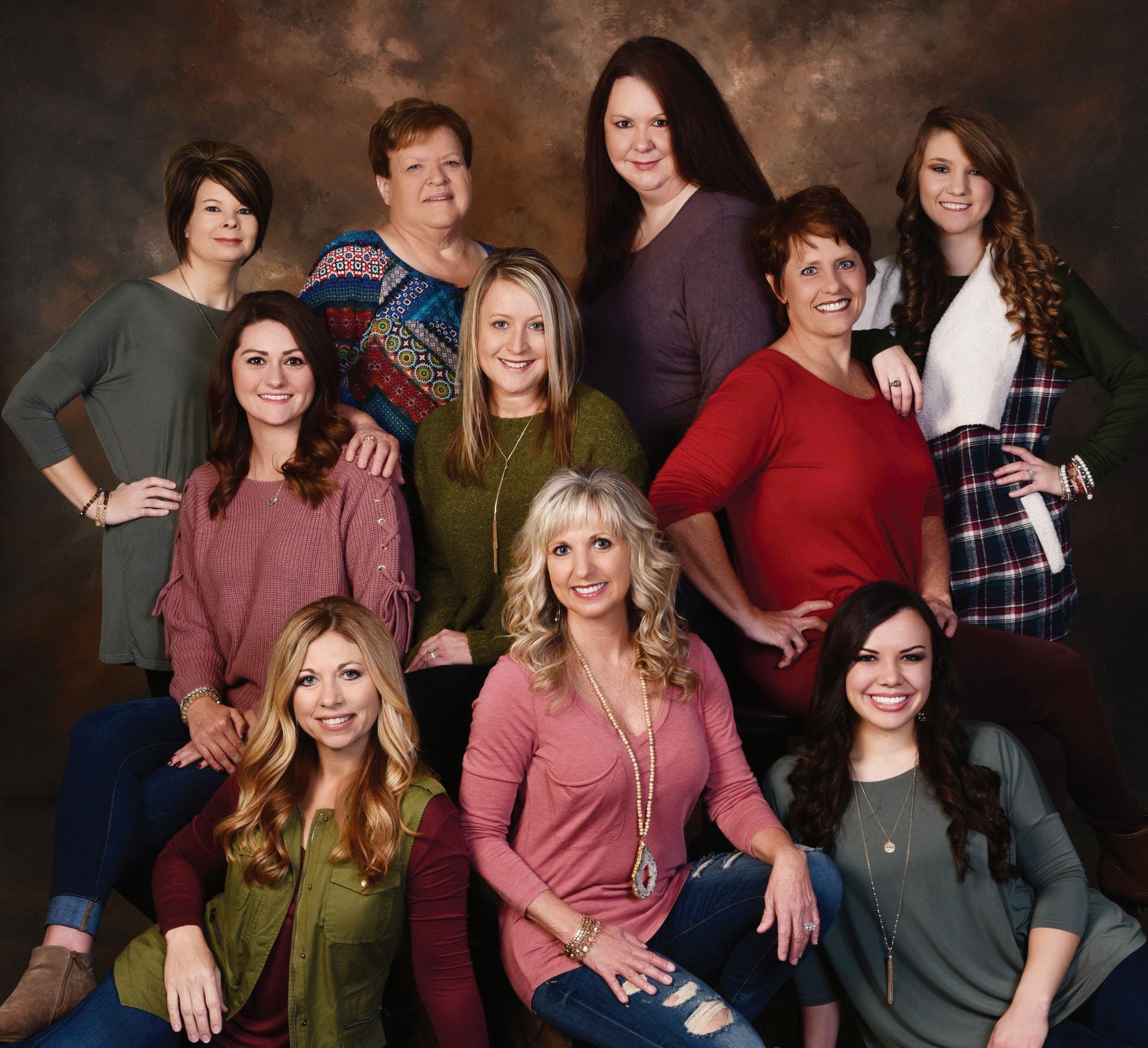

opportunity both Reid and William gave me and the risk they took with a single, twenty-one-year old girl still living with her parents.”
As if all that wasn’t enough, 1995 was also the year Jesslyn married Al Johnson. Al worked next door to Pix One-Hour Photo at Cellular Plus. "When you’re twenty-eight and date someone, you’re usually thinking about settling down,” said Jesslyn. “I was so focused on work. I didn’t need or want anyone to distract me from that. Since he was younger than me, I thought he wouldn’t get the wrong idea.” Jesslyn smiled. The two became
great friends, which, of course, is a great start for a healthy relationship. Whether it was the motorcycle or Al’s “good cookin’,” we may never know. But the rest, as they say, is history.
If you stopped reading here, you would think that Jesslyn’s success was the result of her own hard work. But according to Jesslyn, that would be only partly true. Plenty of hardworking people work night and day and don’t make it. One person can start a business, but it takes a team with the same heart and vision to maintain a business. Although Jesslyn gave everything, she is adamant that her ongoing success is the result of the family at Pix Photography and Pix One-Hour Photo and Gifts where she is affectionately known as “Mama.”
Jesslyn’s first full-time employee, Luan Newman, has been with her now for thirty-one years. Traci Hart, the Manager of Pix One-Hour Photo and Gifts, started working at the age of fifteen and has been with her for twenty-nine years. Michelle Moore, also at Pix One-Hour Photo and Gifts, has worked alongside Traci for the past twelve years. Traci’s mom, Elaine Strange, took over as CFO and bookkeeper twenty-eight years ago. Belinda Cox, Jesslyn’s fulltime printer and retouch artist, joined the family twentyfour years ago and does all the printing. Vicki Jay, an incredible photographer in her own right, joined Pix Photography twentyone years ago. Her specialty is high school seniors and “tweens.” More recent additions to the business have been Baily Thomas and Briana Brinson, both in sales. “My daughter, Josie, has also started working some with me,” said Jesslyn proudly.
All the long hours and hard work would have been much more stressful if not impossible had it not been for Jesslyn’s mom, Keller Morris. “My mom helped me from the beginning. She came and did sales, and when we

started a family, she stayed home to keep our girls, Josie and Alex [called Rocki].”
In order to stay relevant in the rapidly changing world of photography, Pix One-Hour Photo and Gifts has expanded their services. “People are taking more pictures now than ever with their cellphones but then don’t print them out.” And the scary part about a digital life is that thousands of photos taken of children’s birthday parties and
You can also come in and select the photos you want for us to print on our professional printer, which is far superior to a home printer.” Digital photos can also be uploaded to Pix website at night and picked up the next morning.
Other services include DVD/ Movie transfer, photo restorations, personalized greeting cards, invitations, announcements, thank you and note cards, posters, collages, posters and collages with mounting
vacations can be lost in a moment.
“We had a girl come in yesterday who said, ‘I've got 3,000 pictures on my phone, and I’m going on vacation. I need space to take more pics, but I don't have time to get through them.’ We put them on a CD from her phone, and she can go through it later. And if something were to happen to your cellphone, you still have a copy.
options, and photo books. “We sell a lot of personalized t-shirts, Easter baskets, and ornaments at Christmas, too,” said Jesslyn.
To date, Pix Photography services all the surrounding recreational departments and has contracts with fourteen schools. “We have a lot of people who depend on us,” said Jesslyn. “It’s our job to make sure that
everyone who comes to us has the best pictures possible. We want to be here for our community and for our customers. Some of the babies we’re photographing now are third generation customers.”





The most precious thing we have are the people we love. Second to that, the most precious thing we have are the pictures of the people we love. A book of wedding photos. A child’s big snaggle-toothed smile on her sixth birthday. A picture of the grandparents you don’t have to visit anymore. The part that Jesslyn and her incredible team at Pix Photography and Pix One-Hour Photo provide for families of Toombs County is invaluable. No matter what future technology may bring our way, she will be up for the challenge with the same tenacity and courage that turned a passing trend into a lifelong career. UTCM

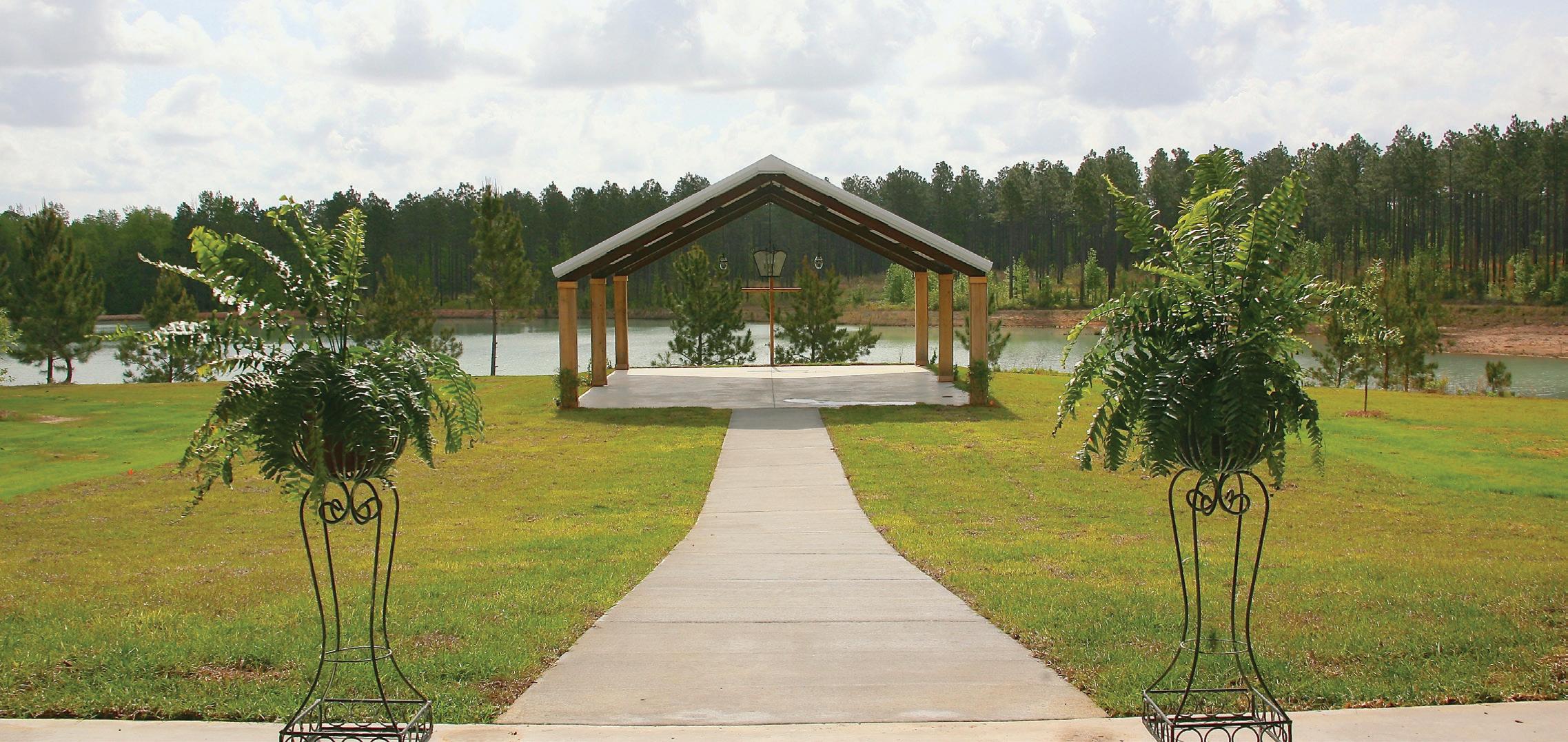

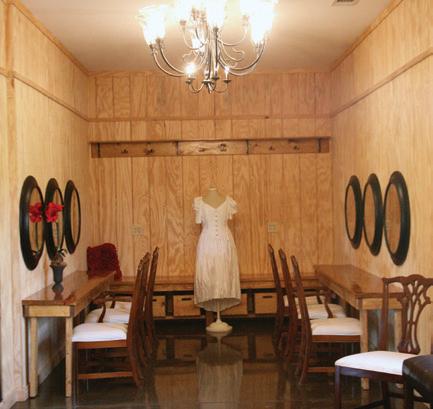
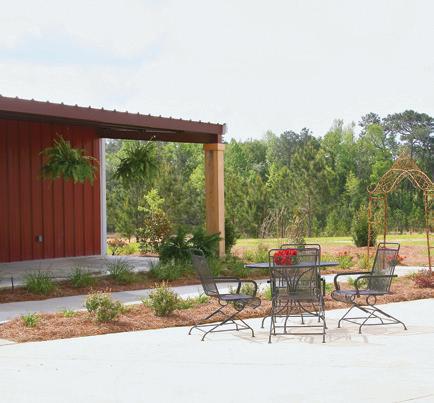
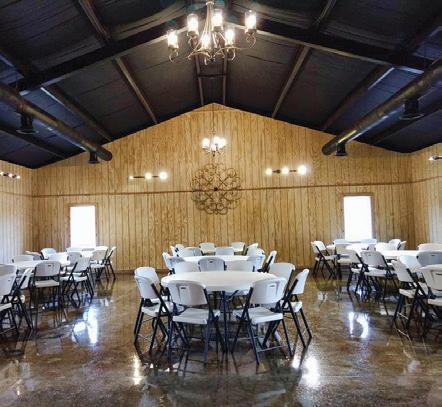














Summer is a great time to enjoy outdoor activities with your pets, but hot weather can be particularly challenging for companion animals. When temperatures start to soar and insects invade, keep your pets safe and healthy by following these suggestions.
Just like humans, pets can find a hot summer day a bit overwhelming. But unlike humans, pets have a limited ability to deal with soaring temperatures. Humans can sweat through the skin on their body to cool themselves, but dogs only release heat through their paw pads and by panting. Animals with flat faces and short snouts—like Pugs and Persian cats—have an even more difficult time because they cannot pant effectively. Heat stroke is a real threat to pets, so also keep an eye on elderly or overweight pets or animals with heart and lung issues.
Dehydration can be a big problem for pets during the hot weather, especially if they like to run and play outside for a long time. Make sure they always have access to plenty of fresh, cool water, and if they are used to being indoors, avoid letting them play outside during the hottest parts of the day.
You should keep antifreeze safely out of reach of pets and children no matter what time of year it is. However, during the summer, pay close attention to its presence in parking areas. Cars tend to overheat more and leak antifreeze in hot weather often leaving puddles that pets can easily lap up. The sweet taste of antifreeze makes it attractive to dogs and cats, but this toxic substance can be deadly if ingested. You should also be attentive to puddles on the streets in your neighborhood, especially when out walking your dog in a new territory.
Leaving your pet in a car for a few minutes may seem like no big deal, but it can quickly lead to heat stroke and suffocation in dogs and cats. In direct sunlight your car acts like an oven, becoming much hotter inside than outside. On a typical sunny 70 degree day, your car can heat up to over 100 degrees within minutes becoming detrimental for pets. Since many pets cool themselves through the pads of their paws, hot surfaces like those
found on truck beds can increase your pet’s body temperature and prevent your pet from sufficiently cooling himself or herself. If you can’t leave your pet at home during shopping trips, take him or her with you and bring along water and a bowl for frequent breaks.
Pets love to investigate grassy areas, and humans like these spaces too, so often green spaces are treated with pesticides to keep away pesky insects and fertilizer to keep the spaces nice and green. While pesticide and fertilizer can be great for your yard and your human experience, it can cause real problems for your pets. In the areas where your pets play, a better solution is to keep the grass cut short to reduce the presence of ticks and other insects. You can also remove standing water to deter mosquitoes. If you use fertilizer and other lawn products, make sure to check the labels for pet warnings. There are some organic, pet-friendly options available if you do some research.
Just like your other family members, some pets, particularly those with short, fine hair and pink skin, can be susceptible to sunburn or skin cancer. If your pet is prone to sunburn, make sunscreen application a regular routine whenever your pet is outside in the hot summer sun for long periods of time. The sunscreen should be fragrance free and non-staining, and should contain UVA and UVB barriers similar to sunscreens made for humans. However, it is important to make sure the sunscreen you use is safe for animals. Some sunscreens can cause vomiting, diarrhea, excessive thirst and lethargy in pets. Consult your veterinarian for a list of products that are safe options.
Just because dogs instinctively know how to swim, it doesn’t mean they’re good swimmers. If your dog jumps or falls into your swimming pool, he might not be able to get out without help and could easily drown. Additionally, ropes, inflatables and other pool toys could trap your pet and make it difficult to escape. Keep a close eye on your pet around the water and make sure your animals can’t get into the pool if you are not around. For more adventuresome summer water activities like boating, consider using a life jacket made for animals.
Ticks, fleas and mosquitoes can carry diseases and drive your pets crazy during the summer. Take the offensive approach by getting your pet on a regular schedule. Talk to your veterinarian about the best ways to protect your pet from fleas, ticks, and other insects that are more prevalent during the summer months.
To create a summer healthcare plan for your pet, visit Vidalia Veterinary Clinic today.







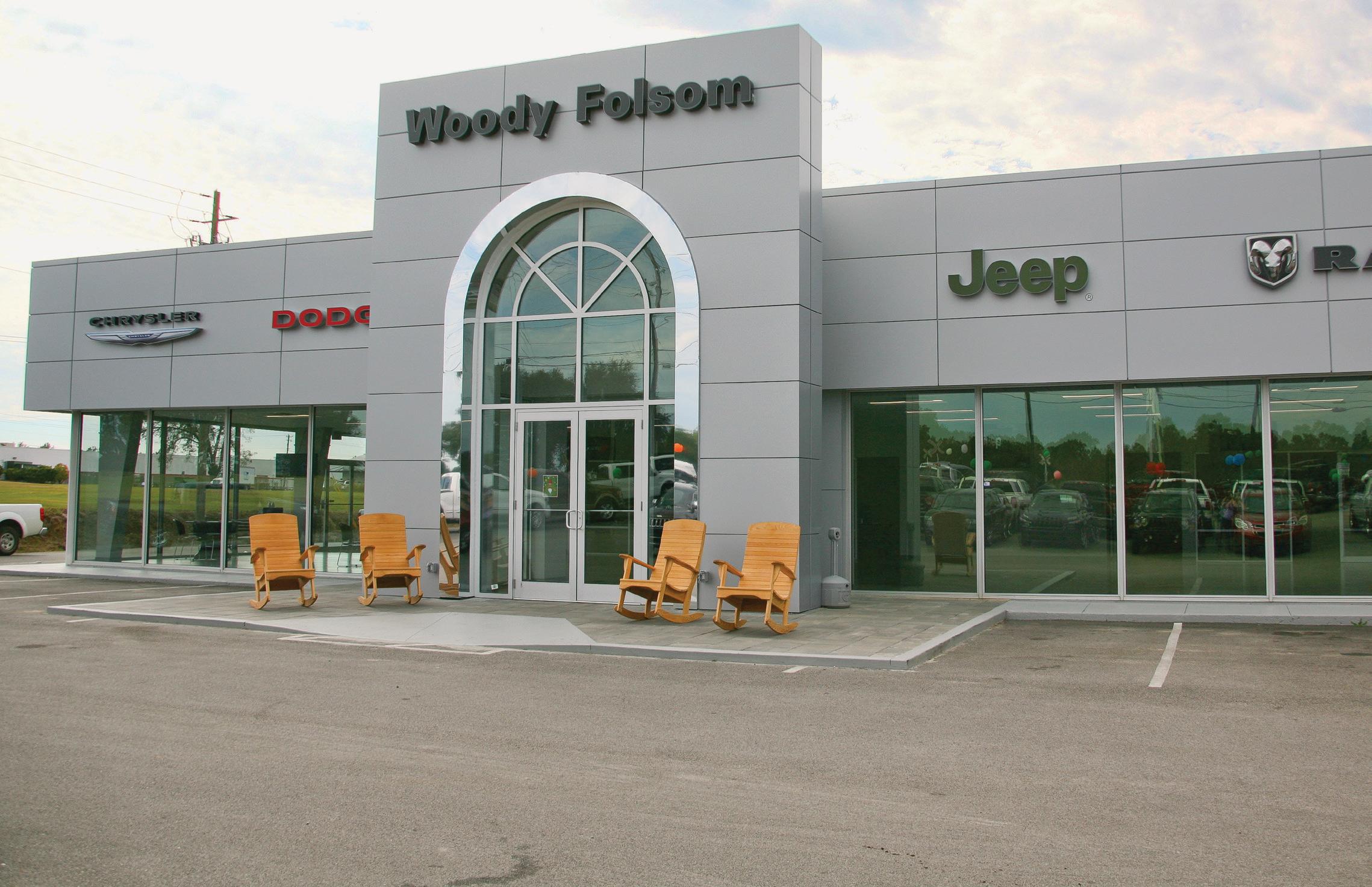
At Serenity
our goal is to provide quality care for patients as well as their families and loved ones while enabling the patient to live with dignity & comfort when facing a life-limiting illness. We provide this service in 77 counties throughout Georgia and offer:




School was where she was supposed to find and perfect her path, not lose it. But in the competitive atmosphere of college art classes, Meredith’s desire for perfection had turned her passion into a performance. It was as if the natural river of creativity inside of her had been dammed up to harness her creativity energy only for a grade. It was 2014, and Meredith Raiford was in Italy for a semester abroad.
“I didn’t know if I wanted to paint anymore,” said Meredith. “I was so caught up in being the best in my class, getting good grades, and making great things every two weeks, I just had lost focus on why I loved art.”
Instead of joining the many artists deep in creative inspiration along the Tiber River or Piazza in front of St. Peter’s Basilica in Rome or at the Ponto Vecchio in Florence, she put down her paint brush and became fully present. “I didn’t paint the entire time I was there. I just took it in. I sketched and studied and enjoyed art again.”
By the time she returned home, she was ready to paint again.
Meredith Raiford had not planned on doing art as a career. It wasn’t that she didn’t love art. “I just had this idea that you had to be Picasso or you couldn’t make it,” she said. “I was going to go into law with the hope that I could still be involved in art in some way.”

Because there was no certain major required to enter law school, Meredith figured she would do something she enjoyed for her undergrad degree before moving on to the important stuff. She started off with a double major in Art and International Studies her freshman year at the University of Georgia. By the end of the year, she had dropped International Studies to focus on art. “Until my senior year, law school was always the plan.”
As a young child, Meredith’s mother Melanie noticed her daughter was drawing illustrations of the sermon each Sunday at First Baptist
a
trip to
resident Meredith Raiford discovered art’s true purpose–to inspire and u p l i f t.
Church in Vidalia during the service. “As he would tell the [Bible] stories, I would draw them out.” As she got older, Meredith drew from the images in the stained-glass windows. When she had perfected those, she moved on to drawing the instruments on the stage.
Recognizing her daughter’s natural talent, Melanie started her in art classes at the age of six with Nora Hale. At the end of the 5th grade, Meredith’s family left Vidalia where her mother had been the Superintendent of Vidalia Heritage and her father the owner of a local company working in secure ID credentials, and they moved to Virginia where she resumed private lessons with another art teacher.
The summer before 8th grade, she said, “I began an apprenticeship with a muralist named Rita Ray, which continued through high school. She would take me and another girl my age with her on different projects and teach us the layout of a mural: how to plan your paints and break down a large-scale project to bite-size pieces.”
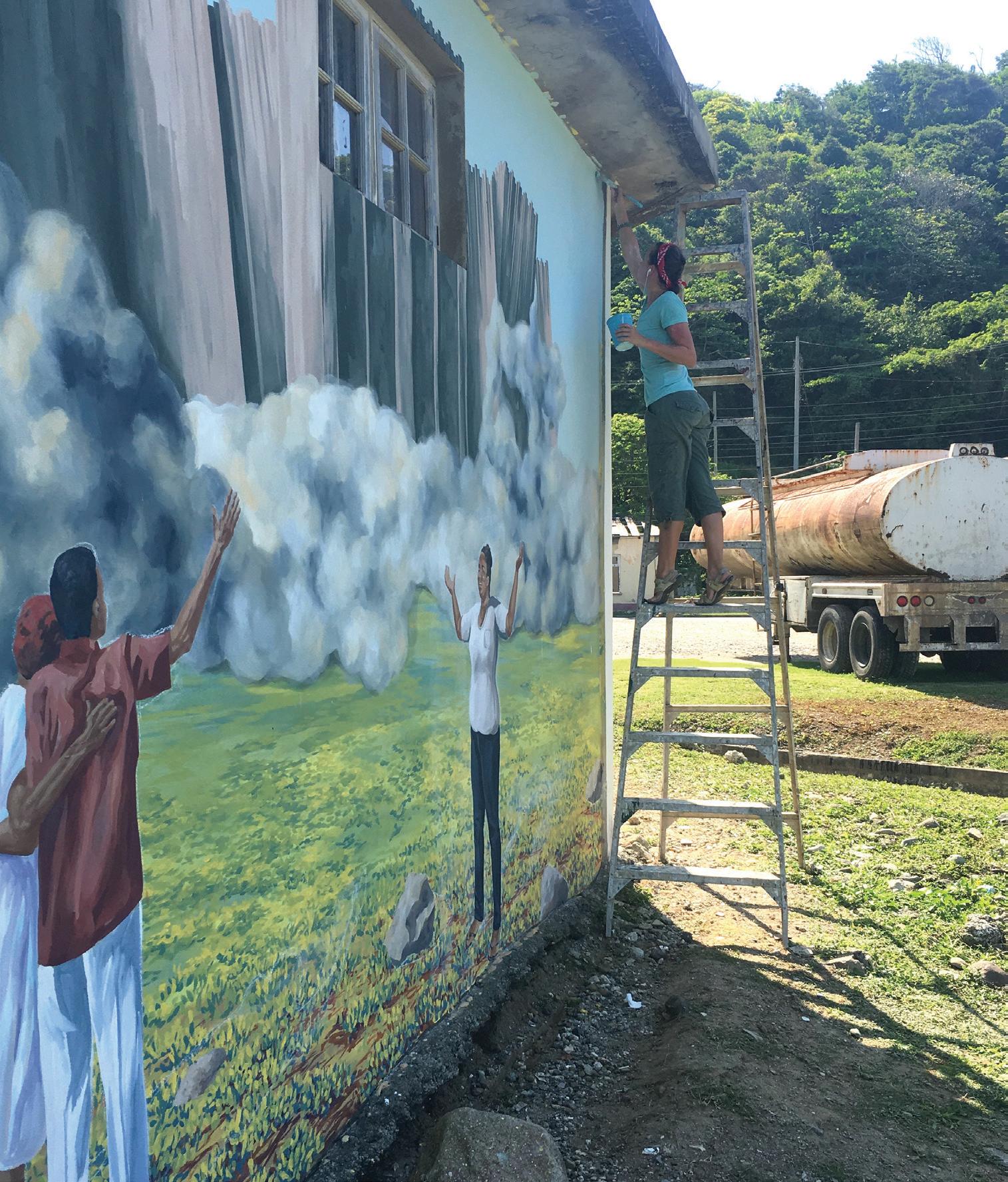
It wasn’t until her sophomore year of college on a mission trip to Jamaica during spring break that Meredith


understood that her artistic gift was not only good enough but greatly needed. “On the last day of the trip, I went to a children’s hospital with our team. I was walking through the halls and noticed how the paint was peeling off the walls. Spiderman posters were torn and damaged. These kids were spending their days alone and sick in a hospital bed while their parents were working to pay the bills for them to get well. What was supposed to be encouraging was depressing,” said Meredith.
Something needed to be said to
lift the oppression. Not with words, but with color and images of life. That was the first time Meredith realized the incredible need for something she called “prophetic art.” It was a phrase she first heard as a child. The phrase was explained from two main Bible scriptures: Revelations 19:10: “The testimony of Jesus is the Spirit of Prophecy,” and 1 Corinthians 14:3: “But everyone who prophesies speaks to men for their strengthening, encouragement, and comfort.”
In an article entitled “What is Prophetic Art?” by Matt Tommey,

a sculptural basketry artist from Asheville, North Carolina, he defines prophecy as: “revealing by divine inspiration, to reveal the will or message of God, to illuminate or bring revelation to a situation.” He further explains:
Artists are the life-givers in culture. We are a pivotal intersection point where the Kingdom of Heaven meets culture. It is there that we have the unique opportunity, through the power of the Holy Spirit, to translate the Kingdom
of Heaven into a language that bypasses words and goes directly into the human spirit…. It is in this context that our art, no matter the creative medium becomes prophetic. (www.theworshipstudio.org)
When Meredith returned from Italy, she felt the time was right. She went to the leaders of the Wesley Foundation Ministry of which she had been a part at UGA for suggestions for places that might have need of her particular gift. Within weeks, she’d lined up all of the locations she would be working with over the next year and began raising support. She said, “Everything literally began to fall into place.”
Meredith graduated with a degree in painting from UGA in the spring of 2015 and left for Mozambique the following August. She boarded the plane with only contact information and a picture of the person she was meeting in hand.



In the capital city of Maputo, Meredith met with an organization called Masana. “Masana means ‘sunrise,’” she explained. The name of the ministry represented a new beginning for young boys of all ages living on the streets. “Many of them have come to the capital city to make money so they can take it back home to their parents. But then they get there, they can’t get work and are met with a harsh street life. Many of them fall victim to abuse or get caught up in the wrong crowds. They feel like they’ve failed and can’t return to their families. They’re not in school and are living quite literally on the streets.”
The workers at Masana offer the boys food, clothing, and a place to receive an education. “But the whole time, they’re looking to restore them to their families,” said Meredith. “They’re building relationships and finding out where their families live. They go out and meet with the parents to see if they’re willing to have them back. The ultimate goal is to get them back home if it’s a safe place for them to return.”
But many times, returning home is not an option. “The home is not safe or welcoming, and there’s no foster care system in place. Masana gets the boys who want to move forward but are unable to return home into apprenticeships and internships so they can finish school and get on career paths so that they can take care of themselves in the future. They also have started HIV testing for the boys and educate them on how its contracted, how to prevent it and in the worst case scenario, how to treat it. If they test positive, they have medicine available to help
treat them. And if they can return to their families, they help the families continue to care for the boy’s medical needs.”
At each place Meredith traveled over the next year, she prayed and opened her heart to listen. She also asked the workers themselves about their hopes and dreams for the ministry in which they served. “And I shared with them what I felt God was saying to me about them.”
Her first “prophetic mural” was on
street boys. The boys learn how to use a paycheck, how to be responsible adults, and they’re mentored in the process. Some of the money from the gym goes back to help fund the school. It’s very well run. I’m really impressed by this ministry.”
Meredith arrived back in the United States only to spend an entire week in bed with a stomach virus. “I had it until Friday of that week.” On Saturday, she did laundry. On Sunday, she went to church. And on Monday, she was back on a plane headed to Peru.
the side of the small building where the ministry was located. “I painted an amazing mural from the story of the Prodigal Son and used one of the boys as the model of the son. Meredith stayed three weeks painting the ministry’s gates with their logo and some graphics for a gym they operate in the city. “The missionaries there are very business minded,” said Meredith. “They started this gym for the rising middle class in the capital city of Mozambique, called ‘Armadura,’ which allows them to employ former
When Meredith contacted the mission organization Inca Link, she was invited to paint a mural at Elim, a ministry in a garbage dump in El Milagro, Trujillo, Peru. “This ministry helps the women and children who live and work in the garbage dump,” said Meredith. “Elim was the place where God brought the Israelites when they first left Egypt. It was a place of refreshing and restoring with palms and springs for God to restore his broken people and give them rest before the long journey ahead. Their idea is to be a place like that for these women and children by teaching the moms how to make and sell jewelry so they can make money outside of the dump.” In addition, the ministry provides free childcare for these women during their lessons and while they work. “They also educate and tutor the children.”
Meredith spent the first week getting to know the people. “I spent a week with them and then started with the background. As God highlighted different people for me, I would ask if they would model for the pictures and paint them into the scene. “I do that just to reiterate to them that they are works of art, that they are beautiful and God has chosen them and made them the work of art in that area.”

Meredith was at Elim from early September until the end of October. In addition to the mural for Elim, she also painted a large, two-story silhouette painting at an orphanage, two paintings for an outdoor adventure ministry, a painting for a preschool in the area, and another painting for a ministry for young girls.
Next, Meredith traveled to Bogota, Columbia. Once again, she partnered with Inca Link to serve a ministry for single mothers and their children called Formavida, which means “Forming Lives.” “This was the most beautiful country I think I’ve ever been to,” said Meredith.
Over four weeks, she painted a mural for a nursery and another for the entrance of a church on top of a mountain where single moms learn to make handbags to sell. “They

While traveling and painting, Meredith’s work has had a large impact on young people. Expressing God’s word for these people through visual imagery provides hope, blessing and encouragment.
also had a great after-school program for the kids.”

For this particular mural, Meredith brought together two Bible stories to demonstrate God’s heart for these women. “The painting was based on two instances when God miraculously provided for two widows. (1 Kings 17; 2 Kings 4). “The key phrase I heard was, ‘On the mountain of the Lord, it will be provided.’”
In March 2016, Meredith flew to Jamaica with Wesley’s “Freshley” ministry for freshmen at UGA. “They go every year and work with different pastors and schools to do whatever is needed whether it’s painting, roofing, pouring cement, or whatever the need.”

After one week, Meredith drove with the group back to the airport and said goodbye. She rented a car and drove two hours back to the hotel to check herself back in. She knew she was to stay and paint a mural, but that was about all she knew. “It was really scary and dangerous,” Meredith confessed. But she also felt it was an act of faith to stay even though she didn’t yet have anything more than a waterfall for a baptismal planned for the following week and some murals of maps for some geography classrooms at a school.
While driving to the school to work one day, she saw it: the wall she was to paint. Only, she had already made an appointment with another pastor. “I’d been trying to work with different pastors at different locations the whole time I’d been there trying to make something happen,” said Meredith. “But everything had to go through a committee, and the committee didn’t meet until the next month. And it was all on Island time; nobody was in a rush. And then I saw this wall, and I knew it was the place.”
Meredith didn’t know how she was going to tell this
Pastor, “I don’t want to paint your wall; I want to paint that wall.” But when she got to the meeting, she just said it plainly: “I was coming to talk with you about your wall, but I just saw this other pastor’s church, and I think that’s the one I’m supposed to paint.”
The guy looked at her and said, “Well, since it’s Holy Week, we have a community service every night this week at a different church, and tonight it’s at that church. If you come, I’ll introduce you to the Pastor.”
Meredith went to the meeting, and as soon as she asked about painting a mural on the side of the church building, he said, “Sure.”
“I said, ‘Do you need to see the plans for what I want to do?’ He said, ‘No. Just start painting.’ And after three weeks of wrestling with all the different pastoral committees in that city, I just had it in a night.”
On the side of the church building that faced the main highway that went around the island, Meredith painted a scene of Jericho using the people in the community as her models. “I saw an image of people in that community breaking free from old strongholds, stepping into God’s kingdom and his freedom, and living a life that was not held back by cycles of generational sin.”

Many people in the community came while she was working to thank her. “They would come up to me and say, ‘That’s what I’ve been praying and asking God for: to come in and break down the strongholds and cycles of poverty that are holding us back.’”
Meredith’s next stop was to be Scotland. But while she was in Peru, she received an email from Sarah
Mondlane, the woman who started the ministry where she’d painted a mural in Mozambique, saying that their landlord had sold the building out from under them, and it was being torn down.
“Finding out that the painting I had just worked so hard on was getting torn down was really difficult.” Meredith questioned, “Why am I going through all of this if it’s just going to be torn down?” The answer she heard was “that it wasn’t mine to think about or worry about. God had purposes and good things for each of these projects, and my part was just to be obedient.”
Another difficult part of Meredith’s work was all the alone time. “I’d been praying for a friend to travel with because it was becoming a lot to be alone so much.”
Three answers came at once. One, in the form of an email from Sarah in Mozambique saying the ministry had relocated, and she asked if Meredith would come back and paint another mural for their new location. The second was a closed door. The scheduling for Scotland just wouldn’t
“Prophetic artwork is something God put in my heart to help encourage and comfort broken people,” said Meredith. “When you recognize beauty and appreciate it, you feel a natural gratitude. And that, to me, is worship.”
line up with visas and travel times. And the third was a text from a girl she remembered from college. “Her name was Melissa Williams. She texted me out of the blue and said, ‘I’m thinking and praying about going to Mozambique this summer. I know you just went to that ministry. Can you tell me about it?’ The dates she planned on going were the same dates as mine for Scotland, so I let that door shut and booked a flight to Mozambique with Melissa.”
In a second mural for Masana, Meredith again painted a scene from the story of the prodigal son.
“In the initial painting, the son was still a long way off. He was still in a broken place with the Father in the distance at the house starting to stand up. It was about the sons going home and being
restored in their homes to their fathers because they were never too far gone to go home. But on the flight over, God put it on my heart that this wasn’t a story about earthly sons and earthly fathers. He wanted to say something about sons coming home to Him and being welcomed home. This mural was to be about their relationship with God himself.”
The new mural depicted a scene after the big party for the returned son with the Father’s arms around him. “I used Sarah’s husband for the father and one of the young boys I loved there as the prodigal son.”
Meredith spent two more months in Mozambique, and in addition to the new mural, she was able to do some work for the ministry’s gym.
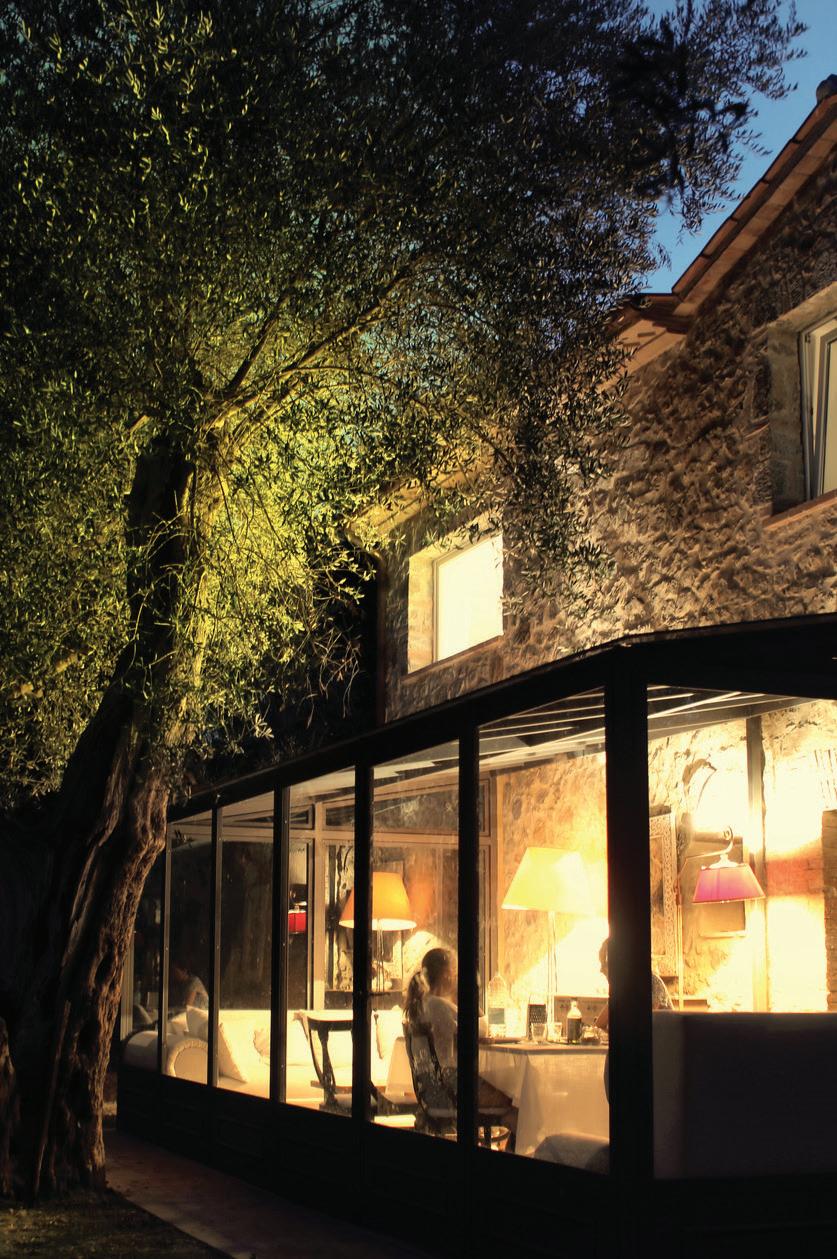




Meredith returned to the home of her childhood to do a show called “The Broken Series” at the Altama Gallery in January


2017. “This is a series of paintings that came after my summer in Italy. The idea is of the beauty in brokenness. None of us are clean canvases,” said Meredith. “We’re all broken human beings.” The “artwork” is in the restoration, she explained.
“I set one of them on fire. I ripped some with steak knives.” For one, she took two pieces of canvases and singed the edges before bringing them together again. For another, she completely ripped a corner and put it back on upside down. “I would burn, rip, tear, destroy the paintings in some way before or after I painted them and then restore them so you would still see the scars and the wounds in the canvas, but you would also see the beauty that was laid on top of it. None of us start or finish life unscarred, undamaged, but I want people to see that our imperfections don’t prevent God from making us beautiful or detract from our worth; if anything, they only add value to the finished product” said Meredith.

Meredith has been working in an art gallery in Norfolk, Virginia, over the past year. Her most recent mural was for River Oak Church in Chesapeake. “I’m doing their entire children’s wing, which is really fun and exciting.” She also works part time as the supervisor for a homeless shelter. This summer, Meredith will be returning to Athens, Georgia, and taking on commissions. She can be contacted at meredithemme@gmail.com.
“Prophetic artwork is something God put in my heart to help encourage and comfort broken people,” said Meredith. “When you recognize beauty and appreciate it, you feel a natural gratitude. And that, to me, is worship.” UTCM

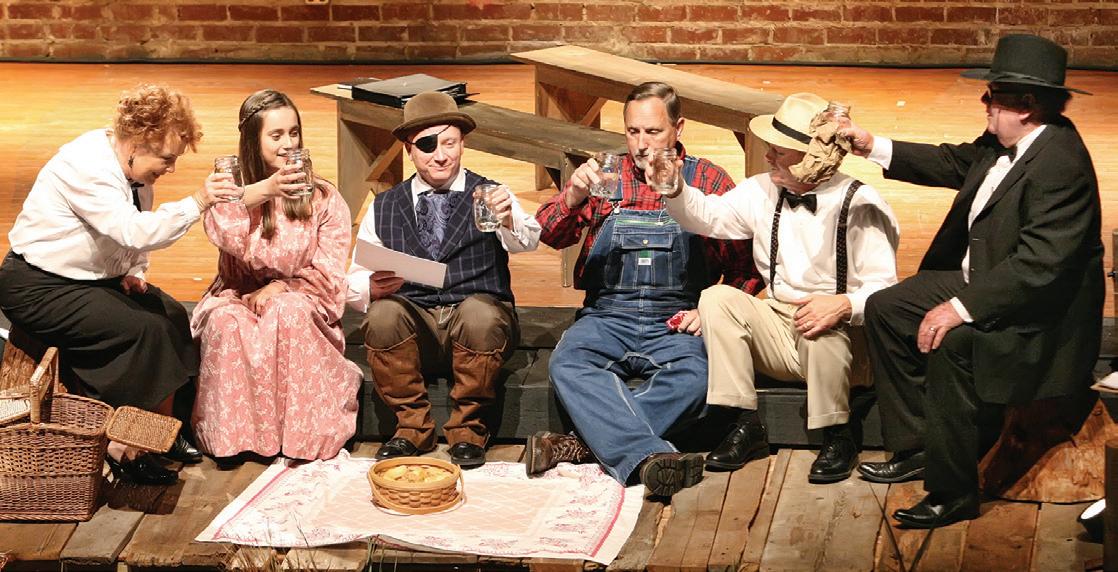
The Lyons Main Street program understands how important a downtown area can be, so we work to improve our Main Street every day. In addition to helping new businesses locate, issuing assistance grants, planning networking opportunities and coordinating beautification projects, we help host and plan a variety of events to engage the community. Take a look at some of this year’s fun-filled events. And if you missed one, make plans to attend next year!

All of our events have their own Facebook page so make sure to like them, and visit us regularly at www.lyonsmainstreet.com to see what’s happening in your downtown



If you enjoy meeting new friends and being active in your community, Lyons Main Street is the place to be! All of these events are sponsored locally and run by volunteers.
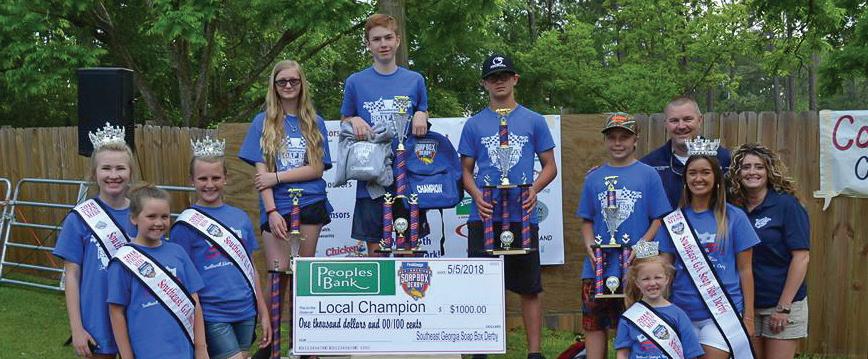


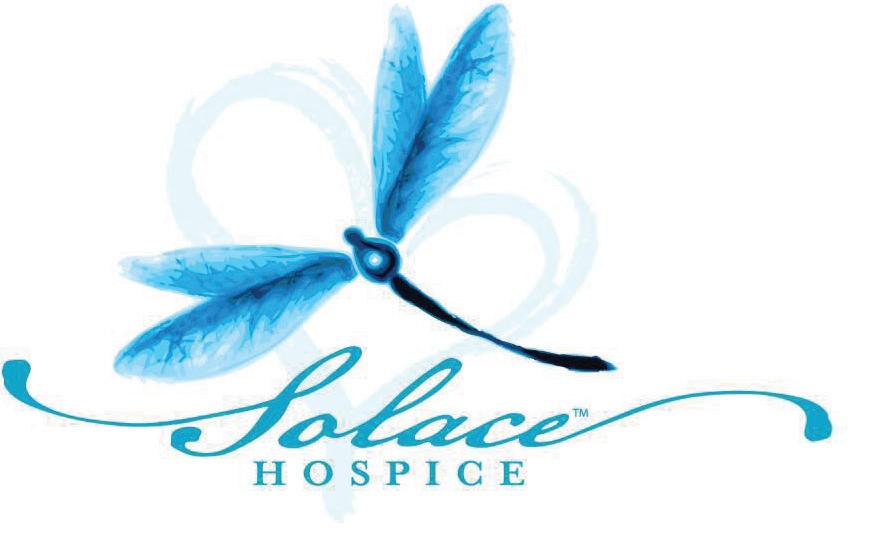












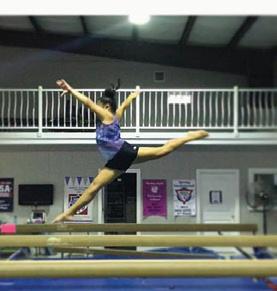
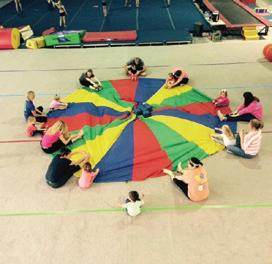



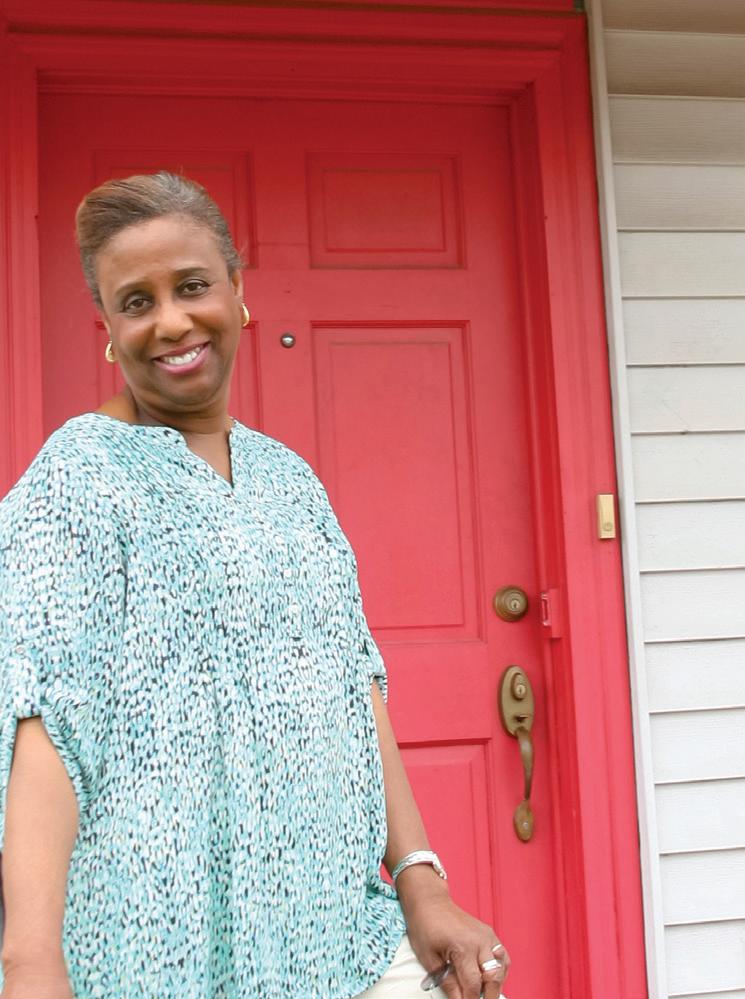

















Destination
ViDalia Main street & BeyonD
Vidalia, GA MAIN STREET has been designated as an accredited Main Street America™ program for meeting rigorous performance standards set by the National Main Street Center. Each year, the Center and its Coordinating Program partners announce the list of accredited Main Street America programs.
“We are thrilled to honor this year’s 829 nationally accredited Main Street America programs for their commitment to preservationbased economic development and the revitalization of their commercial districts,” said Patrice Frey, President & CEO of the National Main Street Center. “The power of Main Street shines across the country through these vibrant communities, who have all worked to generate impressive economic returns, preserve community character, and celebrate local history.”
In 2017, Main Street America programs generated $4.48 billion in local reinvestment, helped open 6,211 net new businesses, generated 30,294 net new jobs, catalyzed the rehabilitation of 8,737 historic buildings, and clocked 2.7 million volunteer hours.
The Downtown Vidalia Association performance is annually evaluated by Vidalia Main Street, in partnership with the National Main Street Center, to identify the local programs that meet ten national performance
standards. Evaluation criteria determines the communities that are building comprehensive and sustainable revitalization efforts and include standards such as fostering strong public-private partnerships, documenting programmatic progress, and actively preserving historic buildings.
Paula Dees-Toole, Executive Director said, “Downtown is the center of community activity with a rich heritage and unique shopping experiences. The revitalization of our downtown district by private investors and The City of Vidalia over the years has created a Southern town with charm and character.”
Tish Holland, President of Vidalia Main Street said, “Investment in our Main Street Program is witness to the fact that we all play a role in creating a thriving downtown for locals and tourist. As a collective group of members we have a shared focus and purpose to promote, maintain and encourage the civic, social, commercial, tourist and economic welfare of downtown Vidalia.”
Main Street America has been helping revitalize older and historic commercial districts for more than 35 years. Today, it is a network of more than 1,600 neighborhoods and communities, rural and urban, who share a commitment to build stronger communities through preservation-based economic development.

In 2018, the City of Vidalia’s MAIN STREET PROGRAM is leading our downtown to a great future. Our Downtown Vidalia Association membership organization will function as we have in the past…a Main Street Director, Board of Directors and a voice to city government through the MAIN STREET office and program. Our Mayor Ronnie Dixon, city council and city manager Nick Overstreet is on board and excited about the future of our “Sweet Onion City”. We invite you to stay connected and let us serve you as we grow together. Excitement is in the air as we

Who doesn’t love a lively, thriving downtown area, with the bonus of small town charm? Making and keeping a downtown healthy and inviting takes a lot of work. I would like to say “Thank you” to those of you who have committed to partner with the Downtown Vidalia Association this year and the many people who choose to shop at home. Your investment in the local family owned businesses, DVA and our Main Street Program is a witness to the fact that “WE ALL” play a role in creating and sustaining a thriving downtown for locals and tourists. Downtowns are a window into a city’s identity.
Several studies have shown that when you buy from an independent, locally owned business, a significant portion of your money goes back into the local economy—further strengthening the economic base of the whole community. Every purchase makes a difference.
I am excited to say that our team did a great job during the 41st Vidalia Onion Festival frying up the delicious onion rings! We appreciate the efforts of our promotions committee, the many volunteers and local businesses that helped make this event possible. Now it’s to begin planning for the Downtown Spooktacular held in October-start perfecting the apple pies and choosing the costumes for all those little ones!
approach the grand opening of our historic theatre. The power of Main Street shines across the country through vibrant communities, who have all worked to generate impressive economic returns, preserve community character, and celebrate local history. With pride, we can say, “Vidalia is one of those cities.”
We all know being a Main Street Director is a challenge on many levels, but the passion I have for this position and creating change runs deep!
Thank you for your support and allowing me to meet this challenge.
If you have a desire to champion this cause, we invite you to contact us for more information. Our board and committee members are volunteers who live, work, shop and serve right here at home.
There’s no place like home!
PLATINUM MEMBER ~ $750+
Altamaha Bank & Trust Co.
Dermatology Associates
Community Hospice
Woody Folsom Auto Group
Woody Folsom Nissan of Vidalia
Woody Folsom CDJR of Vidalia
PATRON MEMBERS ~ $500
Ameris Bank
Vidalia Federal Savings Bank
Georgia Power Co.
McClain, Calhoun, McCullough, Clark & Co.
GOLD MEMBERS ~ $250
Allgood Services, Inc.
Arlene’s Fine Jewelry
Berry’s Floral & Catering
Estroff Properties
Phillips Pharmacy
M&M Realty Co.
Clarke Appliance
Blackbeard’s Seafood & Steak
Ronald V. Hall Funeral Home Service
Mt. Vernon Bank
Million Pines Community Bank/ A Division of The Soperton Bank
Handy Andy Home Warehouse
Dr. Jeremy D. Wood, D.M.D. PC/dba
Darby Dental Services
Dixon Management Group
Dot Foods
American Business Women’s Association
Lovins Realty & Investments
Vidalia Children’s Center
Meadows Sleep Center
Paul Thigpen Chevrolet, Buick, GMC

The Onion Inn
Shoney’s of Vidalia
GENERAL MEMBERSHIP ~ $120
Accordia Urgent Care
Accessorize It, LLC
Alliance Home Medical
Altamaha Animal Clinic
Americ Inn Lodge & Suites
Andrew & Threlkeld, P.C.
Ann & Karl Owens
Any Time Fitness
Archie Branch & Associates, CPA
Beth’s Florist
Bishop-Durden Insurance Group
Blount Investments
Brown’s Jewelry
Brown Insurance Group
Brown’s Implement & Milling Co.
Chicken of the Sea
Clark & Shaw Monument Company
Dean Architecture Designs
Edna’s Market Boutique
Ellis’ Florist & Gift Shoppe
ERA Southeast Coast Realty
Esquire Fashions
ESG Operations
Georgia Eye Institute of the Southeast, LLC
Goin’ Postal Vidalia
Hollywood Fashions
1st Franklin Financial Corporation
Ingley, Moore, Paradice & Co. LLC
Jennifer T. McComas, P.C. Attorney
Joe Lillard Farms
Johnny’s Barber Shop
J Leigh Hair Studio
K E Butler & Company
Lark Builder’s Inc.
Lovins & Associates, LLC
Mary’s M Squared Design Firm
McArthur Rentals, LLC
Massie McIntyre-Attorney
Meadows Regional Medical Center
Medixx Ambulance Service
Merle Norman Cosmetics
Northland Communications/CAC
Palmer & Associates Insurors
Paula & Jerome Toole
Paul Thigpen Ford Lincoln
Peoples Bank
Personal Finance & Tax Service
Red Door Design & Publishing LLC/ Toombs County Magazine
Republic Services
Rhodes Electric Services
Rialto Italian Restaurant
Second Blessings/1st UMC
Selec Source Staffing
Serenity Hospice Care LLC
Sheppard Brantley
Veterinary Associates
Shuman’s/Ideal Cleaners
Sign & Stamp Solutions

Soothing Sensations
Southeastern Paper Group Southern Davis Business Products
Superior Services Company/Sikes Brothers
S’Moore Coffee Shop
State Farm Insurance – Kailey Dees
State Representative Greg Morris & Amy Morris
Stewart Rosier Funeral Home
Sugar Britches
‘Specially For Her
The Advance
The Davis House Photography Studio/ Mimosa Boutique
The Perfect Scoop
The Sandwiche Shoppe
The Temples Company
The Total Look
The Law Firm of Smith & Tillery, P.C.
Tina Jones
Tipton-Downie Attorney
Toombs/Montgomery Chamber of Commerce
Tom Peterson Realtors, Inc.
Tri-County Clinic of Chiropractic
Vidalia Communications
Vidalia Dental Associates


Vidalia Onion Committee
Webster Motor Company
Wilkes Office Machine Company
FRIENDS OF MAIN STREET
Larry Threlkeld
Debbie Kittrell +
Jan Dunham
Lisa Chesser
Wendi & Miles Cason
Heather Mead
2018 Board of Directors
Tish Holland, President ~ Arlene’s Fine Jewelry
Wendi Cason, Vice President ~ Community Hospice
Heather Mead, Secretary ~ Million Pines Community Bank/ Bank of Soperton
Bill Bedingfield, Treasurer ~ City of Vidalia
Sandy Dixon ~ Accordia Urgent Care
Kelly Wingate ~ Medixx Ambulance Service
Charles Tapley ~ Lovins Realty & Investments Company
Ex-Officio Board
Ross Kelly ~ Seasoned Advisor to Board
Lisa Chesser ~ Vidalia City Council Liaison

Greg Johnson ~ Vidalia City Council Liaison
Alexa Britton ~ Vidalia CVB
Michelle Johnson ~ Toombs Montgomery Chamber of Commerce

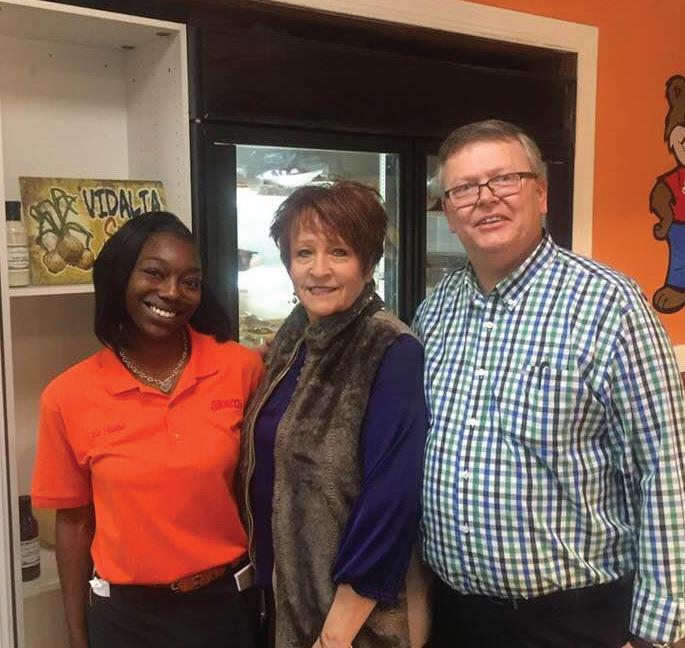


David Sikes ~ Chairman, Toombs County Board of Commission To
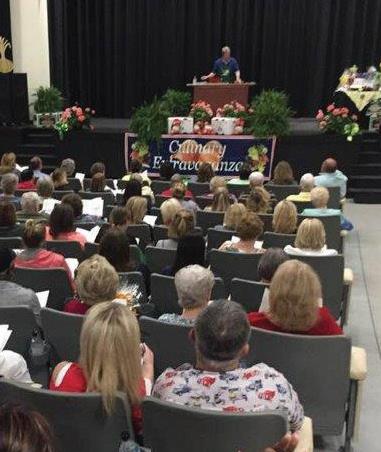

Have you ever walked into your favorite store, and everything was so pleasing to you that you told yourself, “I want all of these things. I have no idea where to put them or how to arrange them, but I must have all these things”? Well, that’s how I feel about these stories–these life experiences of my friend Mose Coleman, Jr. There’s just so much, too much, and I cannot get my fill nor can I perfectly reconcile in my head how to tell you about this man and the fascinating life that he has led.
This work definitely won’t earn me any sort of literary award, and I apologize in advance if it may seem a bit disjointed or lack a sense of cohesion, but it’s really hard to reel myself in. Learning about him and getting to this point that I can share him with you in this manner has been a dream of mine for many, many years.
The content of this series of writings are and will be (yes, this is very much a work in progress) taken from different sources: 1) from a 2-part, video interview conducted by Mose’s grandson Harry Greer; 2) from talking to his family; and 3) from sitting and talking to Mose himself. Some of these stories are just little snippets that don’t really seem to fit anywhere, most are written exactly as he told them, and some are just me filling in some blanks.
Since 2000, Mose has been writing books and restoring old photographs and home movies for himself and others. Because his collection has such an impact on this community, I wanted to introduce you to the man himself. So, here we begin the story of Moses (Mose) Matthews Coleman, Jr., one of the coolest guys I know.
Moses Matthews Coleman, Jr., was born in Lyons, Georgia, on October 25, 1926. Both names – Moses and Matthews – go way back into the family tree. Mose’s grandfather was Moses Matthews, his dad was Moses Matthews, his great grandmother’s brother was Moses Matthews, and he is Moses Matthews. While technically he is not a ‘junior,’ that is the role he chose, and so be it. Following are a few stories in his own words.
HIS PEOPLE
My mother’s parents resided on Hill Street in Athens. It was a huge house with
winding stairs and big windows, and the house must have been terrible to keep warm. They lived there, renting, from 1913 until 1941, and the house is still there. My mother, Alice McCorkle, met my dad, Moses M. Coleman, Sr., in 1919/1920, and they married in 1923 in an efficient manner because Daddy was an efficient man. They agreed to meet in Augusta for the wedding and return to Lyons to make a home. Grandmother and Granddaddy were out of town and had agreed to leave the homeplace for the newlyweds. But it was February, freezing cold, and they found the home to be locked with no lights and no water. Daddy and Mama had to climb

up over a chicken nest to break into the house through the window. Mama always said that she nearly froze to death that first night, and she never got warm after that.
Granddaddy Coleman had 174 acres, and he was 1 of 10 children: Tillman, Wade, Ferst, Gary, Ina, Chloe, Fanny, Berta, Moses, and Butler. Eventually, all the brothers and sisters either died or moved away, and Daddy ended up with all of the property which is where Walmart is now located.

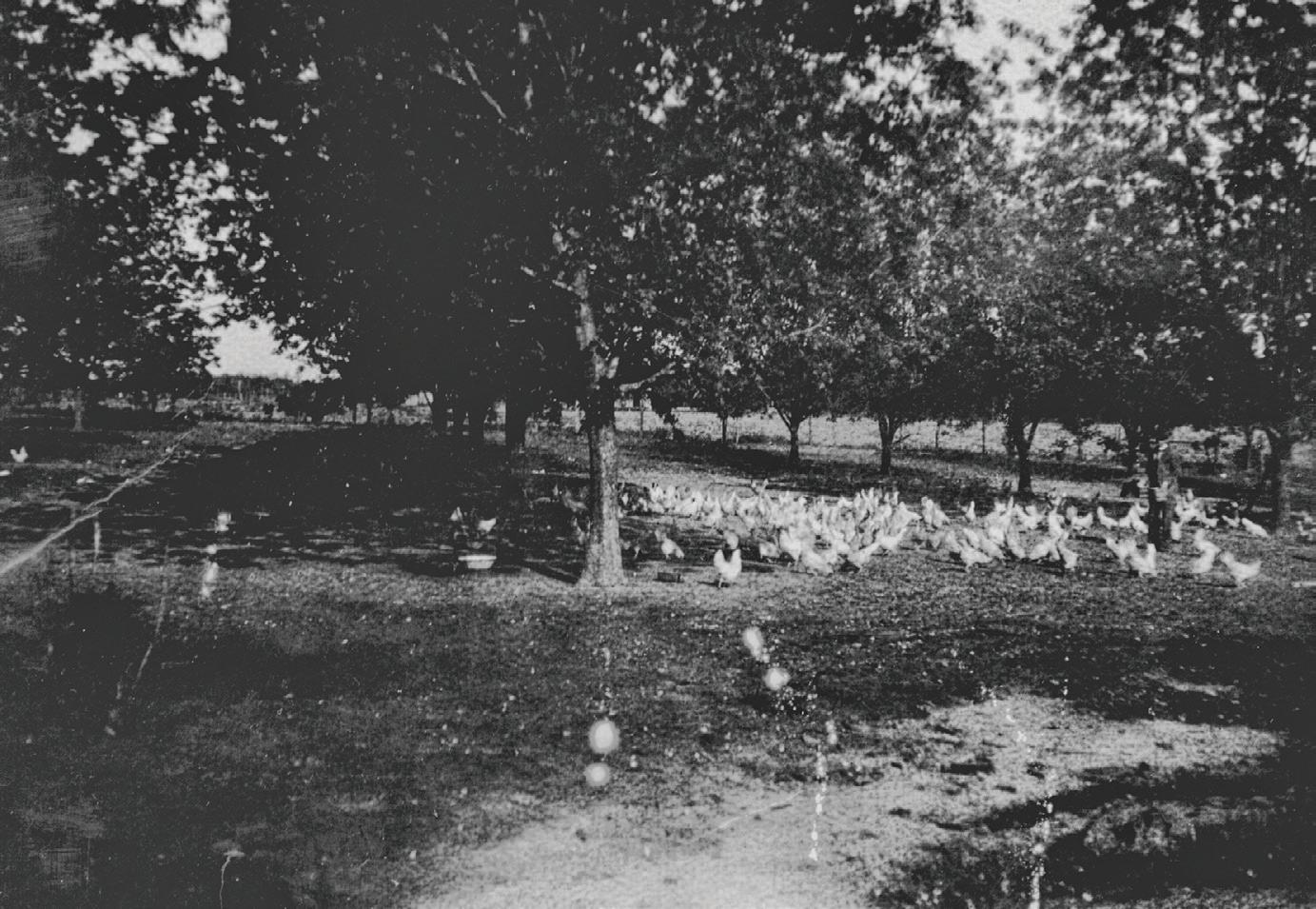
My brother Dan was born in 1923

and was injured at birth. He couldn’t walk or talk well, but he had an amazing memory.
The first memory I have is going to Jacksonville, FL. My mother was really sick with the flu, and they thought she was not going to live; in fact, it was in the paper that she wasn’t going to live. Aunt Ina came and got me and took me to Jacksonville where she lived, and I don’t know how long I was down there, but I do have a faint memory of that trip, and I think I learned to talk while I was there. They said that I was kind of slow beginning to talk, but when I started, I had a big vocabulary.

I’d just been holding it back, I guess. I remember that Uncle Jim, Ina’s husband, worked on the railroad. I guess he was a conductor.
Aunt Ina had a radio, and she had a vacuum cleaner that I was scared to death of. I mean I scattered when she cranked that thing up. So when I came back home to Lyons, I had been down in Florida so long that when Aunt Ina left, I ran around the house calling “Mama!” looking for her. I think it kind of hurt Mother’s feelings, but I guess I was down there long enough that I thought Aunt Ina was my mama.
We didn’t have electricity.
We didn’t have water. We had an outhouse and lamps, that’s the way we could see at night. At one time, we had a Coleman lantern – it was a fancy one like you would have in a living room, and it was miraculous that you would have that white light instead of that little, dim yellow light of a lamp. We had an old radio – a Freshman Radio – a 5-tube, battery-operated radio with a big horn speaker, and they were pretty expensive back in those days. Daddy used to listen to KDKA in Pittsburgh; that was one of the best stations to pick up.
Daddy was in the chicken, cattle,
CLOCKWISE
addition to farming, Mose’s father was a business man who served as a bank director and ran a beer distribution company. He also taught Mose how to develop film and encouraged his interest in science. Hog killings were annual events that brought out the entire community including the local County Agent, who took this picture with Mose and his brother Dan. Mose’s Aunt Ina lived with his family for a long time and played a big role in his life. Mose’s mother Alice McCorkle Coleman. Mose and Dan in the first grade at the Lyons school.

egg and sweet potato business at the time and was President of the Toombs County Sweet Potato Association. When his daddy died (I would have been about 2), according to Mother, Daddy got sort of depressed, and he decided to get a job with Swift & Co. selling fertilizer. They furnished Daddy with a Model A coupe which was his business car, and he travelled around South Georgia selling fertilizer. This was also about the time that he got into onions, which were originally Bermuda Onions. Daddy recognized the sweet onion’s taste and began to realize that they were a viable way for farmers to make a good living.
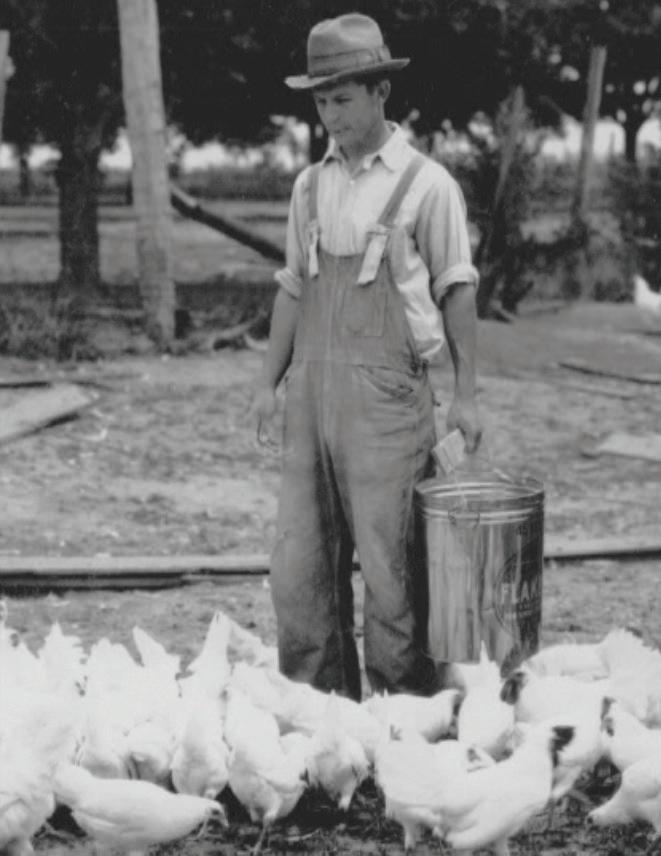
Daddy was always trying to lift up the farmers of the area, to do better and to work harder.
Around 1933, I’d already started school, and Dan and I were in the same grade. Also, 1933 was the end of Prohibition, and Daddy decided that that was a way of making some money. The Depression had already hit, and Daddy got wiped out. He was a bank director when the banks failed and the banks lost all their money. Back then, as a director, they made Daddy cough up some money so they had him owing more than what he had. Daddy never figured the bank was gonna fail – but it did. Daddy
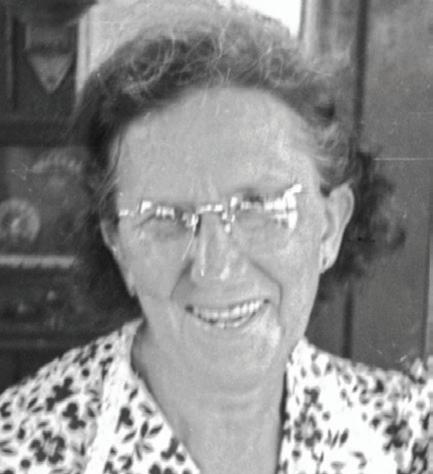


had to go to Uncle Gary to borrow the money to save the farm because it was advertised in the paper that it was going to be sold at the sheriff’s sale. Uncle Gary didn’t keep his money in the bank, he kept his money in the post office. You could put money in the post office back in those days, and he figured it was safer than the banks… and it was.


It was pretty tough times, so Daddy and Fred Bargeron decided to get into the beer business. Fred had a little money, so they drove to New York in a truck to see if they could buy some beer, and they found someone who had 80 cases. Somewhere in North Carolina, a motorcycle policeman stopped them and wanted to know what they were hauling. It frightened them a little bit because it was so close to Prohibition [ending]. They said they had beer, and the policeman asked them if they had any samples. Fred almost broke his leg getting out and over the back of the truck to give the policeman a case of beer.
They got back home and stored the beer in the pool room – that was the warehouse. Daddy and Fred’s partnership lasted until Fred wanted to get into the liquor business, but Daddy did not, so they split up. Left with the business alone, he didn’t have any money or credit to go out and buy large amounts of beer, so he got with Mr. Brice (Tanner-Brice Company), and they went into partnership. Mr. Brice had credit, and they could buy the beer. That lasted a couple of years, then Brice wanted out of the beer business and Daddy was left alone with it again.
The summer after first grade, Orvelle (Aunt Ina’s daughter, my cousin), Aunt Ina, Mother, Ruth Baker, Dan, and Earl Kicklighter all went to Florida to the beach. We had a cottage and drank “home brew” and played the wind-up phonograph. That was my first sunburn, and it was bad. I had a little onepiece, wool bathing suit with a sailboat on it. When salt water
got in that bathing suit, it would really itch!
Uncle Jim, Aunt Ina’s husband, was a Merchant Marine, and he got a job with Standard Oil Company on a ship, so Aunt Ina and Orvelle moved up from Jacksonville to live with us. Orvelle was in the 10th grade at that time and used to take me and Dan to school.
Aunt Ina did most of the cooking, cleaning, and chores [at our house]. I slept in the bed with her and Orvelle back in those days. In the winter time, Aunt Ina would get up before sunrise and get the fire going. She would have the kindling ready the night before. As soon as she would hop out of the bed, I would roll over into her warm spot. She would get the wood stove going and cook a huge breakfast every morning – grits, for sure, a stack of biscuits, ham, bacon, coffee. In the winter time, Mother would put hot oatmeal in a glass with milk and sugar, and it was like a thick milkshake. “Deeelicious.”
Daddy bought a 32-volt DC Delco generator that provided electric lights. They were sold for farms and a lot of houses in town that didn’t have electricity. We had a light hanging down in each room. Often the Delco would quit running, and the lights would dim and slowly go completely out. Orvelle had a party once with friends from Lyons, but the electricity would barely work. One of the farmworkers came and cranked on that thing half the night to keep it going for the party. He’d crank on it, and they’d brighten up, and then they’d go dim again, and he would crank on it some more.
Not long after, Daddy got a well pump that ran off of the Delco. The pump was down in a 6’ deep pit to raise the water up out of the well. There was a tank about 30’ up in the air right by the pit, and that was our waterworks. Daddy turned a closet into a bathroom. There was no commode at the time, just a bathtub. The tub was there the
whole time on the back porch by the well. Someone would draw water from the well and pour it into the tub for your bath. I didn’t remember any grown ups taking a bath, so one time I asked Mother how they took baths, and she told me they just had to wait until night, and they didn’t take baths much in the winter.
In those days, the County Agent would travel around helping and advising the farmers, and they also had a photographer that would take pictures of what the farmers were doing. On one particular rainy day, Dan, who was eating a biscuit, and I were sitting on the porch watching the hogs being butchered, and the photographer told us to come and get in the picture. The photographer pulled the black hood over his head and the camera and took the picture. The hog killing was an annual affair, and everyone got involved. Every part of the hog was used – everything that didn’t go anywhere else went into the sausage, and I loved it! They would cook the fat down in a big pot and get all the grease cooked out of it. The grease was the lard, and what
was left was the cracklin’. It was like popcorn. We’d put it in a bowl in the kitchen, and everytime anyone would walk through the kitchen, they’d grab a handful.
They would take the intestines and make the sausage casings. Daddy was a farmer, but some things he didn’t know how to do too well. He wanted to make sure the intestines were clean, so he washed them with soap and water. When they first went to stuff the casings, the meat slid out.

Eventually, they hung the sausages in the smokehouse, using string to tie them up from the rafters to keep the rats from eating them, but I think we kind of shared it with the rats. Underneath the smokehouse door was a little runway, and it was made so the cats could get into the smokehouse to catch the rats and mice. Every morning you would go out into the smokehouse and cut off a piece of sausage and bring it into the house and put it in the frying pan. We ate some pretty rough stuff in those days.
UTCM

How precious to me to write about a woman I call my dear friend – Celester “Qumi” Bacon– a woman who speaks life to me boldly and shines bright with the love of Christ.
As a single mother with eleven children, Alma Jean McClendon lived a reality I can hardly process. As the story goes, she lived it well, and that is where Celester’s story begins.
Celester “Qumi” McClendon Bacon is the seventh of eleven children. She now considers her childhood a blessing, but that was not always the case. Living in a single parent home where her mother Alma worked multiple jobs, Celester states there were times when she felt slighted and dreamed of having more material possessions. She saw how others had new bikes and new clothes. She admits that at times she even resented being in such a big family. Looking back, though, she now realizes that her mother gave her the best gift possible, that of loving God and loving others. “Mama taught us what good is it for a man to gain the whole world and lose his soul,” said Celester. Her large family is now one of Celester’s biggest blessings.
Celester recounts her mother always speaking the truth in love. Ms. Alma wanted her children to know the truth of who God really is. Not only was Ms. Alma constantly ministering to her children but also to the community. Remembering her mother, Celester explains, “People, if they were hungry, she fed them. If they needed clothes, she gave them clothes. If they needed a place to stay, she provided shelter. She was a woman after God’s own heart.” Ms. Alma did not do this out of a physical abundance but a spiritual abundance.
Celester, now a grown woman with three grown children – Dominique, Ryan and Amber and 10
LEFT Celester with her children Ryan, Amber and Dominique. BELOW One of Celester’s many talents is braiding hair. It’s a hobby she has had since she was seven. BOTTOM LEFT As a nurse at Sally D. Meadows Elementary School, “Nurse Bacon” has healed many a physical and emotional wound with her caring spirit.

grandchildren, seeks to establish her own legacy of honoring God. During her children’s growing up years, Celester was determined to have her two sons and daughters involved in church. She states that they remain her passion. In the early years, it was supporting her children in whatever activity they were in from baseball to cheerleading. Now that her children are grown, she remains their biggest fan. While Celester says her biggest calling is that of being a mother, she most certainly wears many hats. From doing hair to nursing to putting on stage plays, she stays immeasurably busy.
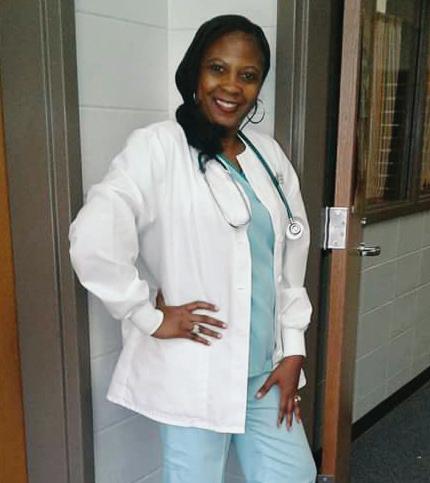
Celester established “Let it Be Real” Ministries when she saw how moved people can be from stage plays. Her first production was “I Know I’ve Been Changed.” The story line was that of a woman who had learned about God from an early age but had never surrendered to Him. Through a string of bad relationships and drug use, the woman had become bitter and angry until she discovered a life line. A lady in a nail salon saw past this woman’s tough exterior and invited her to church. Resentful and rude, the woman reluctantly accepted the lady’s invitation. She later had an encounter with the Living God where she surrendered her life to Him. After the production, “I Know I’ve Been Changed,”

Celester saw a huge response to the message. Weeks later, she continued to hear testimonies of people giving their lives to God. She saw then that God had a calling on her life to give Him glory through the platform of stage plays. With her productions, Celester seeks to let others know that people don’t come perfectly to God. The invitation is to come as you are, and that is where the personal journey of sanctification begins. While attendees find themselves laughing and crying during the productions, Celester states that the main goal is to help people have an encounter with Jesus. Over forty people surrendered their lives to Christ after the first production. Celester knew then that
God had a calling on her life. She is the founder, writer, director and producer of the “Let it Be Real Ministries. The Lighthouse of Gospel Stage Plays.” Her latest production this past April was “The Miracle Hospital, Take a Second Look.” While it was a completely separate play from her previous “Miracle Hospital,” it continued with the same theme. Celester took real life stories of how God has worked miracles in local community people and wrote a play about it. Pulling casts and crews from area talent, Celester has written and directed five plays. These theatrical undertakings have all been under the umbrella of her “Let it Be Real Ministries....” Three of her five stage
plays were performed in front of a soldout audience.
The stage plays are no small undertaking. From the writing to the casting to the set to the logistics of ticket sells, there are many facets to putting on a production. Celester insists that the production itself must be a ministry to those involved. Celester has walked out in faith, using her own money to produce these plays, choosing not to rely on corporate sponsors. She explains that God has always provided because it has always been about Him. While she seeks to highlight local talent, of which there is an abundance, the glory remains the Lord’s. These annual stage plays are held on the fourth Saturday of April.
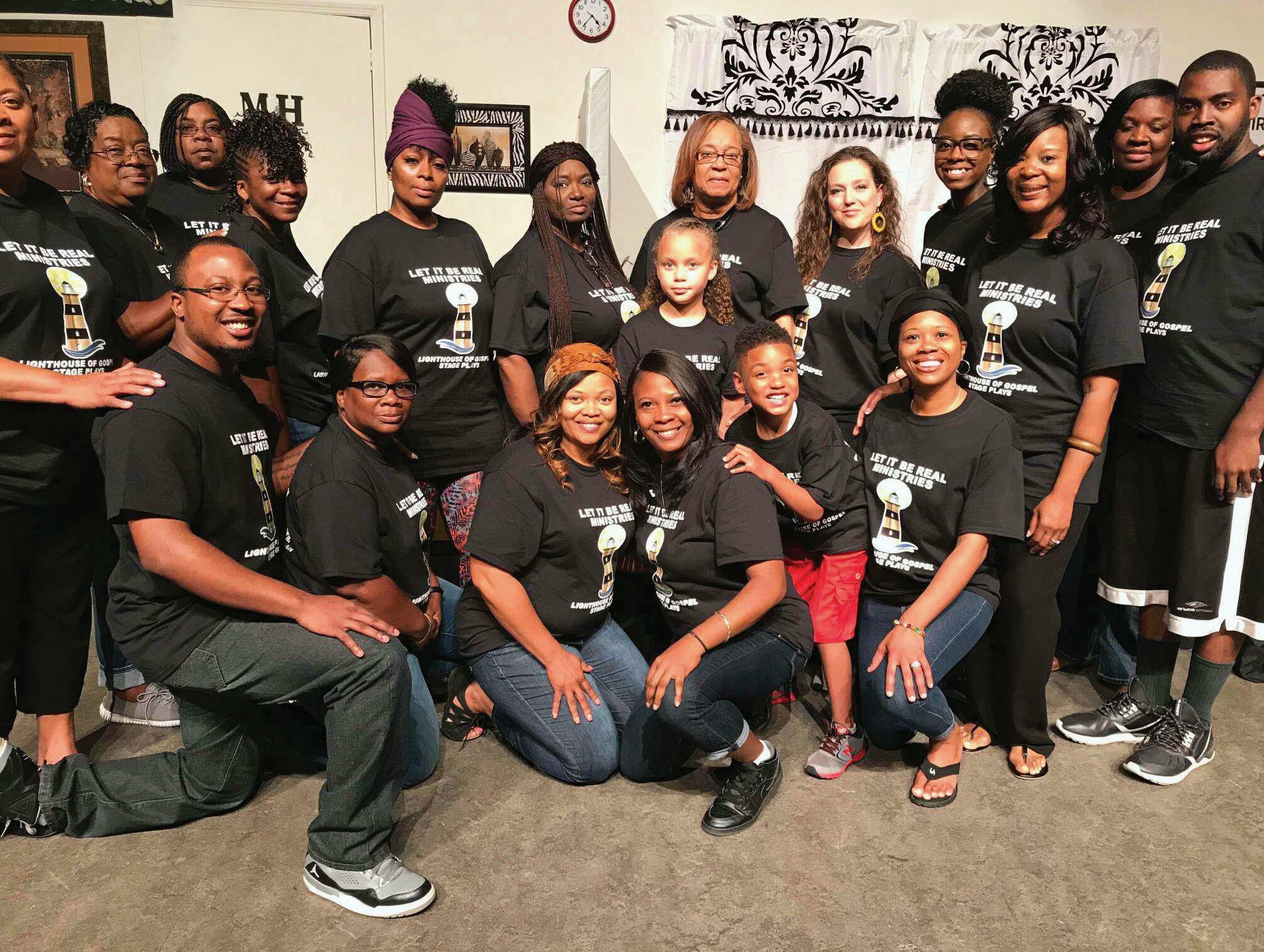
For weeks after one of her productions, Celester continued to hear testimonies of people giving their lives to God. Since then, Celester has written and produced five plays.



Beyond stage ministry, Celester also has the calling to bring together women of different races and socioeconomic backgrounds. In October of 2017, she held the first “Pearls, Purpose and Power – A Women’s Empowerment Collaboration.” Through a brunch, she had different women speak about different issues from weight management to unity in the body of Christ. The event was free. Laughter, encouragement, and tears emanated from a very eclectic group. I had the opportunity to attend, and it was certainly one of the highlights of my 2017. I suspect this will be the beginning of many more such gatherings. Count me in!
Celester is also the main coordinator of the yearly Martin
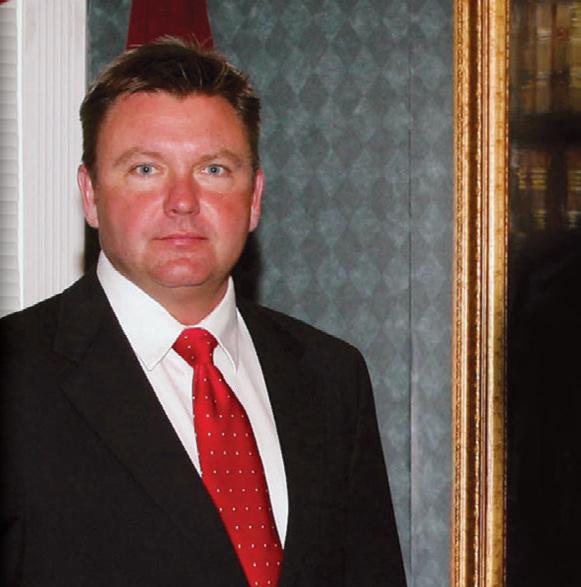













Luther King, Jr., parade. While the Community Men in Action put it on each year, they look to the Community Women Taking Action to help support and organize the parade. I have attended the parade for the last two years and had a blast taking my children. Where often in the news we see violence and strife in race relations, this parade is a peaceful demonstration of seeking to bridge some gaps in social injustice, to bring light to a significant minister in America’s history and to celebrate his impact. The parade has grown every year. This past year there were over 100 entries. The parade ends with a picnic at the Flossy Hayes Park.
Celester’s talents do not stop there. In fact, many people in Vidalia know Celester not as Qumi or Celester but as “Nurse Bacon.” As an LPN school nurse, she mends all the bumps and bruises and monkey bar injuries sustained at Sally D. Meadows


Elementary School. To say her station is hopping is an understatement. With an enrollment of close to 800, she stays on the move with diabetic students she treats on a daily basis to the infamous: “Do you have a band-aid?” and even to the “I got a mosquito bite last week, and it still itches.”
While most would be completely ruffled by the continual traffic, I have watched Celester use her job as an opportunity to cheer up children and speak life to them. Students leave the nurse’s station “better” than when they arrived, both physically and emotionally. Even staff come by to get some of Nurse Bacon’s “magic water” which cures all kinds of ailments. Celester has worked as a nurse for the Vidalia City school system for fourteen years.
One of Celester’s favorite past times is braiding hair. From the age of seven, Celester began braiding
her sister’s and friends’ hair. Many people have said that her hands are “anointed.” At the age of thirteen, Celester got her first job braiding hair at a local hair salon on the weekends. She continues to use her skills in this area as a licensed cosmetologist. Having a heart for the students, you will often see Celester fixing braids along with boo-boos.
The imprint of her mother’s life is indelibly on my friend Celester. She knows that even through the various hardships she has experienced in life, she has also been given much. In turn, she is determined to give back. From loving on her children and grandchildren to ministering to her community, she looks forward to that day by God’s grace when He says, “Well done my good and faithful servant.” Let It Be Real. I for one cannot wait to see what she does next!
UTCM












Ihave a theory, which is also my justification for my ever-growing collection of old books written by women authors: We are all drawn to physical things that speak messages and truths to us. It may be a seashell or artwork of some kind. The obsession...I mean, “hobby,” is usually about something more than the obvious. For me, it’s more of an interest in the author than the book itself. For Emory Davis, that voice first came in the form of a stone, a sapphire in the hand of his youngest son Benjamin. After all these many years, the memory of that one stone still speaks to him in every piece of artwork he handcrafts from the earth’s treasures.
“My oldest son Bart was playing in a Mighty Mites State Tournament up in Commerce. I’d never been to the mountains. Growing up, we always went south for vacations,” said Emory. “Since we had to be up there for a couple of days, we decided to check out some gem mines like all the other tourists. We found some neat rocks and panned for gold, but Benjamin actually found a nice sapphire. When he showed it to us, he liked it so much, he said he wanted to make some earrings from it.”
Emory and his wife Marge couldn’t find anyone who could do that kind of work, and the stone was put away and forgotten. Tragically, their son Benjamin died in 1993 in a car accident at the age of thirteen. A couple of years later, Marge noticed a lapidary magazine on the magazine rack at Winn-Dixie and brought it home. Lapidary, I learned from Emory, related to “stone and gems and the work involved in engraving, cutting, or polishing.” In the back of the magazine, there was an ad for weeklong courses at the William Holland School of Lapidary Arts in Young Harris, Georgia. The following summer, Emory and his wife signed up for the first of what would become a succession of eight years of week-long summer classes in various kinds of lapidary work.
“The school is built on the side of a mountain,” said Emory. “The teachers are mostly a group of retirees. Classes run from Saturday to Saturday March through October. It’s beautiful up there.” At present, thirty-two different courses are listed on the school’s website.
Emory chose to begin with gemstone faceting, and Marge signed up for the cabochon course. The basic elements of faceting according to www.gemsociety.org are “the angle of the cut, rotation of the gem, and the depth of the cut.” “Faceting,” said Emory, “is basically cutting stones. Learning how to set angles and degrees using diamond wheels.” His wife Marge chose to begin with cabochon, “which is the opposite of faceting. It’s smoothing and polishing clear bright stones like diamonds, rubies, and sapphires.”

Year after year, both enjoyed the various classes offered at the school. Before long, Emory and Marge were traveling North three or four times a year to explore the area for native stones and attend the many gem shows held in the area. “Franklin, North Carolina, is less than an hour drive from the William Holland School of Lapidary Arts. It’s the gem capital of the world,” said Emory.
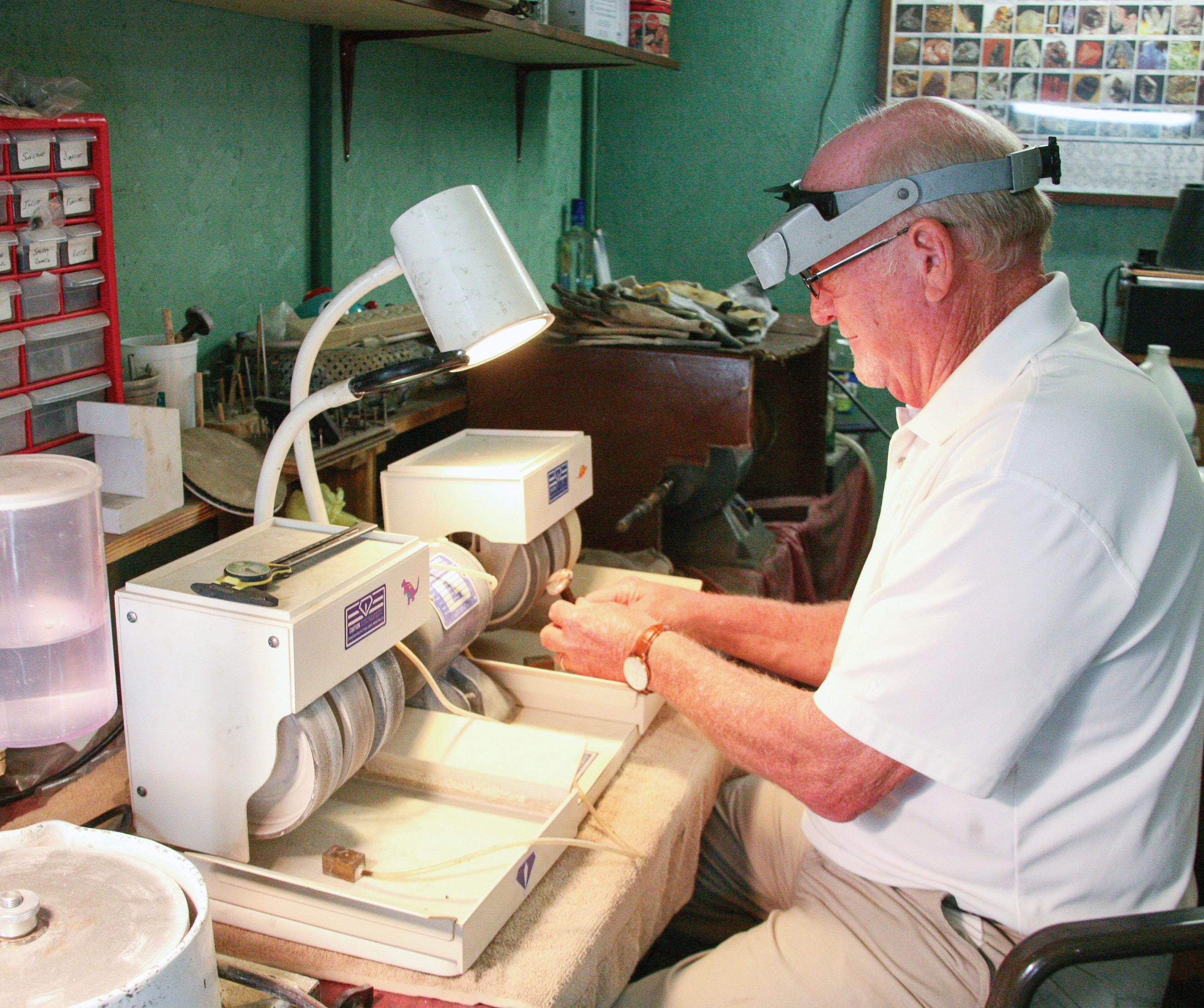
He also built a gold dredge with a two-inch water pump hooked to a vacuum. “The vacuum sucks dirt off the bottom and runs it across a sluice. The heavier stuff settles in the miner’s moss, and the other stuff runs off.” Many have perhaps forgotten that it was rumors of gold that actually brought Hernando de Soto to our eastern shores in 1539.
The enjoyment for Emory is not only in the discovery but in the knowledge that he holds something from the
earth made millions of years ago that perhaps no one has ever touched. In addition to rocks and gems, Emory has also discovered Indian artifacts in his self-made tripod sifter. The many mines and rivers of North Georgia belonged first to the Cherokee, after all. Although the first recorded discovery of gold in America was in 1799 in North Carolina, the first actual “gold rush” happened in Georgia. Twenty years before the “forty-niners” rushed out to California, “twenty-niners” poured into North Georgia after the discovery of gold in 1828 on ancestral Cherokee lands. Pure greed led to what is now known as the “Trail of Tears” when literally thousands died after being forced on a 700-mile march from Georgia to Oklahoma for the sake of gold.
Although the gold rush has long since passed, gold can still be found in Georgia. Edgar B. Heylmun, PhD, writes
After accumulating three rooms of equipment, Emory decided to convert a pole barn to his permanent workshop. Here he creates beautiful pieces that he sells at shows and jewelry stores.


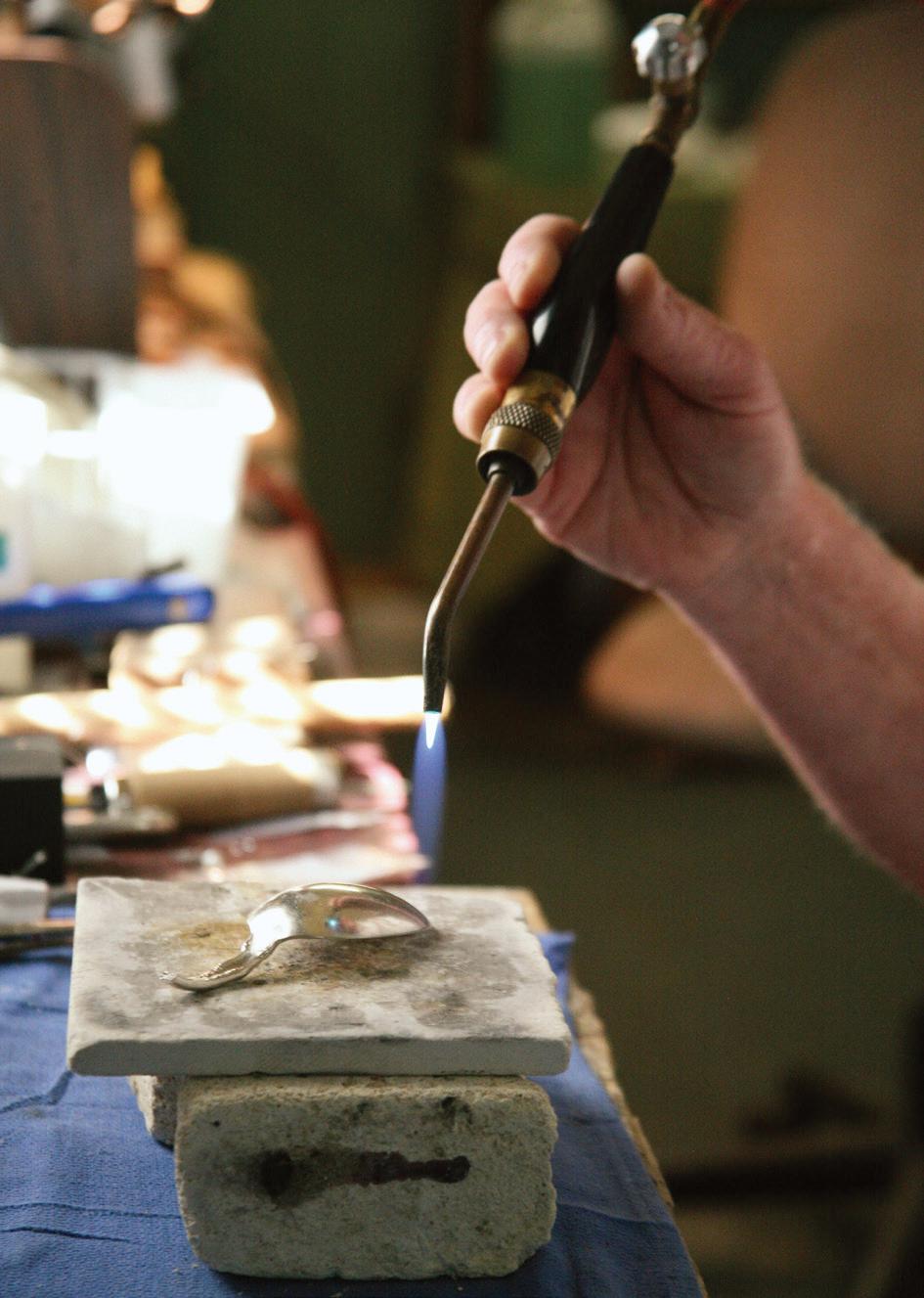

in a June 2000 online article for the “ICMJ’s Prospecting and Mining Journal”:
There are a number of ‘gold belts’ and portions of belts, which cut northeastwardly across the Piedmont and Blue Ridge provinces of Georgia…. The most prominent is the Dahlonega Belt, which extends from Alabama to North Carolina.
“There’s no telling what you can find on Graves Mountain,” now privately owned, “or in Lincolnton and the Washington, Georgia, areas,” said Emory. According to the Georgia Mineral Society, Inc., website, “Graves Mountain,” in east Georgia’s Lincoln County,

“Once you find a beautiful stone native to the earth, you can’t just walk through the woods anymore,” Emory said. “You pay attention.”
“is accessible and open for mineral collecting by colleges, universities, and gem and mineral societies. Groups as small as two INDIVIDUAL mineral collectors can now reserve the mountain!” And during April and October, “The caretaker in charge of Graves Mountain, Clarence Norman Jr., has announced plans to hold a three day dig and rock swap.…” In a 2012 article for the Atlanta Journal Constitution entitled “Graves Mountain: A Rockhound’s Mecca,” writer Charles Seabrook described the mountain as “an international hot spot for collecting a variety of prized rocks and minerals.”
Another great gem mine that is also open to the public and known for its native rubies and sapphires is Mason’s Mine in Franklin, North Carolina. The pink or red mineral rhodolite can also be found there, according to Emory. “If they find a pocket of rhodolite, it takes a front-end loader to bring it out. You can shovel out of the pile that’s brought up for so much a day. You’re not going to find a lot there, but when you do, it’s something no one has ever touched before. That’s the thrill of the hunt.”
“The world descends on Franklin, North Carolina, for gems. There are mines all over the place up there, although you can’t get into most of them. When I go, I’m looking for native stuff, not tourist stuff.” Now, most of
Emory’s finds are at gem shows and the antique shops he frequents in North Georgia and North Carolina. “Sometimes you get lucky with a $20 or $30 bucket loaded with pretty stones in a tourist shop, although you can’t depend on a shopkeeper’s description.” Often, people bring their finds or purchases from the mountains home for Emory to examine in hopes they have stumbled upon that one “lucky find.”
Through the years, while Marge became more involved with grandchildren and other interests, Emory continued to hone his skills becoming an accomplished lapidarist, which is simply “an artist or artisan who forms stone, minerals, or gemstones into decorative items such as cabochons, engraved gems (including cameos), and faceted designs.” And as his expertise developed, his equipment and supplies also grew. When his equipment took over a third room in his house, Emory perceptively decided it was time for a “workshop/man cave.” With the saws, drills, faceting and cabbing machines, kiln, cutting and polishing laps, rock tumblers, and all the materials and supplies that go with them, an old pole barn out back went through a transformation.
“In 1998, Arlene Powell, the owner of Arlene’s Jewelry, said to me, ‘We need an onion to represent the town.’ I was about to go to my second silversmithing class, so while everyone else was making butterflies and cats and dogs out of silver, I was making onions.” By the end of the week, Emory had created four prototypes of onions. He put the pendants in Arlene’s store, and they were all bought within a couple of days’ time.

“For the first couple of years, I was just making things for Arlene’s store and personal items for people,” said Emory. But in 2001, he was asked to set up a booth at the Vidalia Onion Festival. “He capitalized the first two letters of the word memory to represent the first letters of his and his wife’s names and officially gave his jewelrymaking business a name: “MEmory’s.”
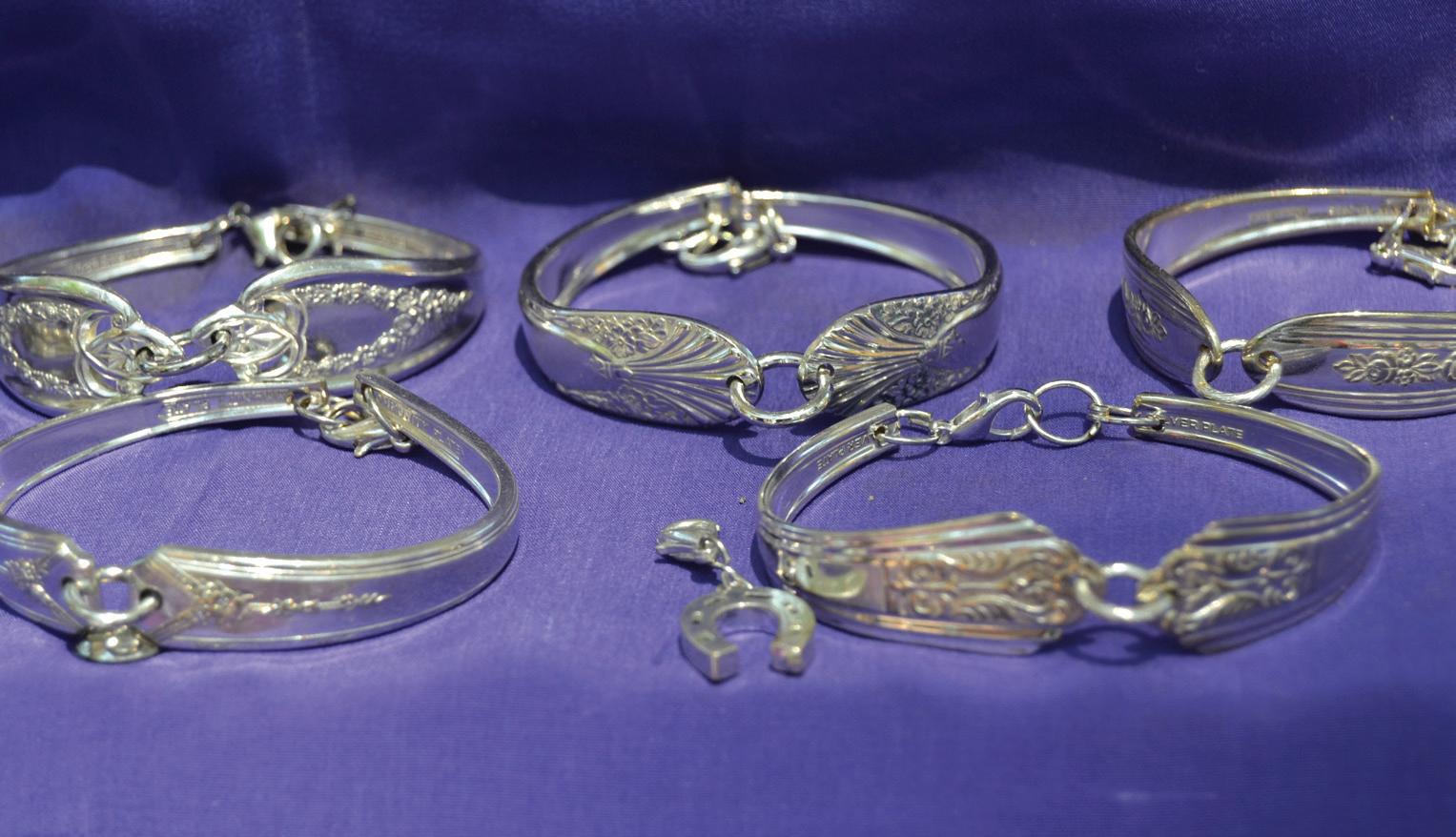
“In the old days,” said Emory, “everyone came to town with their handmade goods. There wasn’t any buying online.”

Over the years, Emory added more festivals. He now sells his handmade jewelry at seven to eight festivals a year with sometimes 40 to 50,000 visitors attending each event. He begins with “Peaches to Beaches,” known as “Georgia’s Longest Yard Sale,” the second weekend in March. For two days, vendors sell their goods along a stretch of road that runs over two-hundred miles through eleven Georgia counties. “It’s one of the best.” Following “Peaches to Beaches,” Emory goes to Uvalda’s Farms Festival followed by the Metter Blooming Festival on the Saturday before Easter. Back home, he returns to the Vidalia Onion Festival on the last weekend of April. Next on Emory’s calendar is Swainsboro’s Pinetree Festival in early May and


Dot Foods is probably one of the few companies that can say they’ve never had a layoff – EVER.


Zero layoffs in 55 years throughout our facilities nationwide. Now THAT’S stability.
Dot Foods – pioneers in redistribution – and a proud member of your local community.




the Glennville Onion Festival followed by a summer break. He finishes off the year in the fall with the Real Squeal in Lyons and the Million Pines Festival in Soperton.
“In the old days,” said Emory, “everyone came to town with their handmade goods. There wasn’t any buying online.” He was right. It was a different time. A time when people created goods by hand, and buying and selling was done with conversation rather than the stroke of a computer key. “I love meeting different people having a conversation. It’s nice when people enjoy looking at something you’ve made and like it so much they want to buy it. It’s really interesting that more and more young people want to buy the more old-fashioned pieces.”
In 2015, after serving the community for forty-two years, Emory and his cousin, Jimmy Davis, closed their business, Sea Island Cotton Gin. Now retired, between his lapidary work and grandchildren’s sporting events, Emory and Marge stay busy. “I have eight grandsons,” said Emory with a proud smile. If he’s not in his shop, he said, “I’m following kids around. We have three playing soccer right now, and all but two live around here.”
Thirteen-year-old Micah has already begun learning the cabochon technique from his
grandfather and sometimes helps out at festivals along with Emory’s sister Jane. There’s always something for everyone on Emory’s table from bracelets and spoon rings made from vintage silverware, a new addition to Emory’s handiwork, to beautiful sets of earrings, bracelets, necklaces, and pendants some with stones, some with beads. Kids are always drawn to the Indian jewelry. “I try to be as natural as I can.” And, of course, there’s the onions.

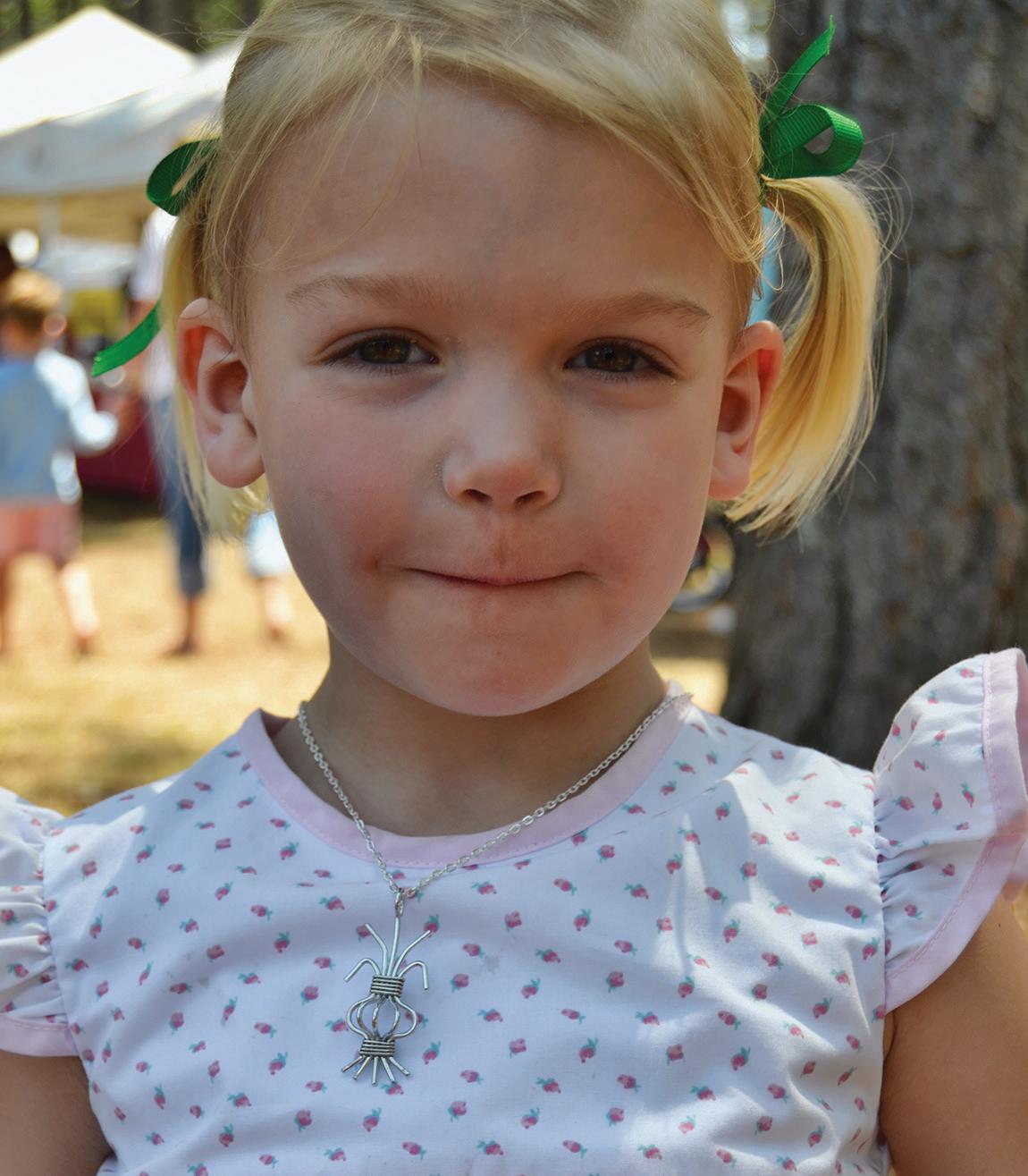
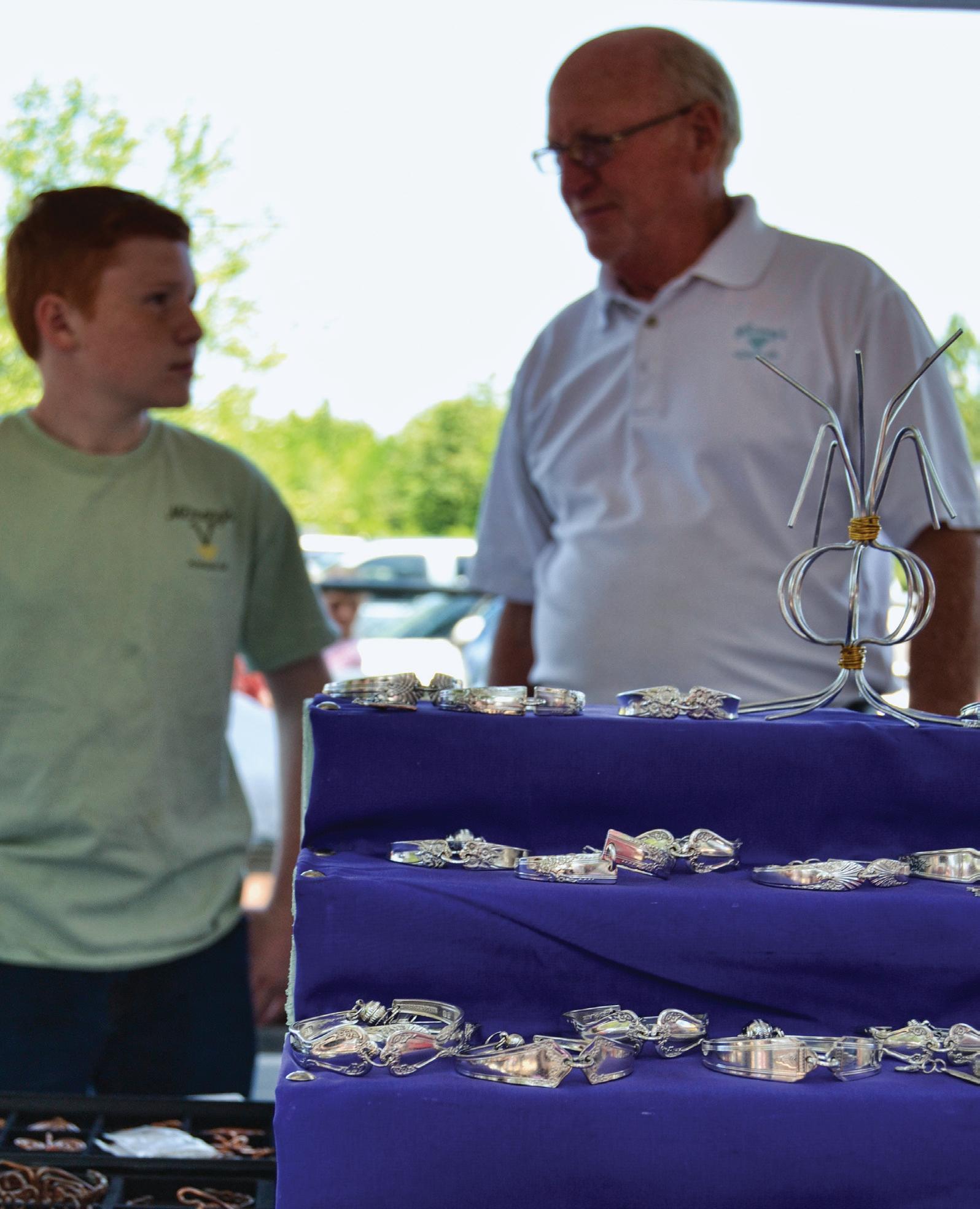
Yesterday, as I slipped my new find, an 1876 edition of Thaddeus of Warsaw, written by Jane Porter I found in a little bookstore in Doolin, Ireland, two weeks ago, next to my first edition of Louisa May Alcott’s Little Women, I thought about Emory.
“Once you find a beautiful stone native to the earth,
you can’t just walk through the woods anymore,” he said. “You pay attention. There’s not a lot around here. We have too much sand. I love my home, but I have to go out to find stuff. There’s really good amethyst around Warrenton and Tignall, Georgia, if you’re willing to pay a little something to search.
“There’s some gold in the creeks around Milledgeville, too. But people don’t take time to go look for it anymore. It’s not easy to find. If it was, everyone would do it. What we do have around here is rivers where you can search for Indian artifacts.”
Today, Emory has something far more valuable than a family business to pass on to his children and grandchildren. As he gathers the earth’s treasures, he gives voice to the beauty right at our feet. Whether it is a sapphire, like the gemstone his son Benjamin found all those many years ago, or a piece of obsidian created from volcanic glass, Emory’s passion for the earth’s beauty is a legacy of heart. And that is more valuable than any material possession he could ever hope to pass on. UTCM






The fertile soil and climate of Southeast Georgia has long been known for producing excellent food crops. Now it also provides an ideal setting for olive trees. Terra Dolce (Sweet Earth) Farms is proud to offer a fresh, tasty olive oil that will leave your mouth bursting with flavor. Don’t let your table be without it.












June 4 Tember Tales, 11 AM
June 7 STEAM Science Program, 4 PM (8 & up)
June 9 Game Night, 6 PM (8 & up)
June 11 Vidalia Karate, Paddington Bear & Games, 11AM
June 14 STEAM Microscope Class, 4 PM (8 & up)
June 18 Savannah Balloons, 11 AM
June 21 Lego Club, 4 PM
June 25 Magician Bill Packard, 11 AM
June 5, 12, 19, 26 - Brain Cave, 4-6 PM
Libraries offer more than just great books. The Vidalia Toombs County Library, which is pat of the Ohoopee Regional Library System has a full calendar of fun events for summer. Check out their schedule below or go to www. ohoopeelibrary.org to discover all the great things going on throughout the year.
July 9 Ranger Jodi, 11 AM
July 14 Stranger Things Escape Room, 4 PM (8 & up)
June 16 GSU Raptor Center, 11 AM
June 19 Lego Club, 4 PM
June 23 Poseidon: Georgia Aquarium Traveling Exhibit, 11 AM
July 10, 17, 24 - Brain Cave, 4-6 PM
For more information, contact the library at 912-537-9283
The Altama Museum of Art & History will have limited summer hours, but fall starts off with a bang. AutumnArtAltama! is the gallery’s fall artisan market and show. It will be held Saturday, September 16 from 10 AM to 3 PM. Artists and vendors are being sought for the market to share their talents with the greater Toombs area.
In addition, ALL are invited to get creative over the summer and transform an ordinary chair into something fun and extraordinary and have it exhibited during the event. Registration forms for artists/vendors and for the chair contest will be available at both museum entrances and on our Facebook page @AltamaMuseum.

The chair contest is open to all ages and skill levels. Once submitted, entries will become property of the Altama Museum. Prizes will be awarded in multiple categories and all proceeds raised from the chair contest will go toward the exterior restoration of the Altama Museum’s home, the historic 1911 Brazell House. For more information call 912.537.1911, email altama@ bellsouth.net, or Facebook @AltamaMuseum.
If you haven’t been to Altama Museum of Art & History lately, you’ve missed some great exhibits like this one by Mary Alice Harley. Her show “Animal Music” featured colorful watercolors and displayed her passion for music and whimsy. No need to fret if you missed it. The Altama will have new and exciting things coming this fall. Keep up with what’s going on by following them on Facebook/AltamaMuseum.










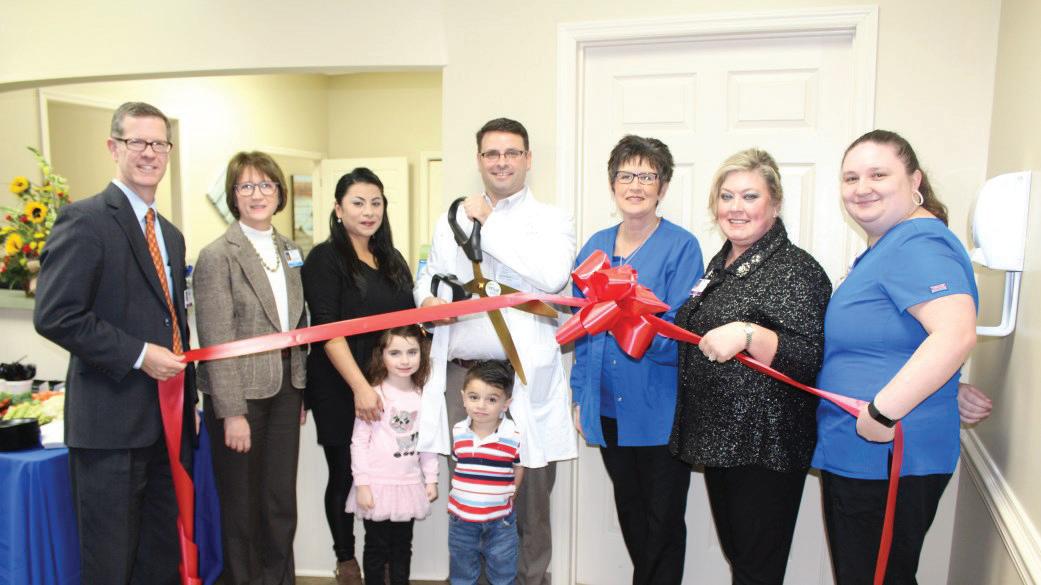


 Toombs-Montgomery Chamber of Commerce
Peoples Bank, Vidalia Branch
J. Leigh Hair Studio
Paul Thigpen Automotive Group
The Onion Inn
Salvation Army
Appearances Beauty Studio
Meadows Health Internal Medicine
Coastal Plains Charter High School
Toombs-Montgomery Chamber of Commerce
Peoples Bank, Vidalia Branch
J. Leigh Hair Studio
Paul Thigpen Automotive Group
The Onion Inn
Salvation Army
Appearances Beauty Studio
Meadows Health Internal Medicine
Coastal Plains Charter High School
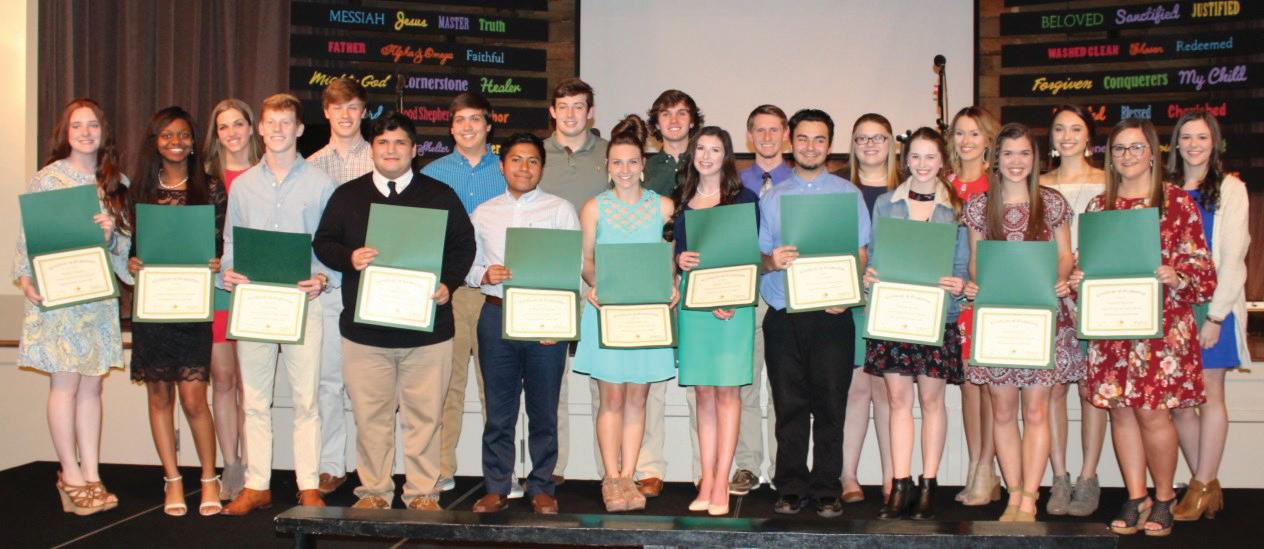
Communications/Promotions: E-News Weekly Update
Videos Social Media Online Calendar



Drugs Don’t Work Program
Self Funded Health Insurance Association
Ribbon Cuttings/Groundbreakings
Community Bucks
Online Business Directory
Members Only Business Referrals
Coordinate Workshops & Educational Seminars as Opportunities Arise

Networking/Sponsorship Opportunities: Annual Membership Meeting Pre-legislative Breakfast
Toombs-Montgomery Business Expo




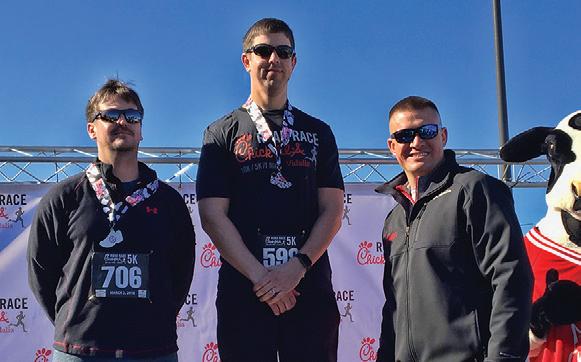








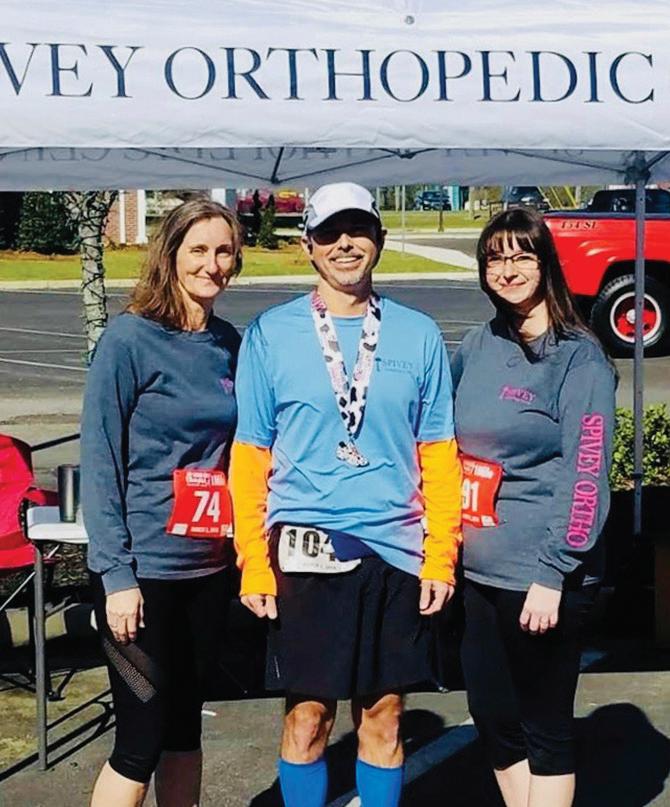


 The Chick-fil-A Road Race Downtown Vidalia
The Chick-fil-A Road Race Downtown Vidalia
Imagine going into work like you would on any other day. Then, you are surprised with the news that your employer is helping you get one step closer to fulfilling your educational dreams.
That is the feeling that over 5,700 Chick-fil-A Team Members coast to coast experienced when they each received $2,500 from the restaurant company. A total of $14.5 million in scholarships (including 13 Team Members who received $25,000 each) were given through Chick-fil-A’s “Remarkable Futures” education initiative. This year’s total award represents a $5.7 million increase since 2017 — the highest unrestricted per-employee scholarship investment in the industry.
Scholarships can be applied to any area of study at any accredited institution, including two- or four-year colleges and universities, online programs, or technical/vocational schools.
“The Remarkable Futures initiative is more than just a scholarship, it’s an investment in team members’ futures, goals and dreams,” said Rodney
Bullard, vice president of Community Affairs at Chick-fil-A. “We are thrilled to increase funding this year to help even more team members achieve their fullest potential.”
Chick-fil-A began awarding scholarships in in 1973, when Founder S. Truett Cathy sought a way to incentivize his team members to further their education. Since then, nearly 46,700 team members have been awarded a total of $60.5 million in scholarships. These students have gone on to attend more than 3,000 schools nationwide.

The Remarkable Future initiative provides three educational assistance opportunities:
• True Inspiration Scholarships go to 13 team members for $25,000 each.
• Chick-fil-A Leadership Scholarships were awarded to 5,728 students in 2018 for $2,500 each.
• Educational Assistance Opportunities include tuition discounts and educational benefits for 120,000 team members at 100 colleges and universities across the country.
Locally, two Chick-fil-A Vidalia
team members received the Chickfil-A Leadership Scholarship. They are Jenna Grace Morrison who will attend the University of Georgia and Malik Thornton of Vidalia High School who will attend East Georgia College.
Chick-fil-A Vidalia has received $12,500 over two years to local team members for college.

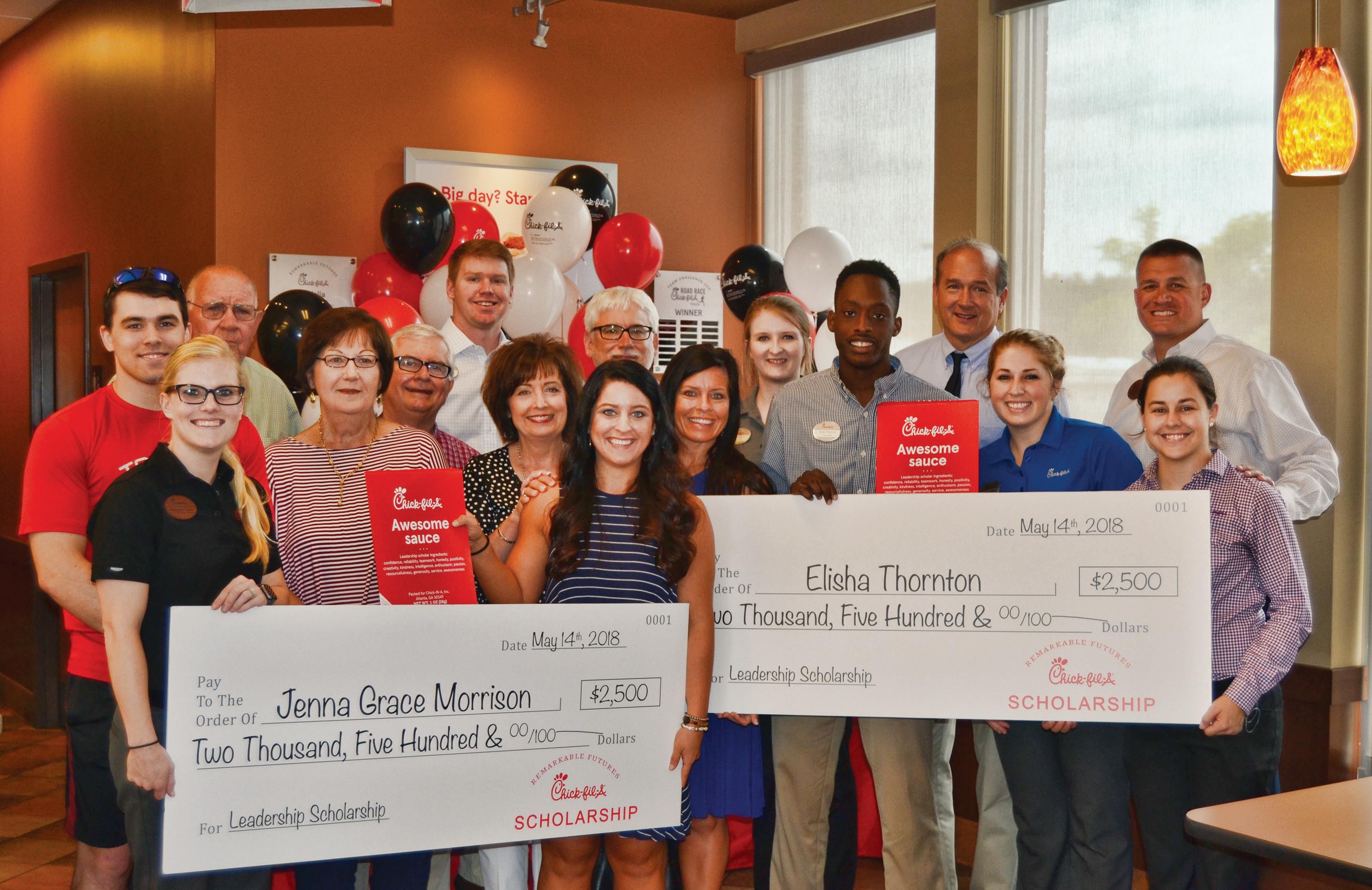
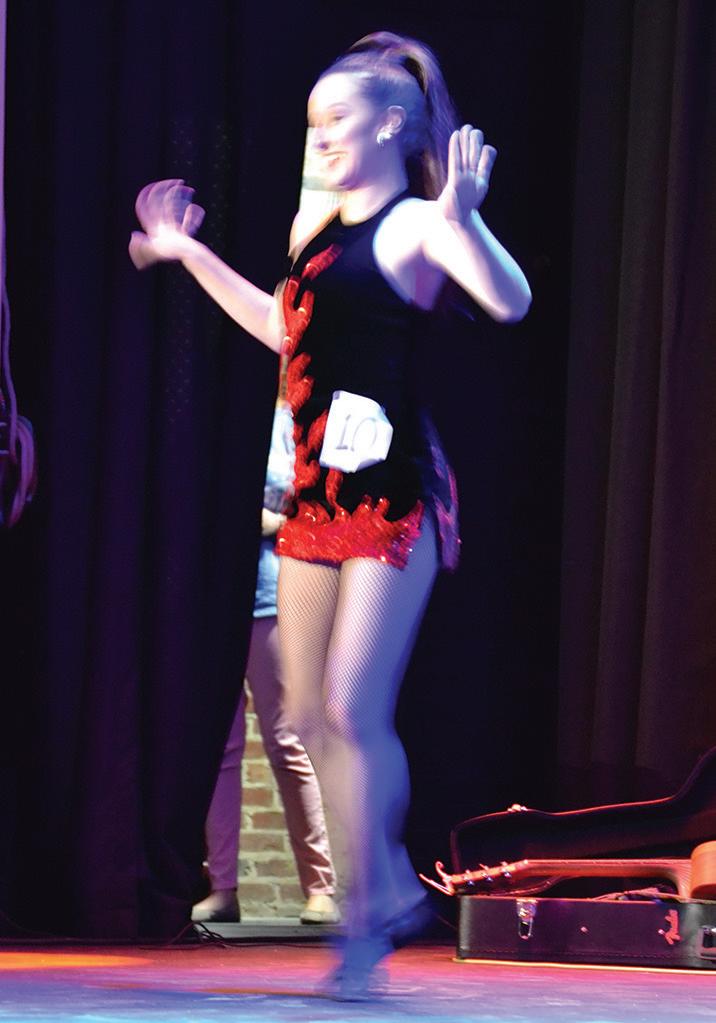







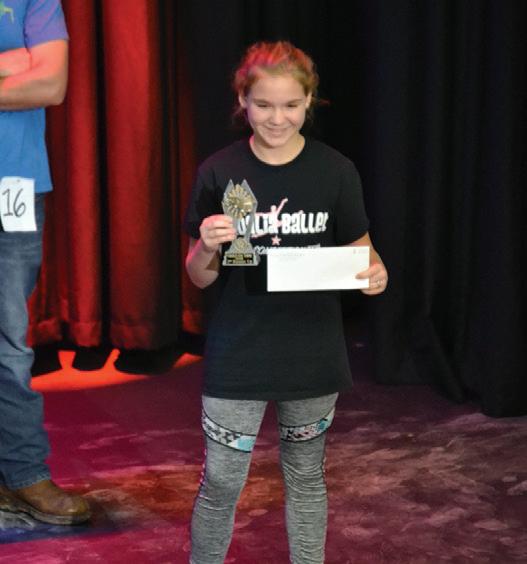

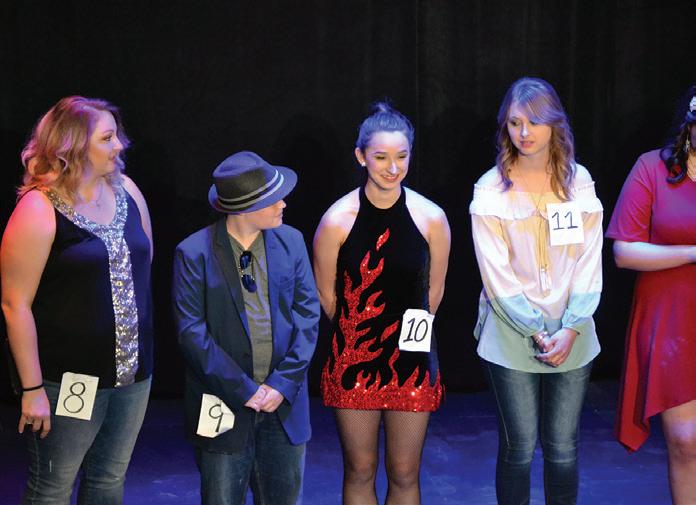



The New Pal Theatre, Downtown Vidalia


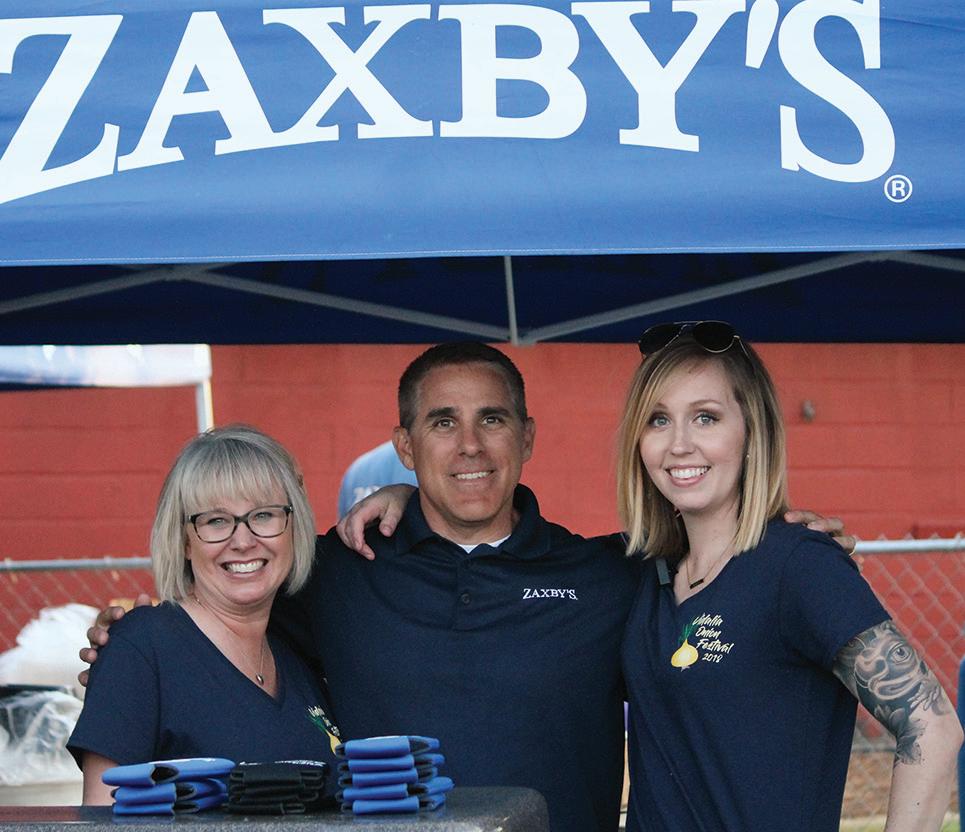


APRIL
Vidalia Onion Festival







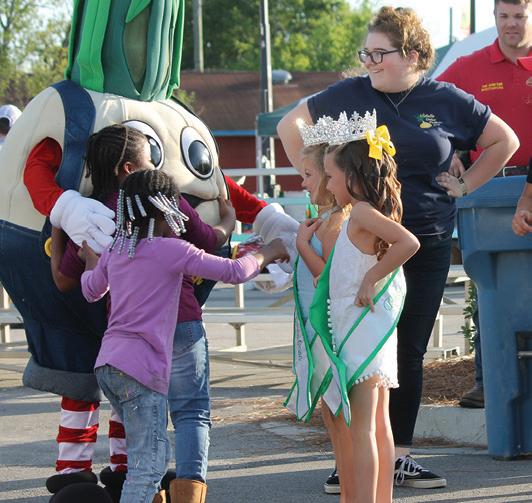


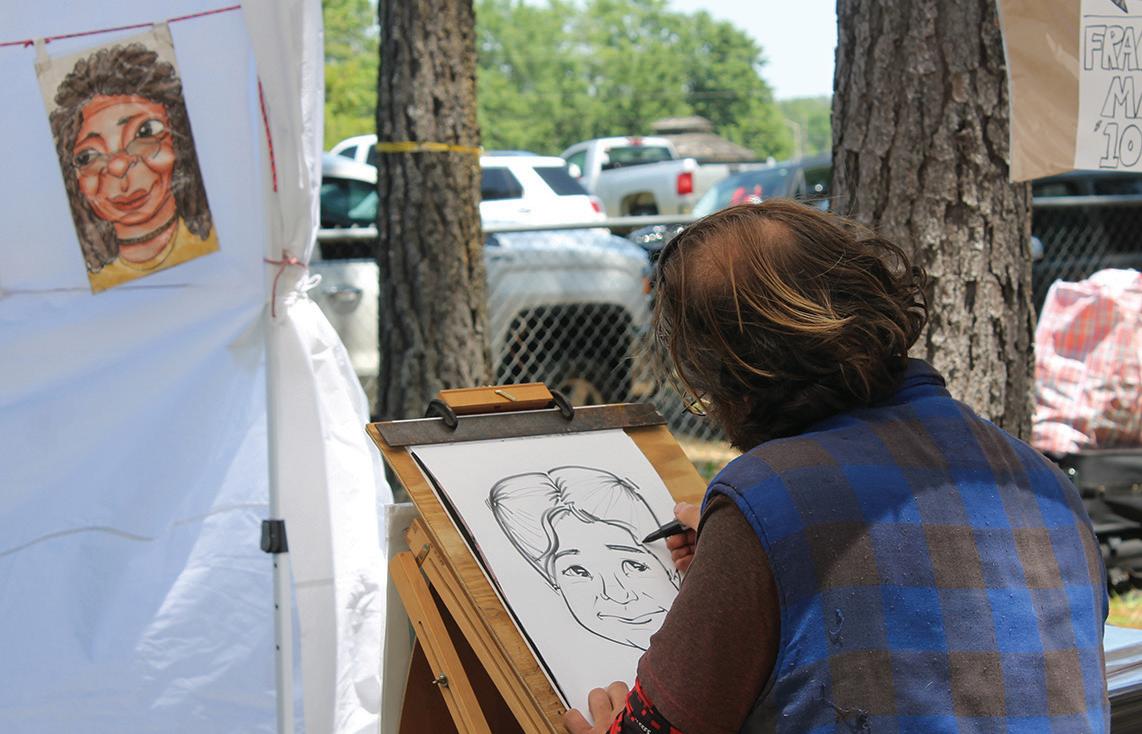




Downtown Vidalia
 Vidalia Onion Festival week is packed with fun and activities from the Sidewalk Chalk Competition, the Onion Run and Culinary Arts Demonstrations to music, arts and crafts, the midway and more. There is something for everyone to enjoy during onion festival week...even if it’s just a plate piled high with crispy onion rings fried up by the Downtown Vidalia Association.
Vidalia Onion Festival week is packed with fun and activities from the Sidewalk Chalk Competition, the Onion Run and Culinary Arts Demonstrations to music, arts and crafts, the midway and more. There is something for everyone to enjoy during onion festival week...even if it’s just a plate piled high with crispy onion rings fried up by the Downtown Vidalia Association.

The annual Little Folks Farm Fishing Rodeo held each first weekend of May had a great crowd this year. People of all ages enjoyed the fun, food, prizes and camaraderie of a leisure day of fishing. The family-friendly event helps teach kids how to enjoy the benefits of outdoor activities.

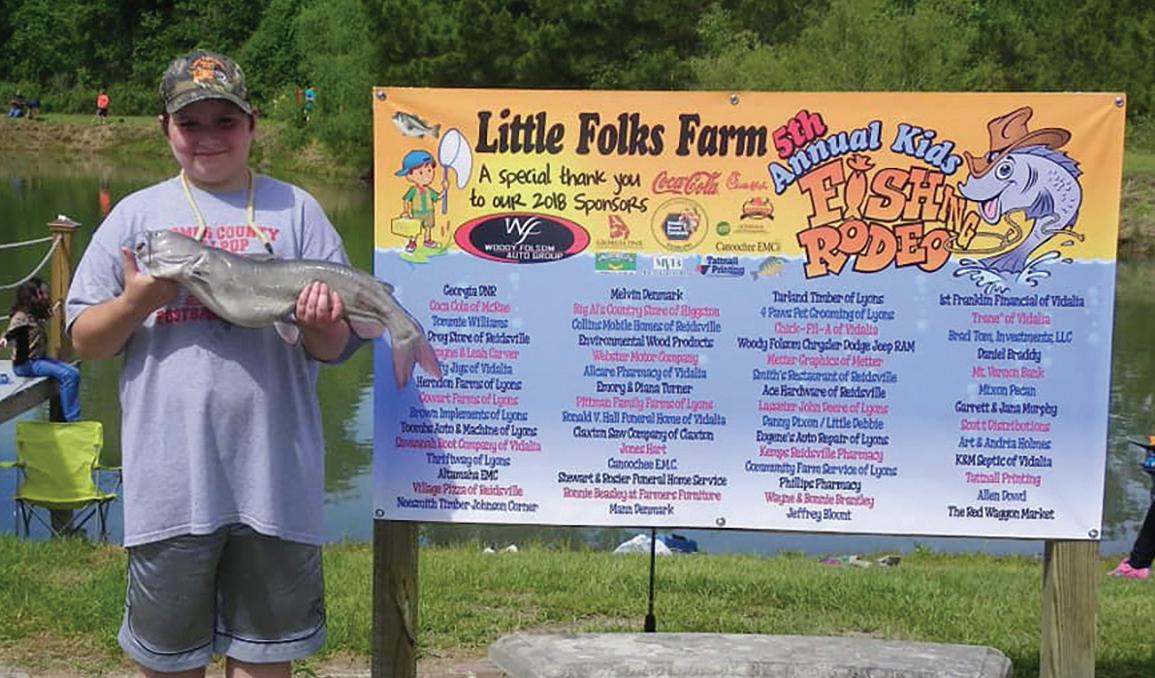

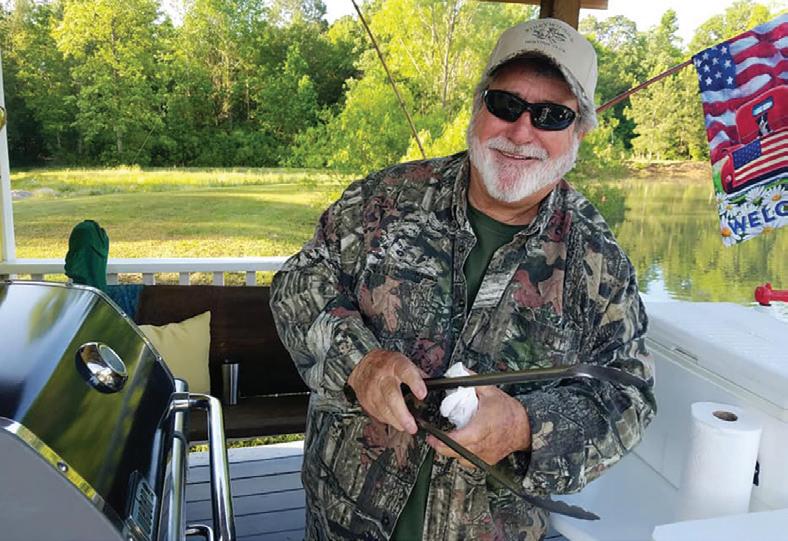


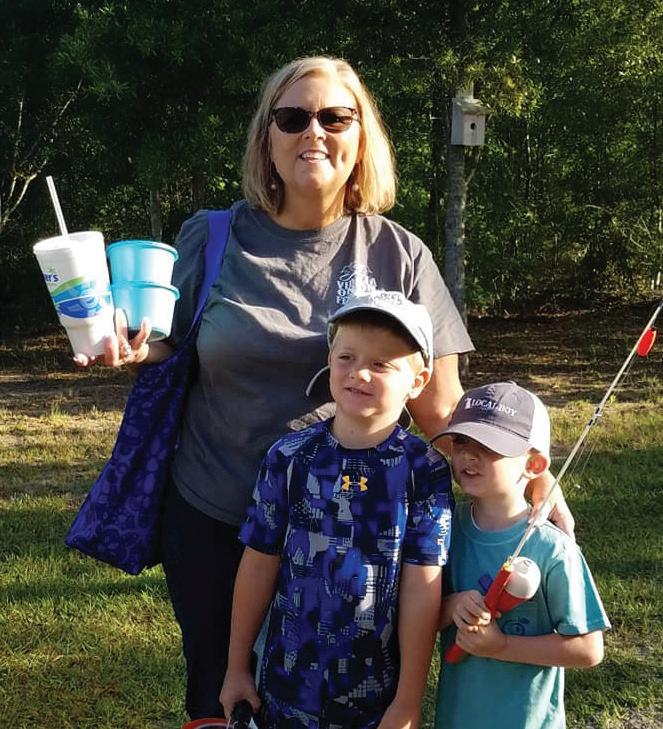

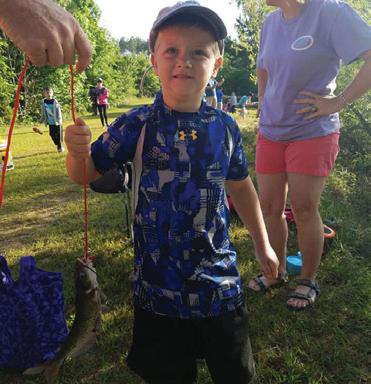

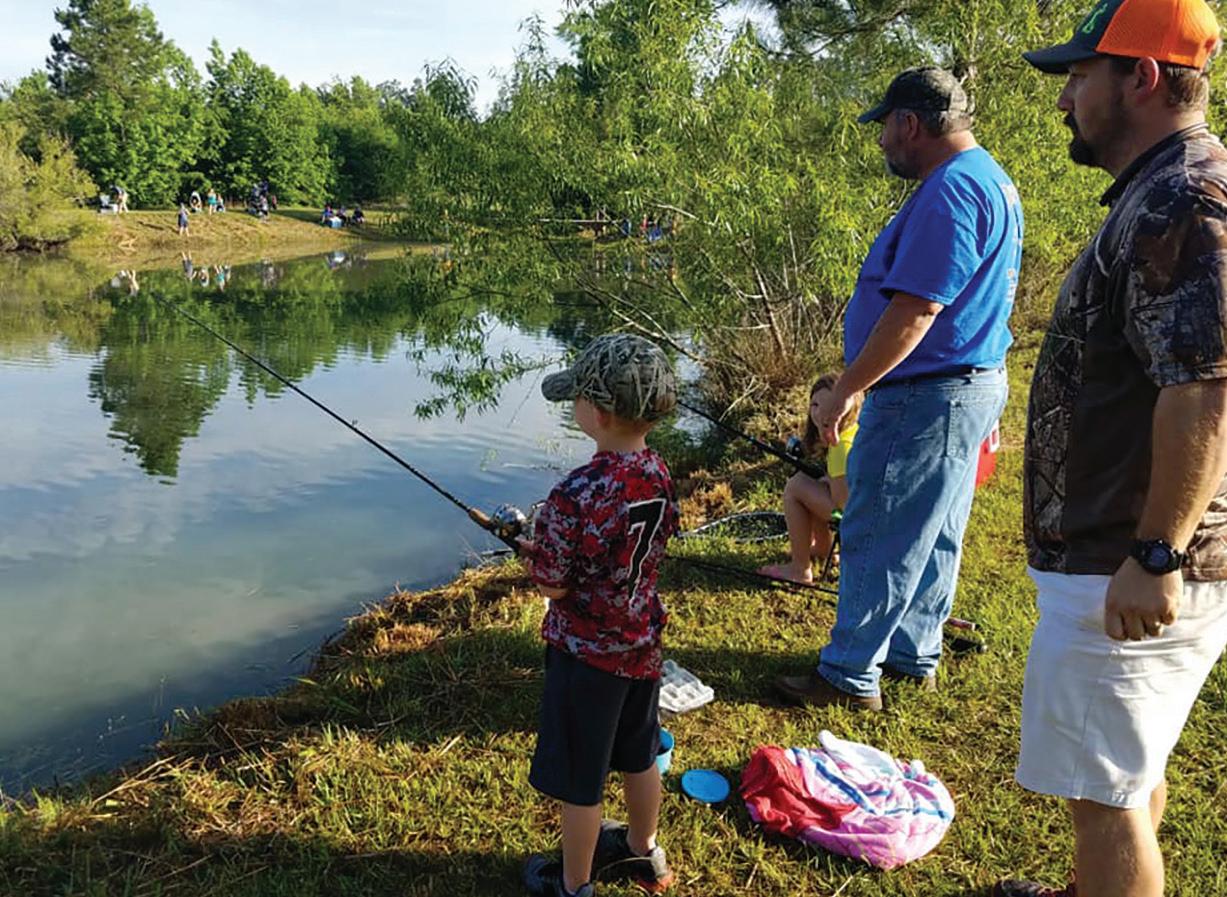
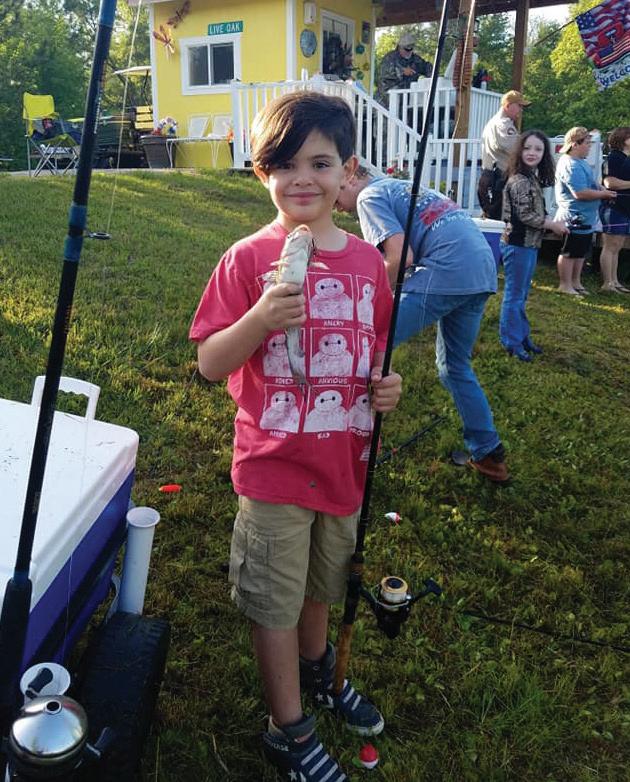


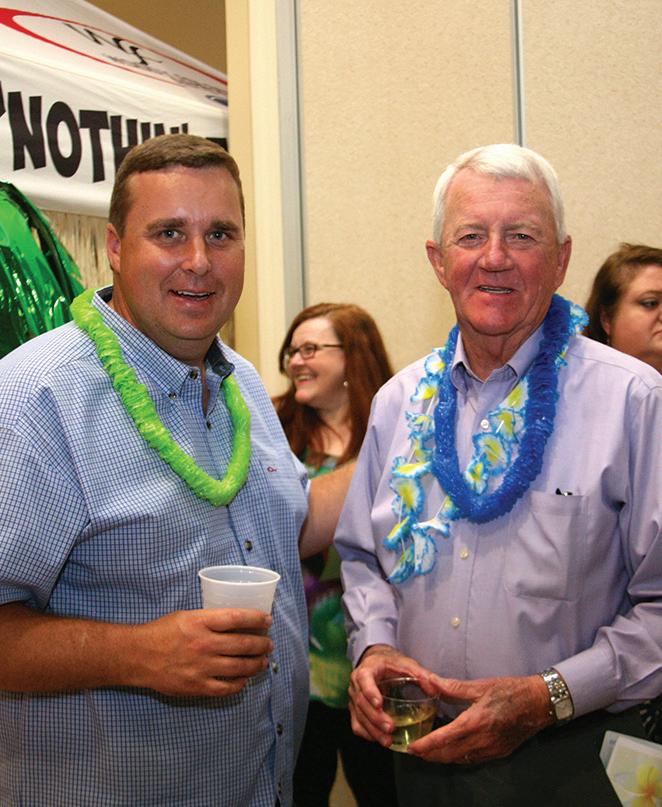

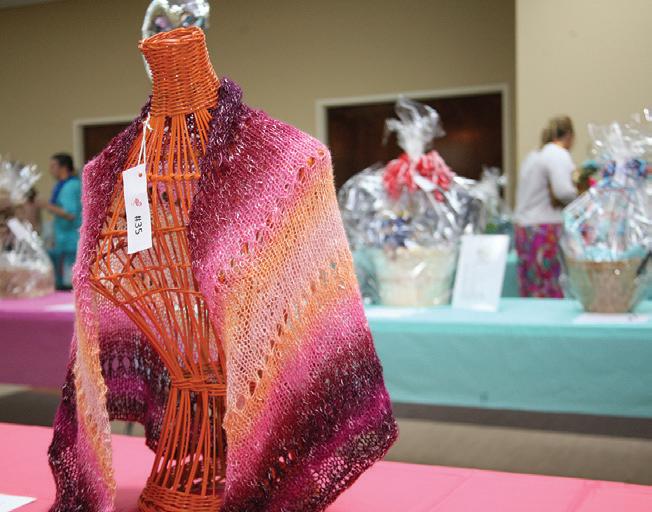
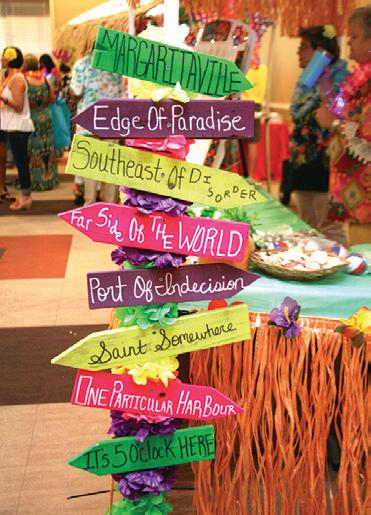
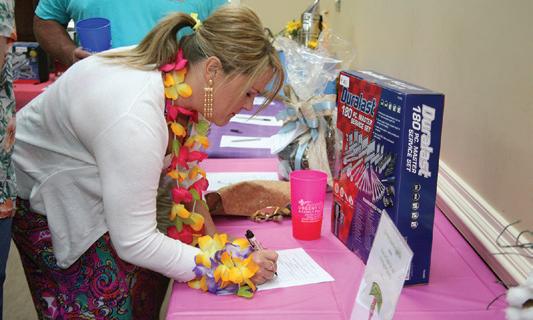









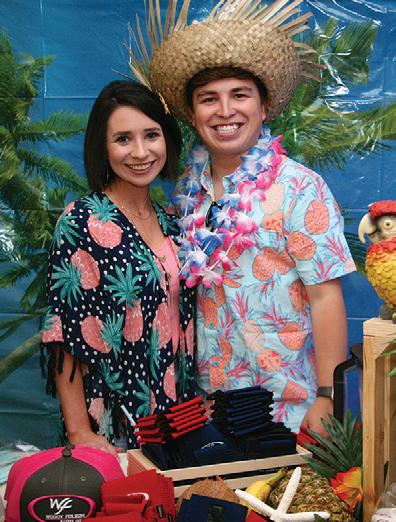






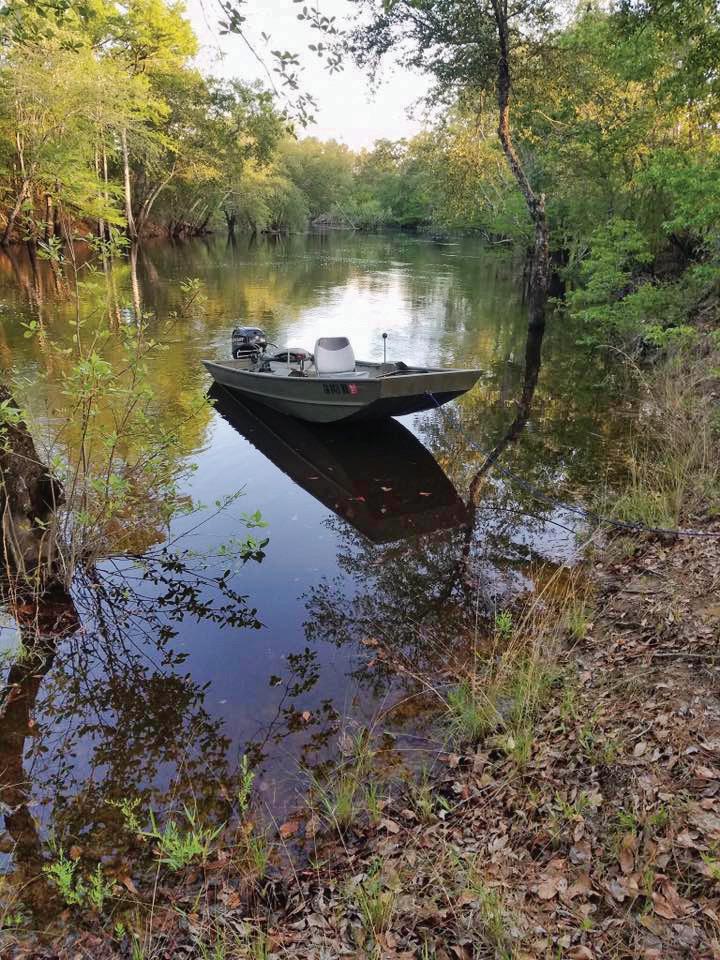

Hello Summer! We’re glad you’re back. After a frosty winter, there is nothing quite like the transition from bone-chilling cold to green landscapes and long, sunny days. Many of us wait in anticipation for the summer’s events to unfold: freedom from school, shoes and coats, a chance to take a vacation, and taking up water sports of any kind. Have you noticed that time actually seems to slow down a little during the summer months, the birds sing louder and the food even tastes better? This all makes the time between June and August a little more magical. Enjoy your summer and the fun of living in



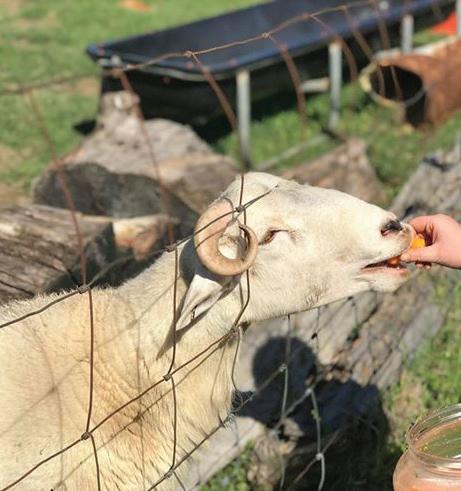 photo by | April Edenfield
photo by | Lillian Morse Burton
photo by | Joe Claroni
photo by | April Edenfield
photo by | Lillian Morse Burton
photo by | Joe Claroni



 photo by | Regina O’Neal
photo by | Joe Claroni
photo by | Joe Claroni
Facebook Photo of the Month/January
photo by | Regina O’Neal
photo by | Joe Claroni
photo by | Joe Claroni
Facebook Photo of the Month/January





 photo by | Diane Mixon
photo by Bob Coleman
Facebook Photo of the Month/March
Facebook Photo of the MonthFebruary
photo by April Edenfield
photo by | Diane Mixon
photo by Bob Coleman
Facebook Photo of the Month/March
Facebook Photo of the MonthFebruary
photo by April Edenfield


“Social media is the devil.” That’s what my much better half says, and I get that.
I will be the first to humbly admit that I may have a slight addiction with it. Okay, so I definitely do, but I’m desperately trying to wean myself off of it. I have found this process to be disturbingly difficult. While I thoroughly enjoy my job as social media director here at TCM, I must admit that it is only because I share the positive side of our community and not the weird stuff. It’s the weird stuff that gets to be too much.
Have you ever looked back on your past posts and thought “OMG…why did I tell people that?” Well, I certainly have. What’s for breakfast / lunch / dinner? Yeah, I’m one of those. Want to see my pretty sandwich or what I just cooked? In the real world, it is simply chicken, rice, and green beans, but it quickly turns into my own private Food Network photo shoot in Social Media World. I will “style” my plate with a little bit of parsley and describe it like it’s going on the menu at the Royal Wedding reception: “Boneless chicken breasts sautéed in olive oil served over a bed of fragrant jasmine rice complimented by fresh-picked, locally sourced green beans that have been steamed to perfection.” In the microwave–they were steamed in the microwave. That’s talent, right there, folks.
There also seems to be a good number of foot shots floating around out there, and I find this amusing. This is very brave in my opinion, as feet can either look really good or ewwwww. You will absolutely never see my feet perfectly framed in a photo, ever. I will not show them on the beach. I will not show them on the streets. I will not show them in a car. I will not show them in a bar (unless they are dancing feet and that possibly has happened… by accident). Obviously, I am jealous of you people with nice feet.
I have definitely–more than a few hundred times–bragged about my kids and complained about my kids on social media. Now that they are adults, I feel kind of bad for throwing all of their personal stuff out there for everyone to see. All I can say is, thank God my mom didn’t have social media. I look back

now on my ridiculously drama filled posts about graduations and weddings, proms, and all the other milestones in their lives, and I earnestly wonder why I did that. I wouldn’t stand on the steps of City Hall and announce to the world that Emma just drove off by herself for the first time, and it made me puke out of pure fear – like, I would NEVER do that. I would (and did), however, announce it to a few thousand of my “closest” friends on Facebook. Makes perfect sense.
I guess what I’m saying here, is not that I judge any of you for what you post because any rocks that I throw would boomerang right back and hit me square in the face. Hard–they would hit me hard and repeatedly. I am simply fascinated by what makes us want to share every aspect of our lives in such a manner. What makes us unable to share a conversation with the stranger next to us, and yet we accept friend requests and followers on social media by folks who don’t even speak to us in the grocery store or that we have never met at all? I quite seriously have “friends” on Facebook that do not even acknowledge me when I see them in public, but I have intentionally given them permission to look at my personal photos and see that I’m checking into Olive Garden in Statesboro with my kids. And repeatedly I have announced my absence while out of town and basically invited anyone into my home that wanted to come on in. Good grief. Admittedly, there are some really good things about social media, and it’s too bad that we can’t just limit it to that and call it a day. It really is fun to see all of your kiddos growing up, and I love seeing what their next adventures are. I have curated some fabulous recipes and household tips and have found old friends that otherwise would have been lost forever. I thoroughly enjoyed getting chatty with you gals on how romantic the Royal Wedding was and how we collectively sighed over the way the Prince looked at his Princess. I so appreciate the movie and book reviews, travel tips, weather warnings, lost & found animal network, and the good things that bring us together as a community and a nation. I will rejoice with you over finishing your last chemo
treatment, and I most definitely will pray for you as you begin your first. Because of the social networks, let us not overlook the fact that child abductors have been caught and families have been reunited. I cannot deny that the fact my mom’s house selling in 2 weeks and my being able to save her thousands of dollars in commissions (sorry, realtor friends) was directly related to Facebook and so many of you graciously sharing my post. I also think it’s kind of cool that I know all your maiden names and subsequently who your people are. I always know if you are a FB friend if you greet me with “Hey, Ann Foss Owens!”
Reality is that we have to take the good with the bad just like anything else in this crazy world. I do not understand the need to share videos of people beating children or animals and folks who wield their power as a “Keyboard Cowboy” to directly hurt an individual or spread idle gossip like wanting to be the first to share that someone has been in an accident or announcing their death. I personally have prematurely announced the death of a community member on FB. Thank God he had the kindness to pass away later that day, and I only looked like an idiot for a few hours. I only joke about this because his family got a very large laugh at my expense and assured me that their daddy would be laughing as well. I will never make that mistake again.
I’m going to promise to put my phone down more and to really live and see through my eyes directly and to record experiences and memories in my heart and head instead of through the lens of my phone or a post. I would so much prefer that you like me instead of “like” me and that you would actually come and sit at my table to eat chicken and rice instead of me embellishing my cooking abilities with you virtually. No matter how much we deny it, us social media addicts do it for some sort of attention and, in my book, a real hug is the best attention there is.
#steppingbackintoreality
#notvirtualreality
#iamalsoahashtagaddict
#thatisanotherstory
#thesearesohardtoread #icannotstop
#okiamdone
Social media can be good, bad and ugly, but finding the right balance is perfection.







